TCP – Ready for the future with and effi ciency











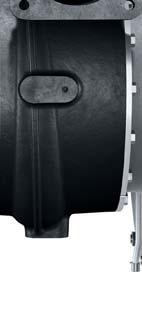
















 Dr Ebbinghaus: Shell leader’s overview
ME-GA-opti: DF fuel efficiencies
Dr Ebbinghaus: Shell leader’s overview
ME-GA-opti: DF fuel efficiencies
ALSO IN THIS ISSUE:
10.6
SEPTEMBER 2023 Vol. 104 Issue 1216 ↗ More information: air-management@pbst.eu www.pbst.eu Follow us at LinkedIn
Methane slip: WinGD aims lower Dirk Bergmann: Accelleron CTO interview
MAN
cutout | WinGD’s Weisser | AEngine update | HD KSOE LH2 project







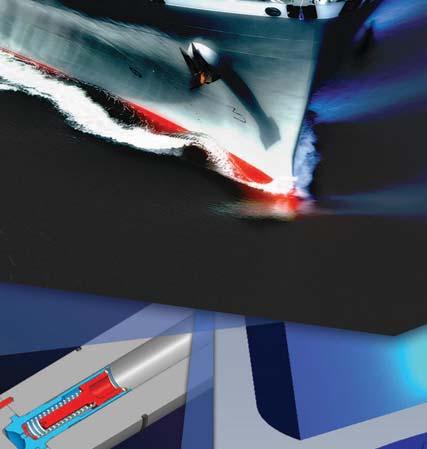



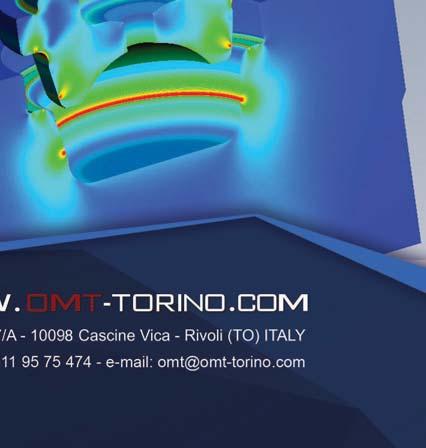
15
Hengli 2-stroke licence
FEATURES 5 6
Hengli Engine agreed a marine two-stroke manufacturing licence agreement with MAN Energy Solutions on 7 July, and plans to enter the marine engine building market.
15 Romanian reality holiday
Damen has relinquished operational control of the Mangalia shipyard, following the dilution of Damen’s involvement to a minority shareholding.
15

NH3 abatement tests
Mitsubishi Shipbuilding has begun demonstration tests of an ammonia gas abatement system at a Nagasaki R&D facility.
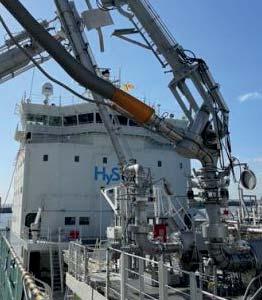
40 REGULARS
6 Regulation
Grant Hunter, Director of Standards, Innovation and Research at BIMCO discusses data exchanges between ports and ships, JIT arrivals clauses and harmonisation.
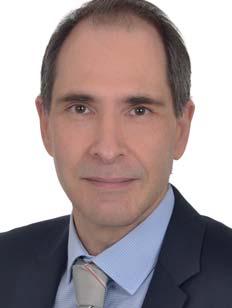

40 Design for Performance
The future commercial application of carbon capture and storage (CCS) technology, and its potential CII benefits for older vessels formed part of a recent Hong Kong project.
42 Ship Description
Bringing new scale to the ro-pax fleet deployed by Finnlines, the 235m Finnsirius is scheduled to start trans-Baltic service in September, writes David Tinsley.
18 EU SRR consultation
An EU consultation on revising the EU SRR is expected to increase the number of ships recycled in a responsible way and may introduce penalties for non-compliant owners.
20 MAN engine control algorithms
MAN Energy Solutions is using AI-like algorithms in the new engine control system for its Otto cycle, dual-fuel LNG ME-GA engines.

24 Taking methane slip lower WinGD outlined a series of upcoming design releases that will increase efficiency and reduce emissions in its latest X-DF2.0 engine at CIMAC 2023.
28 AEngine programme on track
Thomas S. Hansen, Head of Promotion and Customer Support at MAN Energy Solutions, 2-Stroke has provided an update on the new ammonia engine’s development schedule.
30 Direction of travel
Dr Alexandra Ebbinghaus, GM Decarbonisation at Shell Marine, highlighted the challenges and opportunities that the industry is confronting in an interview with The Motorship.
The Motorship’s Propulsion and Future Fuels Conference will take place this year in Hamburg, Germany. Stay in touch at propulsionconference.com
Social Media Linkedin Facebook Twitter YouTube Online motorship.com 5 Latest news 5 Comment & analysis 5 Industry database 5 Events Weekly E-News Sign up for FREE at: www.motorship.com/enews For the latest news and analysis go to www.motorship.com SEPTEMBER 2023 | 3 CONTENTS SEPTEMBER 2023 NEWS
28
44TH
VIEWPOINT
NICK EDSTROM | Editor nedstrom@motorship.com
Shape of things to come
The confirmation by Tasmanian aluminium shipbuilder Incat that it will be building the world’s largest full-electric ferry – a 130-metre lightweight ferry that will carry 2100 passengers and 226 vehicles for Buquebús on the River Plate link between Montevideo and Argentina – came too late to be included in this month’s issue.
The project is noteworthy as it will be powered by a 40MWh energy storage system (ESS), fully four times larger than any battery installation that has been constructed and installed for a marine transport application.
The project, which includes Wärtsilä and Corvus Energy among its project partners, will also see one of the first installations of a new ESS supplied by Corvus.
The new lightweight ESS, Dolphin NextGen, is based on a new cylindrical Lithium-ion battery that uses nickel, manganese and cobalt (NMC) cathodes. Corvus notes that the design draws on the architecture of the 4-year, multi-million development program for the Corvus Blue Whale ESS, which included a ground-up redesign that reevaluated and improved every aspect of battery design, including battery chemistry, mechanical and electrical design, and software building blocks.
Corvus notes that the Dolphin NextGen ESS is a game changer for marine battery projects due to its low weight and volumetric density, robustness, and unsurpassed flexibility. Hauso told The Motorship that the new cylindrical NMC cells offer a significantly lighter weight, lower C rate and higher power density than previous Li-Ion based solutions, and that this had significantly reduced the weight required by the battery installation. The cylindrical dimensions of the ESS, and the elimination of racks, meant that more Dolphin NextGen cells could be stored within battery rooms, without compromising safety standards.
In fact, the reduction in the weight of the battery installation was such that the full-electric highspeed ferry was actually expected to be lighter than the preceding dual-fuel LNG-burning design.
The implications for the introduction of lighter weight NMC batteries for the shortsea ferry market are profound, and are likely to accelerate the introduction of hybrid and full-electric designs into the segment.
The wider implications of the introduction of lighter weight NMC batteries into more weight sensitive segments of the market remains to be seen. The first installations of hybrid systems on PCTCs have entered service, but questions remain about the business case for installing larger batteries alongside 2-stroke engines.
The introduction of lighter and more energy dense batteries into the market is likely to improve the business case for diesel-electric propulsion solutions in the deep-sea market.
One area of the maritime sector that is likely to see rapid transformation as electrification begins to penetrate more widely into the shipping industry is ship recycling and end-of-life considerations. At present, the largest proportion of the value of material recovered from ship recycling is steel scrap, as Kari Reinikainen hears in an interesting feature on the consultation on the reforms to the EU Ship Recycling Regulations in this month’s issue.
However, the scarcity of some battery materials means that the European shipping sector can expect to be drawn into critical raw materials regulations, following the precedent of the European car sector.

ALL-ELECTRIC BOXSHIP FOR YANGTZE ROUTE
In a seminal development for China’s expansive inland shipping sector, a batteryelectric container vessel is set to be commissioned during the autumn on the Yangtze River. The 700TEU newbuild was launched on July 26 at the premises of COSCO Shipping Heavy Industry (Yangzhou), where the second-of-class was laid down in May.
The unique newbuild type employs a high-capacity energy storage system based on exchangeable batteries, which will feed two 900kW main propulsion electric motors. The project signals the adoption of fully battery-powered vessels on the inland waterways system, and is in keeping with the Chinese Government endeavour to promote ‘green’ investment along the Yangtze River Economic Belt.
The vessels have been allocated by COSCO Shipping Development to Group subsidiary company Shanghai Pan Asia Shipping for service between Shanghai and Wuhan, the city port 600 miles(65km) up the Yangtze. The design is of 120m length by 23.6m width, with a draught of 5.5m to facilitate handling on the waterway and its constantly changing conditions.
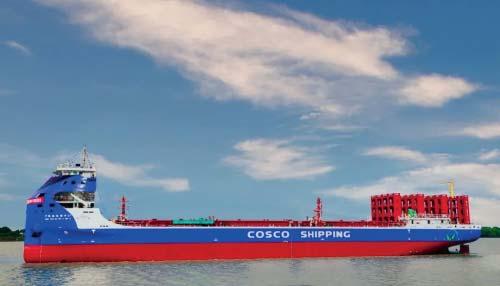
Each boxship will have exceptionally large installed battery capacity, whereby the battery installation will be in replaceable containerised units, accounting for 36TEU slots. As vessels proceed along their regular route, discharged ESS units will be swapped with recharged boxes at designated stations.
In addition, a ‘smart’ ship management system will be employed to increase operational efficiency. Capabilites will include ‘intelligent’ adjustment of energy consumption matched to the ship’s needs at any point, and voyage speed planning in accordance with scheduled arrival time, river current speed, battery capacity and other factors.
The vessel layout features an aerodynamic, forward superstructure and bridge, and raised cell guides on the after part of the weatherdeck above the machinery space.
COSCO claims that the vessel will be the most prominent in her category as regards environmental standing, reducing carbon emissions by some 32t per day relative to comparable boxship tonnage burning conventional fuel. The first-of-class, still referred to as hull number N997, is expected to commence trials at the end of September, and will undergo thorough verification of the power system before being phased into Shanghai Pan Asia’s Yangtze feeder network.
COSCO is one of the founding partners and a prime mover in the China Electrical Ship Innovation Alliance, which was established in February this year to promote the development of ‘green’ solutions. The ultimate aim of achieving carbon neutrality in shipping allies with China’s broader industrial and economic net-zero goals.
NEWS REVIEW 4 | SEPTEMBER 2023 For the latest news and analysis go to www.motorship.com
8 China is set to introduce a battery-powered river container carrier
Credit: COSCO
JAPANESE NH3 BUNKER BOOM PROJECT
TB Global Technologies Ltd. (TBG), the Japanese cargo handling equipment specialist, has signed an agreement with NYK to jointly develop Japan’s first bunkering boom for ammonia, a device used to supply ammonia fuel between ships.
NYK and TBG will significantly enhance the safety of supplying ammonia, which is highly toxic, to ships by employing TBG’s technology to ensure that the liquid does not leak.
TBG will receive from NYK data related to the development of its ammonia bunkering vessel (ABV), which received Approval in Principle (AiP) from ClassNK in September 2022. NYK will also share with TBG the knowledge gained from Japan’s first LNG bunkering vessel, Kaguya, which is operated by Central LNG Marine Fuel Japan Corporation, an NYK affiliate.
A bunkering boom is a device consisting of rigid pipes and hoses that connect a bunkering vessel to the other vessel to supply fuel. It is highly durable because it is made of rigid pipe, and its swivel joints allow it to change direction freely, making it easy to operate. In this joint development, the two companies will employ TBG’s technology to prevent the liquid inside from leaking out when the bunkering boom is emergently released from a ship due to a natural disaster, thereby tackling the biggest challenge in ammonia fuel supply, i.e., preventing leakage.
TBG concluded the first liquefied hydrogen (LH2) loading
New IBIA IMO rep
Dr Edmund Hughes has been appointed as the permanent representative of IBIA at the IMO. Hughes brings first-hand experience maritime policy, primarily focused on controlling ship emissions, to the role. While serving as the Head of Air Pollution and Energy Efficiency in the Marine Environment Division at the IMO, Hughes played a significant part in developing MARPOL Annex VI.
and discharge using a loading arm for liquefied hydrogen connected to a tanker in February and March 2023.
The agreement of the development deal with NYK for ammonia bunkering follows TBG’s successful conclusion of liquefied hydrogen loading and discharge using its bunkering solution at the Kobe Hydrogen Terminal as part of the HySTRA project in late February and early March 2023. The liquefied bunkering solution applied a vacuum double-walled pipe structure to the entire 6 inch diameter pipe. The liquefied hydrogen bunkering solution also included compatibility tests of sealing materials and tests with actual liquefied hydrogen solutions.
NH3 abatement system tests
Mitsubishi Shipbuilding Co., Ltd., a part of Mitsubishi Heavy Industries (MHI) Group, has announced the beginning of demonstration tests of an ammonia gas abatement system (AGAS) at its testing facility at Nagasaki District MHI Research & Innovation Center.

Mitsubishi Shipbuilding is currently developing an Ammonia Supply and Safety System (MAmmoSS), an ammonia handling system to support the utilisation of ammonia as marine fuel. As part of this development project, Mitsubishi Shipbuilding has begun demonstration testing of the Ammonia Gas Abatement System (AGAS), a subsystem of
Hengli Engine licence
Hengli Engine (Dalian) Co., Ltd., (Hengli Engine), agreed a marine two-stroke manufacturing licence agreement with MAN Energy Solutions on 7 July, and plans to enter the marine engine building market. The licence marks the entry of a new engine builder into the market in China. Hengli Engine is a subsidiary of Hengli Heavy Industry, which acquired the assets of STX Dalian including its shipyard in July 2022.
MAmmoSS to safely treat surplus ammonia. The tests have begun following the completion of the AGAS demonstration facility.
Mitsubishi Shipbuilding will conduct demonstration tests of the abatement system’s processing performance under various scenarios simulating onboard ammonia operations and as well as explore broadening the range of maritime industry through collaboration with related equipment manufacturers, developed ammonia-related technology will be applied for various industries to support its safe handling.
MammoSS comprises several subsystems in addition to AGAS,
Mangalia ownership
Damen has been compelled to give up management and operational control of the Mangalia shipyard, Romania’s largest shipbuilder and the biggest in Damen’s international network.
Following the change to Damen’s shareholding, Damen has terminated the joint venture agreement. The move does not affect Damen’s other, longer-established presence in the country: Damen Shipyards Galati.
including a high-pressure/ low-pressure ammonia fuel supply system (AFSS) and an ammonia fuel tank system. A key feature of MAmmoSS is that each of these subsystems can be modularised, allowing Mitsubishi Shipbuilding to provide the optimal modular configuration in a package for onboard plants consisting of multiple engines and boilers.
The Motorship notes that the development of both HP and LP NH3 fuel supply systems will ensure compatibility with a range of different ammonia combustion concepts.
BRIEFS
CCS LH2 AiP
China Classification Society has awarded an Approval in Principle (AiP) to Weishi Energy Technology Hebei for a liquid hydrogen (LH2) fuel supply system design suitable for use aboard marine vessels. The AiP is the first to be awarded by CCS for an LH2 fuel supply system. CCS worked with Weishi during the evaluation, which assessed the system principle, process flow, safety as well as the reliability of the marine LH2 supply system.
NEWS REVIEW For the latest news and analysis go to www.motorship.com SEPTEMBER 2023 | 5
‘‘
Ports must be able to check the background of all vessels and show bodies such as OFAC that they have the technology to screen ships for suspected sanctions evasion
8 TBG concluded the first liquefied hydrogen (LH2) loading and discharge using a loading arm for liquefied hydrogen connected to a tanker in February and March 2023
Source: HYSTRA
CHARTER PARTIES TO CHANGE TO ALLOW EFFICIENT SHIP OPS
There is a growing trend towards digitalisation in shipping and part of this covers exchange of data between ports and ships to allow ships to optimise their speed to avoid the need to wait for berths at ports
On the other hand, ships are expected to make best speed under the current charter parties and any departure from this could place the owner in breach of contract.
Grant Hunter, Director of Standards, Innovation and Research at BIMCO in Denmark says that standardisation, harmonisation and clarification of various aspects of procedures and charter parties are needed to ensure that the shipping industry can move ahead smoothly on this path. A clause in charter parties to allow early adapters to optimise the speed of their vessels is a viable suggestion and ultimately, the shipping industry’s business model would change and “inefficient” principles in current charter parties would vanish.

Harmonised data input important step forward
“I think a big focus for charter parties is that they will need to set out the standards for data exchange used during the charter period and clarify ownership and usage of data. There are currently numerous proprietary formats used for sending data from the ship to owners, managers and charterers. An example of this is the’“noon report’ – a set of data issued by every ship on a daily basis that includes information on distance sailed in the previous 24 hours as well as fuel consumption. It usually also contains a lot of other information about the performance of the ship, Hunter said.
implementation of the Maritime Single Window next year.
“From the shipboard perspective we have developed a clause to support the exchange of data between the ship and shore in a standard format. It is an agreement between owners and charterers that data related to port calls be exchanged using the IMO’s data model framework,” he noted.
However, surprisingly, there is no common standard for the format of this report. It may be that a ship manager uses one format while a charterer requires the information in a different format. This exposes data not only to potential clerical errors but also requires computer systems to “work without value” in translating data from different formats. “We recognise that the exchange of data, especially emissions related data, is becoming increasingly important to the industry. BIMCO is supporting the widespread adoption of an open source noon report format to help bring about a more harmonised approach,” he told The Motor Ship.
Ports currently also have their own reporting formats and fragmented sharing of data, but it can be expected that a more harmonised approach will emerge through the
Speed optimisation requires clear wording in charter party Moving on to the question of how can an owner avoid being regarded as breaching the contract if a ship slows down to reach port at an optimal time, Hunter said that one of the fundamental principles of standard voyage and time charter parties is that the ship’s master is obliged to “prosecute voyages with due despatch” – essentially that the ship must proceed to port as fast as it can safely go. Even if the charter party does not include a due dispatch obligation it may be implied under the national laws of many countries.
“Consequently, if the owners and charterers want to operate the ship more efficiently on a voyage, then they need to have very clear wording in the charter party that overrides the obligation to proceed with due despatch. If the ship slows down without addressing this issue then the owners would be in breach,” Hunter stated.
He pointed out that Slow Steaming Clauses have been developed by BIMCO to include in charter parties, which allows the speed to be reduced without being in breach of
REGULATION 6 | SEPTEMBER 2023 For the latest news and analysis go to www.motorship.com
8 Grant Hunter BIMCO
‘‘
Consequently, if the owners and charterers want to operate the ship more efficiently on a voyage, then they need to have very clear wording in the charter party that overrides the obligation to proceed with due despatch. If the ship slows down without addressing this issue then the owners would be in breach
the charter party - and any similar obligations towards third parties under bills of lading.
Operating a ship efficiently to reduce emissions by turning waiting time into sailing time also requires amendments to the underlying principles of the charter party. A “just in time arrival” scheme operates on the basis of an agreed berthing date and then an adjustment of the speed of the ship so that it arrives in time to go straight to the berth. This process saves fuel and reduces emissions, but keeps the length of the voyage the same - this is in contrast to slow steaming which extends the length of the voyage.
“Again, BIMCO has addressed this scenario by developing a Just in Time Arrivals Clause (JIT). However, JIT is a difficult concept to implement because unlike slow steaming - which is a bilateral agreement between owners and charterers - JIT requires a multi-lateral approach between multiple stakeholders: owners, charterers, cargo owners, terminal operators, etc.,” Hunter noted.

Asked if it is viable to include a clause in charter parties that would allow this if it mainly serves early adapters, Hunter said: “Yes, it is viable because it will not apply unless the parties choose to invoke it. What is important is that we have in place a contractual architecture that supports the drive towards more efficient shipping.”
Business model to develop towards whole supply chain focus
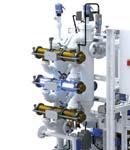




Ultimately, BIMCO believes that the industry will head towards a new business model that takes into account the whole supply chain to gain the full benefits of efficiency. This means that the 'inefficient’ principles currently in charter parties, but

often amended, would not form part of the agreement. It would take a much more collaborative and integrated approach and build on new incentives that reward efficiency.
It has been said that traditionally, a port authority, terminal operator and shipping companies have all remained in their silos, which has complicated data flow. However, Hunter said that this is gradually changing. “Yes, I believe it is beginning to change. It is noticeable in many of the larger ports in the world that they recognise the need for data transparency and sharing as a critical component of becoming more efficient and lowering emissions. Notably, ports such as Rotterdam and Singapore, to name just two, are very focused on digitalisation.”
As to how the business of shipping and the charter parties should evolve to allow voyage optimisation to develop without contractual complications to anyone involved. Hunter noted that BIMCO believes that to gain the full benefits of efficiency the industry will need a new business model that takes into account the whole supply chain.

“The cost of seaborne transportation and its related emissions are viewed by cargo owners as marginal. The impact of delays and emissions in other parts of the supply chain are potentially far more significant and costly. We need to align the commodity side with the shipping side to gain real efficiency.”
“BIMCO has an initiative to help develop a new business model – looking not only at changes in business practice and culture, but also the application of technology combined with a new contractual architecture. We call this initiative the “4th Way Project” and we are currently engaging with multiple stakeholders to find common ground,” he concluded.
REGULATION For the latest news and analysis go to www.motorship.com SEPTEMBER 2023 | 7 the safest route to compliance UV Ballast Water Treatment www.ballast-water-treatment.com more information Up to 2100 m3/h flowrate First class marine components Easy to install, use and maintain Worldwide service Available in SKID or modular version
REGULATORY AND TECHNICAL SOLUTIONS NEEDED FOR 2050
Dirk Bergmann, Chief Technical Officer of Accelleron shared his thoughts with The Motorship in an exclusive interview at the CIMAC conference in Busan
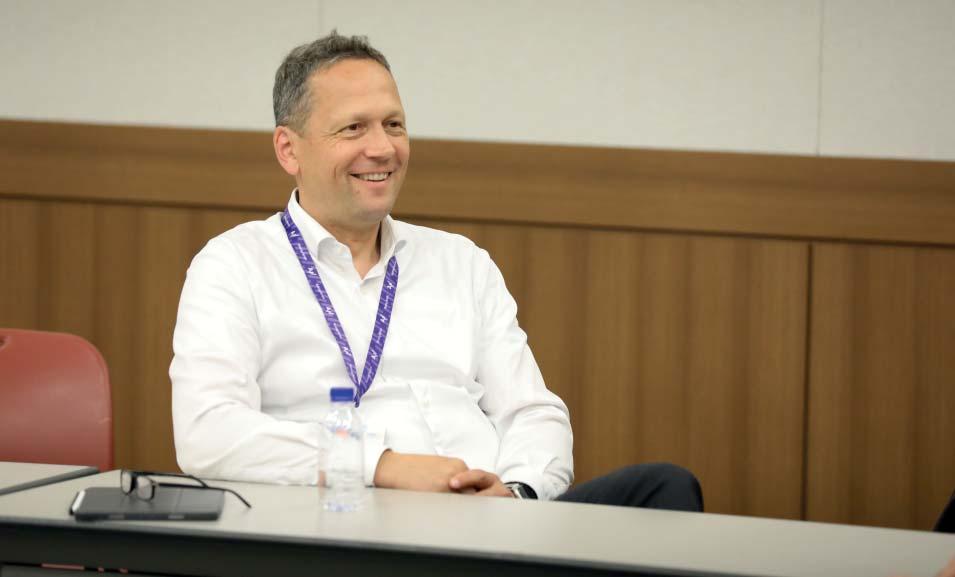
8 Dirk Bergmann, Accelleron CTO, noted that one of his takeaways from CIMAC 2023 was that, from a technical point of view, the engine technology to run on new fuels is available
Dr Bergmann is CTO at Accelleron, and the chair of the Greenhouse Gases Strategy Group at CIMAC. Thank you so much for agreeing to this interview.
Thank you for having me.
Having introduced you or your role as the chair of the greenhouse gas Strategy Group, I guess it the right place to start would be to talk about to obtain your views on the wider decarbonisation environment. It's obviously a complex time. So anything you can do to simplify it for our listeners, and readers will be gratefully accepted.
It is a great challenge that we as a marine industry must take, and we have taken it. Looking at the presentations at the CIMAC conference, we are on our way to finding the technical solutions to bring the CO2 climate effective emissions of global shipping down to zero.
There are a lot of routes we can go. And my perspective is that we will all see them in global shipping, because there are a lot of regional or company-specific boundary conditions, which favour the one or the other way to decarbonize. So, to sum it up a bit, there's a discussion about the possibility of decarbonising with hydrogen, but hydrogen cannot store sufficient energy [within volumetric constraints]. So, therefore, it will mainly be used for short distance travel, if you go for long distance travel, you need to have liquefied chemicals to carry the energy and now, there is a huge discussion in terms of methanol or ammonia, but also liquefied methane out of a carbon neutral pathway could also be the option.
If you look at these fuel types, they have their pros and cons… So, my favourite example is to think about a cruise ship. Everyone is sitting at the at the captain's dinner and you have the smell of ammonia wafting in. Depending on the concentration, I think you would run the risk of panic. For passenger vessels, there might be better fuels to use.
For vessels with only a trained professional crew, you can deal with small leaks with special dedicated respiratory and safety equipment. And the ammonia route has one advantage because after hydrogen, it is the e-fuel which can be produced with the fewest [conversion] losses, and it does not contain any carbon. And having nitrogen in the air with a concentration of about 70% or more, it's easy to get it out of the air. It is a very interesting fuel for international commercial shipping.
Turning to regulation, how do you see the role of regulation driving the uptake of new fuels or shipowners to invest in energy efficiency solutions?
Obviously, we're speaking before MEPC80.
As mentioned, I do expect that we will see all kinds of options in the global marine market, ranging from biofuels drop ins, as well as the already mentioned alternative fuels. We will need to have the regulations ready to use them on board a ship as a fuel… [with a] focus on the safety rules. But then the emissions legislation will have to adapt… to make it possible to run engines in vessels on these fuels. And then the major… outcome of this conference is that from a technical point of view, we as an industry can handle this and that there are already engines capable to running on these
LEADER BRIEFING 8 | SEPTEMBER 2023 For the latest news and analysis go to www.motorship.com
Q A A Q
Q A
fuels. The major question is where the fuel is going to come from and how we will be able to set up this infrastructure. This is a huge investment.

From a legislative point of view, to make these financial impacts feasible, we need pathways that provide a reliable and long-term return for investors to establish the infrastructure.
And I guess you could argue that that is one of the hopeful outcomes from regulation just to provide some certainty. I think that's a real challenge for suppliers as well as industry decisionmakers. And I guess you've spoken about alternative fuels. And that leads us neatly on to how you see the specific role of alternative fuels. I mean, there are a wide range of different solutions being considered but it seems that it's generally agreed that alternative fuels will play the leading part in in helping the industry achieve 2030 and 2050 targets.
That’s correct. There is a discussion about carbon capture technologies on board vessels for example, then you can extend the use of fossil fuel. But you then need to have the kind of CO2 bunkering and logistics behind this because you must store the captured carbon or CO2 somewhere and then you must deal with this.
Absolutely, and this leads us on to your own portfolio because there's a wide range of solutions being offered in the market. You’re having to meet the demands of quite an interesting period of development.
We're already seeing the differences between diesel or heavy fuel oil where we have normally a lambda (air to fuel ratio) of about two times more air and oxygen inside the combustion chamber compared with a lambda of about 1:1.5 for methanol. When we talk about ammonia, it seems to be in the direction of lower lambda values.
From a turbocharging perspective, within our technology portfolio we have already had to look a bit more on the performance map of our compressors and we'll need to make sure that the engine can safely run with it because ammonia is a fuel that does not really like burning.
So, there are some challenges. Addressing hydrogen, we expect to see it for power generation gas engines maybe also for short distance travel and vessels. And hydrogen is interesting because the turbocharging needs to go higher to a lambda of 2.5 up to 3. And this means the engine will need more air, the pressure needs to be increased and therefore we must do something with our turbochargers to make this happen. But again, it is within our thermodynamic knowledge to do so. Therefore, it will take some effort to adapt but I do not expect any major new research.
Another area I think will be interesting is how to deal with transient behaviour or transient operational behaviour. But even here, we are convinced that we can meet client expectations with our turbocharging portfolio and our knowledge with more than 180 R&D staff mainly located in our Swiss headquarters including our test centre.
I guess you're referring to some of the innovations seen in LNG engines 2-strokes, which looks like it is a very interesting space for squeezing a little bit more performance out and you're having to you having to fit around, I guess.
We are already gaining interesting experience with our customers.
And I guess this leads on to the last question, about your recent product launch, in which you announced that you're developing a new turbocharger family, which you will bring out next year. I also understand that you're in the process of acquiring OMT in Italy. From a strategic point of view, it looks like you're going to be a really relevant company with experience in all areas around the engine. We are already a very relevant company since we are currently involved in high-level discussions with our customers, both from an engineering as well as from a strategic decarbonisation perspective. Our new low-speed 2-stroke turbochargers, which we just introduced officially during this conference, are designed to fit perfectly into next generation engines dedicated for defossilisation. And yes, the acquisition of OMT will bring us into an even better position to plan injection systems in our portfolio and support our colleagues in Italy in their research and development efforts into all the new fuels… For new types of fuels, you cannot use standard diesel fuel injectors, so there will need to be some new developments there.
It is the best time to be an engineer, as so many things need to be changed now to meet the environmental challenge we have in the global society. This will require new technical solutions to be ready soon if we want to maintain our standard of living. And this is, again, the outcome for me from this conference.
LEADER BRIEFING For the latest news and analysis go to www.motorship.com SEPTEMBER 2023 | 9
‘‘
From a legislative point of view, to make these financial impacts feasible, we need pathways that provide a reliable and long-term return for investors to establish the infrastructure
Q A Q A A Q Q
8 Worse things happen at sea: maritime media interviews hold few fears for Dr Bergmann
A
DATA IS AN ALLY IN THE MARITIME DECARBONISATION BATTLE
Across the vast expanse of the world's oceans, a revolution is underway – one that seeks to transform a major contributor to global carbon emissions: shipping. As international concerns about climate change continue to mount, the maritime industry finds itself under increasing pressure to embrace sustainable practices
8 Data-led solutions, such as the Blue Visby initiative, offer a partial solution to congestion at busy ports, such as Hong Kong (pictured)
Collectively, our industry already has a growing understanding of some of the key solutions that will help us to decarbonise. The role of alternative fuels is well understood but the transition remains some years off, with supply and infrastructure concerns still yet to be solved. Improvements to vessel design that prioritise both efficiency and the safety and comfort of seafarers are progressing at pace, and the industry has gained more trust in clean technologies and other efficiency solutions. Vessels today are harnessing wind, waves and, in some cases, air bubbles to trade whilst burning less fuel.
Amidst this challenge, a new ally has emerged from an unexpected source: navigational data. Critical to safety of life at sea, navigational data also has a new role to play in enabling us to make substantial strides towards decarbonisation.
At the heart of modern shipping lies a sophisticated network of sensors, satellite systems, and advanced technologies that constantly gather a wealth of information about a vessel's journey. From GPS and radar systems to weather forecasts and real-time traffic data, these sources of navigational data provide an intricate picture of the maritime environment. This data isn't just limited to the ship itself. Significantly, it extends to encompass the surrounding sea conditions, depths, currents, tides and more.
This information has long been understood for its role in underpinning safe, compliant ship operations. From the very earliest forays into hydrography, to today’s modern, mature data gathering and handling activities, the industry has a well of information spanning countless petabytes that can be marshalled in support of our collective decarbonisation ambitions.
This information is powerful because, by its very nature, it can provide owners and mariners with an authoritative view
of the world around them. Previously, this view has been mainly focused on hazards, depths and other issues associated with navigating in the marine environment. Now, we are ready to go much further.
Optimising routes, cutting carbon
One of the primary ways navigational data supports decarbonisation is by enabling more efficient route planning. Traditionally, ships follow established routes that might not always be the most fuel-efficient, leading to unnecessary and avoidable emissions. With the advent of advanced data analytics and machine learning algorithms, shipping companies can now analyse historical navigation patterns alongside real-time data to identify optimal routes that take advantage of favourable currents, winds, and sea conditions.

At its core, route optimisation is like a complex puzzle, with the pieces made up of wind patterns, currents, waves, and traffic lanes. By analysing this data, ship operators can chart a course that's not just the shortest, but also the smartest.
The sea is unpredictable, with conditions that can change in an instant. That's where real-time data shines. Imagine the ship receiving updates about an approaching storm or a sudden change in currents. With this knowledge, the ship's route can be adjusted on the fly, ensuring the vessel can proceed safely whilst also keeping fuel consumption in check.
Furthermore, navigational data can be integrated with sophisticated emission monitoring systems on board. This integration enables real-time tracking of a ship's fuel consumption and emissions output, allowing operators to make immediate adjustments to optimise performance. When combined with insights from navigational data, operators can make informed decisions about speed adjustments, engine load optimisation, and other factors that impact fuel efficiency.
DIGITALISATION 10 | SEPTEMBER 2023 For the latest news and analysis go to www.motorship.com
Credit: A Wilson
This not only reduces carbon emissions but also leads to substantial cost savings for shipping companies.
The power of just-in-time arrivals
Sustainability is not just about getting from point A to point B; it’s also about what happens at either end of the journey, which is why the concept of just-in-time arrivals has gained such prominence in recent months.
Imagine a ship arriving at its destination in its very own ‘Goldilocks zone’; not a moment too soon or a second too late. By leveraging navigational data in a connected marine data ecosystem, ships can effectively synchronise their journeys with port operations. No more waiting in line for a berth or idling in anchorages. Instead, ships approach the port precisely when their turn is due, minimising downtime and emissions.

The implications of just-in-time arrivals are immense. According to estimates from the International Maritime Organisation, this practice, fuelled in part by navigational data, could unlock an impressive 11% reduction in fuel consumption and emissions in the near term. In other words, if we can unlock just-in-time arrivals at scale, it would be similar to installing free clean technology on every vessel in the global fleet.
The UK Hydrographic Office (UKHO) is contributing to the advancement of just-in-time arrivals through our participation in the Blue Visby Consortium, which aims to bring to market the Blue Visby Solution (BVS).
The Blue Visby Solution seeks to address the issue of justin-time arrivals by introducing a queuing system for ships bound to the same destination port. The system will synchronise and optimise the ocean passages of a group of vessels, allocating optimised arrival times, and ensuring an arrival frequency at which the port can handle.
As part of the consortium, the UKHO has contributed to the Blue Visby Solution by concepting the Blue Visby ‘Blue Box’ – a feature determining the start and end point of a BVS optimisation.
Using our ports database, coastline data and information we hold on anchorages, we were able to create a 14 nautical mile ‘arc’ that vessels will pass over at the end of a voyage, minimising navigational impact and maximising optimisation potential. From this proof-of-concept, we are continuing to work with Blue Visby to take the next step and establish how these arcs can be drawn and displayed on navigational products and back-of-bridge software applications.
Green Shipping Corridors: cooperation to drive decarbonisation
Meanwhile, navigational data also lays the foundation for the creation of green shipping corridors. These corridors, marked by optimised routes and sustainable practices, offer a blueprint for reducing the carbon footprint of maritime transportation.
Rather than a rigid set of regulations, a green shipping corridor could be better described as an ecosystem of public and private actions and initiatives, similar to a special economic zone. These actions and initiatives can include port and ship technology, fuel usage, and voyage optimisation. Green corridors can operate domestically, short-sea or across continents and multiple ports.
Public investment, extension of fossil fuel subsidies to zero-emission fuels, and targeted policies that introduce best practice guidelines all help incentivise the adoption of new technologies and our shared decarbonisation goals.
Navigational data plays such a pivotal role because of its ability to clearly and accurately represent the marine environment that ships much travel through. This information
is invaluable for planning, monitoring and optimising activity within a green shipping corridor – and may even be able to be used to underpin investments in fuel and other marine infrastructure.
Collaboration is required, not optional

All of these use cases for navigational data in shipping’s battle to decarbonise are brilliant, but we cannot achieve any of them alone. Navigational data’s potential will only be fully realised through collaboration, innovation, and by adopting a whole systems approach. Industry stakeholders, from shipping companies and technology providers to regulatory bodies and research institutions, must join forces to harness the transformative power of this data.
Initiatives such as data-sharing consortiums and collaborative research projects are now emerging across the industry. For UKHO’s part, we are collaborating with stakeholders across the maritime ecosystem to develop solutions that leverage and unlock the power of navigational data.
For example, as a knowledge partner on the Global Maritime Forum’s Short-Term Actions Taskforce, the UKHO is offering its hydrographic expertise to contribute to key research and insight pieces that will help unlock the potential of operational efficiencies and the fuel economies that come with it.
Meanwhile, the UKHO has joined the Smart Maritime Network as a Smart Maritime Council Member. Through this, UKHO representatives regularly meet with other industry stakeholders within the network to offer expertise on hydrography, maritime navigation, and data sharing to help achieve the network’s shared goals.
d features like
e to allow for
For us, all of this will be enabled by the next generation of marine navigation technologies and solutions, including the International Hydrographic Organization’s new S-100 data standards, which will enable an improved mariner experience, easier chart updates, the display of more complex navigational information, and features like dynamic under-keel clearance to allow for more accurate, safe and efficient navigation in coastal and port waters.
As the maritime industry continues its journey towards a greener future, navigational data stands as a testament to the untapped potential that lies within the intricate dance of vessel, ocean, and technology. This hidden ally is not only reshaping how ships navigate the world's oceans, but is the compass by which we will steer towards a more sustainable and resilient maritime sector.
By harnessing the full power of navigational data and fostering collaboration, the shipping industry can sail confidently toward a future where environmental stewardship and operational excellence harmoniously coexist on the open seas.
ntinues its er future, estament that lies f dden s compass a more aritime wer of ering stry
DIGITALISATION pp
nt
a al l For the latest news and analysis go to www.motorship.com SEPTEMBER 2023 | 11
The sea is unpredictable, with conditions that can change in an instant. That's where real-time data shines
ce
8 Charlie Fardon, Head of Sustainability, UK Hydrographic Offi
95-BORE LGIM ENGINE READY FOR MAERSK NEWBUILDINGS
Representatives from MAN Energy Solutions and A.P. Moller – Maersk presented an update on the methanol engines powering recent newbuilding orders at CIMAC 2023, including the new 95-bore developed for larger vessels
Maersk’s string of methanol-fuelled newbuilding orders has seen the demand for methanol engines skyrocket, and MAN introduced a 95-bore version of its LGIM engine, after the initial 50-bore engine, to cater for the larger vessels being ordered. Maersk has now ordered 19 vessels with the MELGIM engines design, the first being a 2,100 TEU container feeder to run on methanol using a G50ME-C9.6-LGIM engine.
Methanol engine technology for the smaller 50-bore LGIM engines has been in operation since 2016, and there are now more than 20 of these engines in service Maersk’s initial order for the feeder vessel was followed by 16,000 and 17,000 TEU vessel orders requiring a larger bore engine.
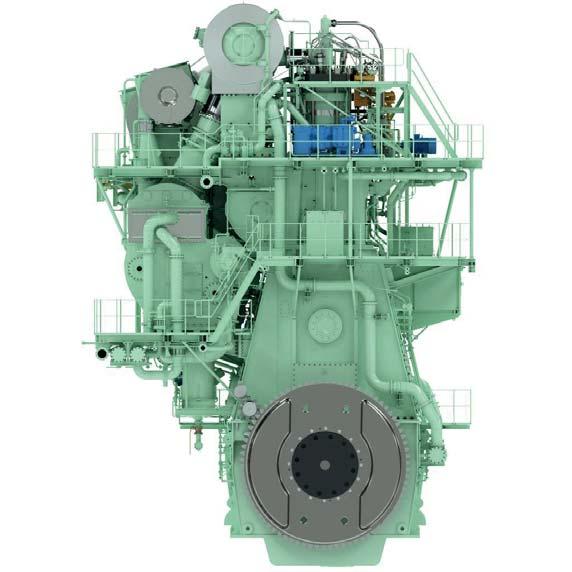
Development of the G95ME-LGIM required more than just scaling. Differences in injection pattern and engine component sizes were required to ensure high efficiency, adequate power and Tier III NOx compliance in both methanol and fuel oil modes. This engine requires injection of methanol of 1.8m3/hour per cylinder which is about twice that required for diesel mode due to its lower calorific value. This required increased supply of high-pressure hydraulic oil and a power supply that was approximately 66% higher than the 50-bore engine. This in turn required an upgraded chain drive delivering the power, and the design had to allow for engine vibration.
The new 95-bore LGIM engine has similar combustion chamber components to the G95ME-C10.5 standard design except that the injection system includes a hydraulic power supply, control block for liquid gas injection, diesel fuel injection valve and fuel booster injection valves for methanol. The control block includes high-speed analogue control valves for regulation the methanol injection pattern and timing. The cylinder cover is also similar to the G95ME-C10.5 except that there are channels and holes for the extra valves.
Specific fuel oil consumption (SFOC) is optimized. This was possible because methanol’s lower flame temperature means intrinsically lower NOx production in the jet flame –NOx emissions are approximately 30% lower on MAN’s twostroke B&W engine when compared to fuel oil under the same engine performance adjustments. The late cycle heat release attained for methanol also increased thermodynamic efficiency with respect to engine load.
Methanol use also results in lower exhaust gas temperatures, although this is countered by increased mass flow and the increased specific heat capacity of the exhaust gas. Therefore, turbocharger speed remains very similar to that required for diesel. The same matching can be used without compromising cylinder boundary conditions such as scavenge air pressure and temperature.
CO2 exhaust emissions are around 10% less for methanol than fossil fuel oil. Particulate matter and SOx are also reduced significantly
According to MSC.1/Circ.1621, the interim guidelines for the safety of ships using methyl/ethyl alcohol, methanol must always be handled using the double-barrier principle.
The fuel pipe system is therefore double-walled and similar in concept to that used for all MAN dual-fuel engines. The design ensures that methanol cannot escape directly to the engine room and that potential leakages are detected within the double wall piping system.
Any equipment used to prepare the methanol before injection must be placed outside the engine room, and fuel tanks must have cofferdams towards the engine room and cargo spaces. High capacity ventilation, gas and leak detection systems are required anywhere where there is a risk of methanol leaking, and firefighting systems must be capable of handling methanol fires.
However, MAN says that these requirements stem from safety assessments of LNG, and some need reconsideration. Liquid methanol is supplied to the engine at 13 bar, and a leak would slowly evaporate. Even a very large leak and pool of methanol would not be detected by the systems called for in the guidance – gas detection at 20% of the lower explosion level of methanol or 10,000ppm. Detection levels were therefore reduced.
Having overcome the design challenges, MAN now has over 50 orders for the G95ME-C10.5-LGIM. Maersk is increasing its commitment, and in June, it signed a contract with MAN PrimeServ for the retrofit of the main engines aboard 11 container vessels equipped with MAN B&W 8G95ME-C9.5 prime movers. They will be retrofitted to dualfuel MAN B&W 8G95ME-LGIM10.5 engines. The first vessel will be retrofitted in mid-2024.
8 Rendering of an MAN B&W 8G95MEC-10.5-LGIM dual-fuel engine capable of burning methanol
Source: MAN Energy Solutions
TWO-STROKE ENGINES 12 | SEPTEMBER 2023 For the latest news and analysis go to www.motorship.com
We´re exhibiting at Gastech





5-8 September in Singapore German Pavilion booth B108

THE GAS EXPERTSInnovations for Greener Shipping



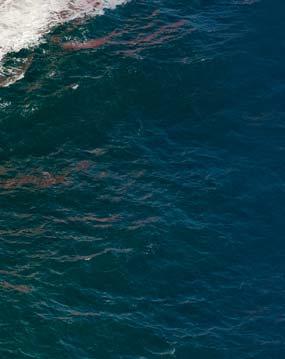

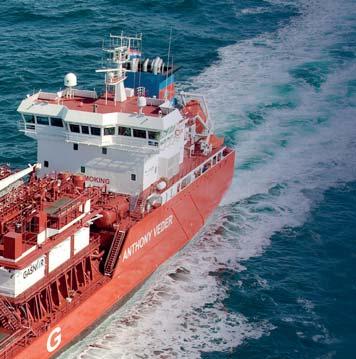
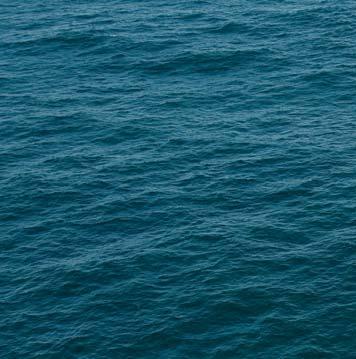
TGE Marine Gas Engineering is the leading liquified gas systems‘ provider specialising in cargo handling systems for gas carriers (LPG, LEG, NH3, Ethane, CO2 & LNG),FSRUs and bunker vessels, including tanks.







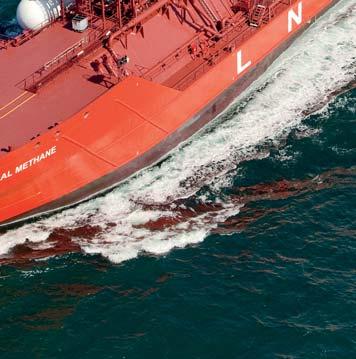
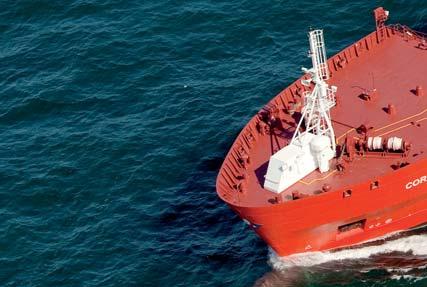

Furthermore, TGE Marine is a pioneer in fuel gas systems for LNG, NH3 and other alternative fuels. The company has designed and supplied more than 250 gas handling, fuel gas and storage systems globally.


TGE Marine‘s broad expertise in liquefied gasand cryogenic systems is based on more than 40 years‘ of engineering experience in the marine industry.


www.tge-marine.com
Floating UnitsCO2 carriers
Gas carriersBunker Vessels
NH3 carriers & Fuel Gas Systems
Fuel Gas Systems
Join the TGE Marine Crew Our collaboration is based on trust, fairness and respect. Diversity is our strength and basis for innovation.
NEW TURBO CUT OUT ENSURES
ME-C10.6 SYSTEM EFFICIENCY
MAN Energy Solutions has developed a new turbocharger cut out system to optimize the low load performance of its new high efficiency G95ME-C10.6 engines, and researchers shared details of its development at CIMAC 2023 along with new EGR developments across a range of engines
Lars Ascanius, Senior Manager Design Small Bore, and Henrik Møller Hansen, Senior Manager, Design Large Bore, at MAN Energy Solutions discussed the development of the 10.6 engine and also the latest exhaust gas recirculation (EGR) developments at CIMAC, highlighting that they are some of the steps the company is taking to future-proof its engines.
Currently the new large 2-stroke 10.6 engine types that have been developed by MAN are based on the S50ME-C9.7 and S60ME-C10.5 engine and include 50, 60, 80 and 95cm bore. The aim is to continue boosting the efficiency of MAN’s single-fuel engines which currently make up about half of its engine sales. The changes made to create the 10.6 version include the development of a sequential fuel injection system and for the G95 version a new turbocharger cut out system.
Sequential fuel injection
The engines feature a new sequential fuel injection system which is based on MAN’s existing technology but provides for flexibility in the injector sequences of each cylinder to enable performance optimisation and NOx formation management. The high engine efficiency of the new engine necessitated a NOx solution to ensure the engine remained Tier II compliant. The production of NOx emissions is related to fuel consumption and the mechanical and thermal load of the combustion chamber. Each of these parameters is interrelated, and the sequential fuel injection optimisation involves carefully timed sequencing of each injector. The concept is able to reduce NOx formation, and when combined with higher maximum cylinder pressures, fuel oil consumption is also reduced, as it only results in a small fuel oil consumption penalty.
The process is electronically controlled, with fuel booster injection valves hydraulically operated and controlled by window injection valve actuation. This ensures precise control for the system as the fuel enters via pipes to a sleeve in the cylinder cover. A hydraulic cylinder unit sequential replaces the existing hydraulic cylinder unit as it no longer requires a booster, and the new unit takes up half the space of previous units.
The exhaust valves and actuators are similar to those in existing hydraulic cylinder units and fuel injection valve actuators, but they are now located on the manoeuvring side of the cylinder cover rather than being placed on the baseplate.
The overall increased maximum combustion pressure of the 10.6 has led to reinforcement of both moving and structural engine parts, but this has been achieved with minimal change to engine room layout. The cylinder distance and height of interfaces are maintained.


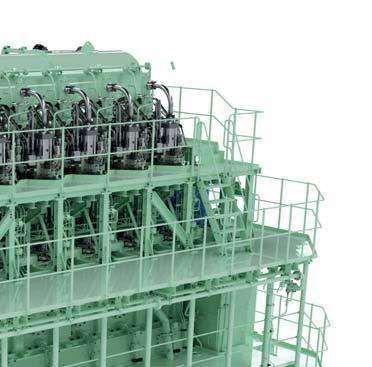

Turbocharger cut out system
In addition to the sequential fuel injection system, the 95bore variant has an advanced version of the manufacturer’s traditional turbocharger cut out system which involves taking
one turbocharger out of operation at low load. This ensures optimal efficiency of the available turbochargers, and dynamic control ensures seamless changeover.
An exhaust gas bypass is typically used to control scavenge air pressure by matching the turbochargers to a specific pressure at 100% load with an open bypass to reduce turbocharger power. This is analogous to having a lower efficiency turbocharger temporarily, with scavenge air pressure returning to higher levels when the bypass is again closed.
In contrast, the sequential turbocharging system developed by MAN instead cuts out one of the turbochargers at low load and smoothly cut it back in at high load (up to Four turbochargers can be installed on each engine) so that the active turbochargers always receive the full exhaust gas power. This avoids the reduction in scavenging quality at high load that would have occurred with the traditional bypass system.
The turbocharger to be cut out is sized according to the desired magnitude of the effect on the scavenge air pressure, and is typically smaller than the other turbochargers installed. Cutting a turbocharger can restrict engine load below 100% as the active turbochargers are unable to handle
TWO-STROKE ENGINES 14 | SEPTEMBER 2023For the latest news and analysis go to www.motorship.com
8 Rendering of an MAN B&W 7S60MEC-10.6 engine equipped with a highpressure SCR
Powering shipping’s emissions-cutting ambitions








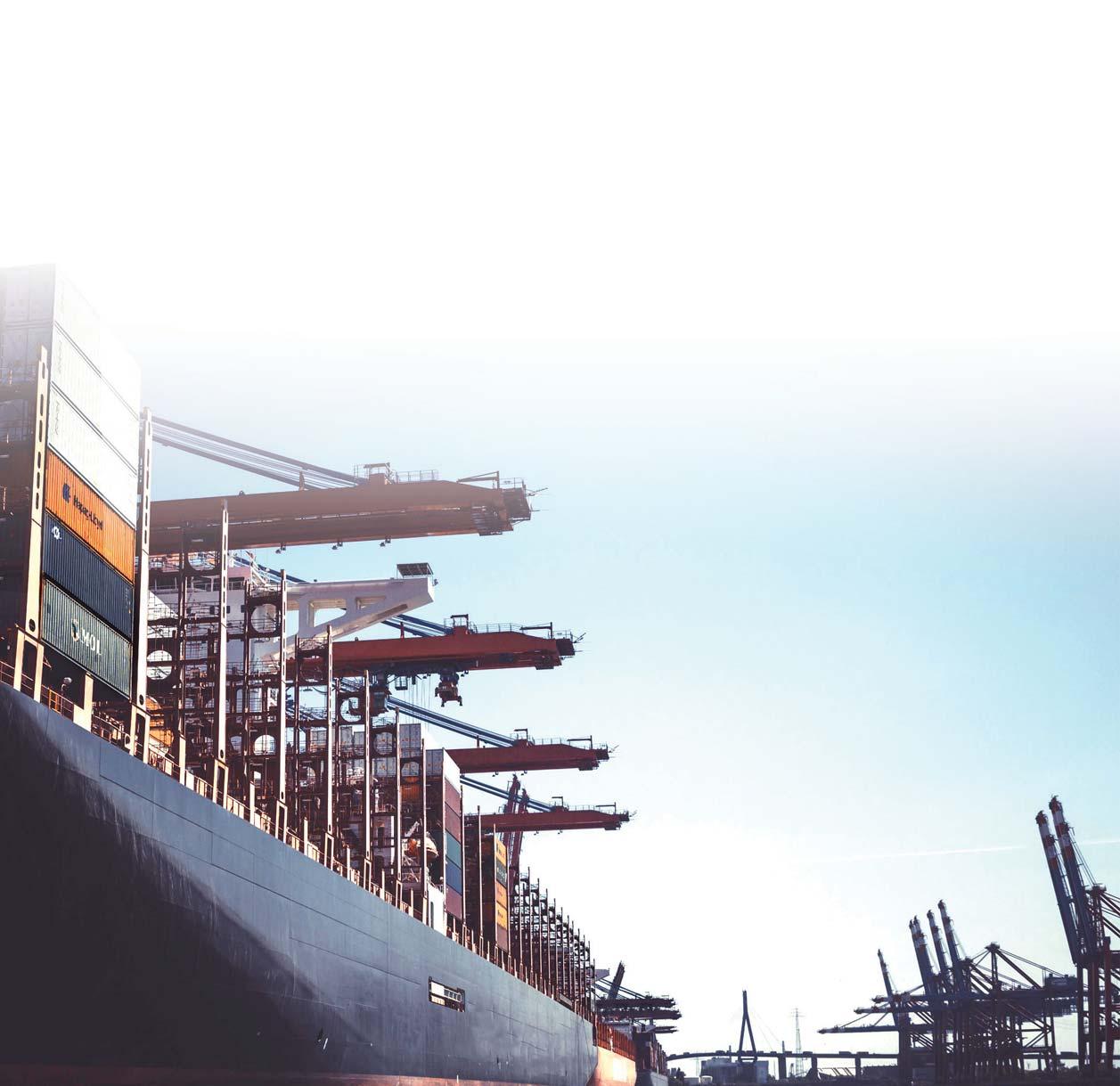
Keynote








Safety

44TH 23 TO NOV 3 21 Hamburg Germany Propulsion stream | Alternative fuels stream | Technical visit Meet and network with 200 CEOs and technical directors from ship owning, operating and management policy makers, shipbuilding, fuel, equipment and technology suppliers. Visit: motorship.com/PFFBOOK Contact: +44 1329 825335
conferences@propulsionconference.com #MotorshipPFF
Email:
panel topic: The cost of decarbonisation & who is going to pay?
to discuss with the keynote panel will include carbon levy funding, funding for investment, national incentives,
for new technology & hypothecation.
out now - Book now and save 20%
Topics
funding
Programme
Learn from C-suite keynote panel
challenges for new technology
LNG beyond transition
Carbon capture
Advances in lubrication
MOTORSHIP MARINE TECHNOLOGY
Media partner: Media supporters:
Gain insight from industry experts on:
THE
MODERATOR
Lars Robert Pedersen, Deputy Secretary General, BIMCO
Annika Kroon, Head of Unit, Directorate General for Mobility and Commission
Simon Bennett, Deputy Secretary General, International Chamber of Shipping
Martin Kröger, Shipowners’ Association (VDR)
Wolfram Guntermann, Director Regulatory Lloyd AG
by:
by:
Markus Münz, Managing Director, VDMA Large
Supported
Sponsored
8 MAN ES is introducing refinements to its EGR system on other engine types including the 10.6, having originally developed them as part of its ME-GA engine optimisation programme
MAN has also designed a lowspeed blower with a standard industrial electric motor that operates below 3,600 rpm (60 Hz). The detailed design was developed in partnership with blower manufacturer
all the exhaust gas, so cutting only occurs between 50 and 75% engine load so efficiency isn’t impeded.
The cut-out control MAN has developed involves one butterfly valve at the compressor outlet and one at the turbine inlet. These valves can complete their designed trajectories in 1-2 seconds. The control sequence for their operation has been integrated into the engine control system and ensures that compressor surging doesn’t occur. It also prevents excessive pressure drop during the cutting-in and cutting-out transition phases.
Engine testing has confirmed that the positive effects from the exhaust gas bypass are preserved without the efficiency of the turbochargers being impacted at high load. MAN states that the SFOC reduction is obtained by applying sequential fuel injection and sequential turbocharger combined with the increased maximum combustion pressure. This makes it possible to improve the fuel consumption by up to 4 g/kWh for S50ME-C10.6, up to 6 g/ kWh for S60ME-C10.6, up to 3 g/kWh for G80ME-C10.6 and up to 3 g/kWh for G95ME-C10.6. The larger reduction for the S60ME-C10.6 engine is the result of the engine’s larger increase of the maximum combustion pressure.
Mechanical changes
Some mechanical changes were made for the S60ME-C10.6 engine due to the maximum combustion pressure increase achieved for the engine. The platform used for its development was the S60ME-C10.5, but moving and structural parts were reinforced to maintain the desired safety margin against fatigue and bearing failure. These reinforcements didn’t, however, result in significant changes to engine room layout.
Main bearing size remains unchanged, as the main bearing zero is now introduced on the fore end of the engine to avoid having a bearing edge load that is too high. The crankpin bearing has increased diameter and width, and main bearing
support side machining has now been introduced, along with crosshead bearing changed from white metal to tin-aluminium.
A main bearing zero has been introduced to avoid excessive edge load and to prevent oil film thickness becoming too thin on main bearing No. 1. The main bearing zero has been located ahead of the axial and torsional vibration damper. The crankshaft inclination has also been reduced in main bearing No. 1.
While the mechanical changes made to the S60ME-C10.6 engine increase its weight by around 4.6%, the greater efficiency of the engine results in fuel saving of up to -6 g/kWh.
EGR developments
MAN has made developments on its EGR system to optimise performance, reliability and cost, noting that increased environmental awareness, expansion of emission control areas as well as increased focus on operational aspects of low or zero sulphur fuels for dual fuel engines call for a simple and reliable emission reduction system. Initially standard in the ME-GA engine, they will also be introduced on other engine types, including the 10.6.
Oxygen levels are integral to the control of any EGR system, and the sensor cabinet unit typically has a relatively large footprint, so MAN has developed a simpler system. A new oxygen sensor unit is now standard for all EGR systems, and it is located closer to the oxygen probe to ensure faster response times as well as simpler operation.
MAN has also designed a low-speed blower with a standard industrial electric motor that operates below 3,600 rpm (60 Hz). The detailed design was developed in partnership with blower manufacturer.
A new exhaust gas recirculation cooler has been developed as the Tier III solution that is a stainless steel version of seawater box coolers. This provides increased reliability and durability. The detailed design was developed in partnership with cooler manufacturer Kelvion and includes bent tubes as a replacement for a reversing chamber. The tubes are supported in a way that enables free movement of the side plates during different levels of thermal expansion.
A new and simplified water handling system has also been developed that consists of an on-engine buffer tank, treated water supply unit and related piping located on-engine. This significantly simplifies engine room installation, says MAN.
With these developments, and the latest 10.6 engines, MAN says it is pursuing the best possible efficiency and the lowest possible carbon footprint for the industry.
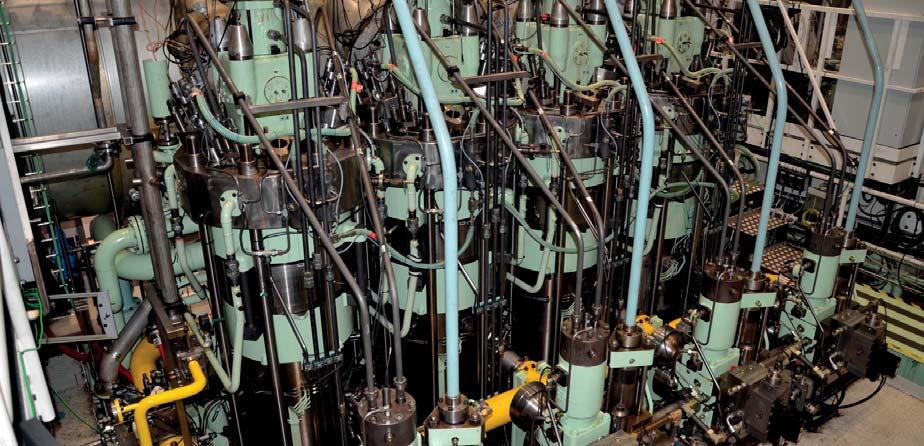
TWO-STROKE ENGINES 16 | SEPTEMBER 2023 For the latest news and analysis go to www.motorship.com
Source: MAN Energy Solutions
























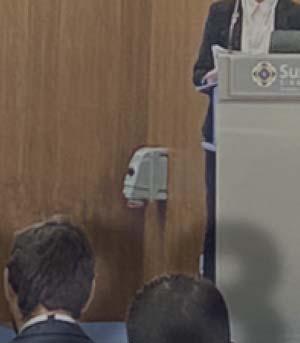


















ATHENS IMPA Events 2023 World-leading Maritime Procurement Events IMPA E V E NT S Maritime Procurement Events www.impaevents.com Queen Elizabeth II Centre London Eugenides Foundation Athens Suntec Convention Centre Singapore
EU SRR REVIEW TO PUSH RESPONSIBLE RECYCLING
The European Commission (EC) launched in the spring an online consultation to evaluate its Ship Recycling Regulation that ran until early June. The results of the work will probably increase the number of ships recycled in a responsible way and owners that fail to do this may face penalties in the future
“Since 2013, the EU Ship Recycling Regulation has provided a regulatory framework for the recycling of EU-flagged ships. It acts as a benchmark for ship recycling legislation around the world. Most ships are built with materials that are suitable for recycling,” the Commission said in a statement at the time of the start of the consultation process.
“When ships are dismantled, steel, other scrap metals and various types of equipment become available and can be reuse further. Many ships, however, are dismantled outside the EU, under conditions that are often harmful to workers' health and the environment,” it noted.
The work has three objectives. The first one is to assess how well the regulation has been applied and its impact to date; the second one is to assess how well it contributes to the general policy objectives of the European Green Deal and the circular economy action plan and finally, to identify shortcomings with its implementation and enforcement.
Ehud Bar-Lev, LR’s Global Manager, Ship Inspection & Assessment said that there is no reason to assume that there would be material changes to the regulations, although ultimately that is down to the EC to decide based on feedback from consultees.
“The process as I understand it is that the EC is currently carrying out an evaluation of the regulation, with the support of a consortium, in order to analyse the efficiency of the regulation and to identify areas for possible improvement. An EC working document will be published off the back of this in Spring 2024. After that an Impact assessment phase will happen. Only after that can any amendments to the regulation be considered,” he told The Motor Ship.
Penalty for those that do not recycle at Hong Kong Convention facilities potential threat
A possible concern to ship owners could relate to the “Financial Instrument” - in simple word: penalty - that is in discussion to apply to owners of ships that do not recycle in Hong Kong Convention (HKC) or EU Ship Recycling Regulation certified yards. “The idea of a financial mechanism has previously been considered in the past and pushed by the European Parliament, it could be re-considered to avoid a rising reflagging trend - if this is confirmed based on EMSA (European Maritime Safety Agency) statistics,” he said.
As a result of the work, sound and responsible ship recycling will expand both geographically and in capacity with the number of ships to be recycled expected to more than double within the next five years.
Efforts to decarbonise shipping will mean that more high value materials, such as rare earths in batteries, will be found on a growing number of ships. This can have implications for ship recycling. “It is expected that the Inventory of Hazardous Materials (IHMs) will include materials that were never used as common practice onboard ships, especially those using alternative sources of energy. Batteries and other power
cells are a good example. This will likely drive additional change in the ship recycling industry over the coming years,” Bar – Lev stated.
As the wider regulatory framework is reviewed in light of the IMO greenhouse gas strategy pushing the industry on the road to decarbonisation, the HKC should also be considered for necessary review and updated as well, to keep it relevant and in line with the technologies and materials that will be found on ships in the coming years.
Moving to the question whether we can anticipate a switch to large scale ship recycling in Europe as a result of the growing use of more high value materials in ships, he said: “Not necessarily, unless the reward per ton of steel significantly increases, closer to the reward received in other locations.”
“Ship recycling often takes place in different geographical areas to shipbuilding, so the high-quality shipping steel is often melted down with other scrap locally to the recycling facilities in places such as South Asia and used in applications where the high-quality steel isn’t needed. Steel remains the main material that is ‘harvested’ from the majority of ship recycling,” he concluded.
Three forces likely to drive change
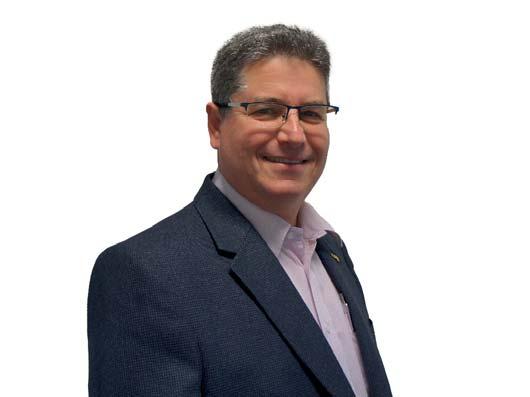
Martin Davies, Principal Consultant, in DNV said that heightened attention on end-of-life practices would have an impact on the ship recycling industry, but whether these would be significant or not is too early to determine. “New methods, technologies and business cases for greener and safer ship recycling are being developed in some locations, and it will be interesting see how these are received by the shipping industry,” he told The Motorship.
Forces that are likely to drive the change include greater focus on environmental, social, and corporate governance (ESG), consideration of recyclability already in the design phase - for example, by way of Life Cycle Analysis - and the circular economy.
Regarding efforts to decarbonise the shipping industry and the use of more high value materials ships on ships as a result would mean that ship recyclers would need to align their business and operating practices to the design and materials utilised in vessels being designed to meet the need for decarbonisation in shipping.
gh ships an that would
n and materials utilised in ed to meet the need for pping.
reasonable to anticipate a hip
g use of more value vies said: ‘There are -faceted ributing
Asked if it would be reasonable to anticipate a switch to large scale ship recycling in Europe as a result of the growing use of more high value materials in ships, Davies said: ‘There are several drivers in multi-faceted ship recycling market contributing to the type and location of ship recycling activities. There are development opportunities for ship recycling in all locations.”
n of here are nities for cations.”
REGULATION
18 | SEPTEMBER 2023For the latest news and analysis go to www.motorship.com
8 Ehud Bar-Lev, LR’s Global Manager, Ship Inspection & Assessment said that there is no reason to assume that there would be material changes to the regulations
Hosted by:
Delegate place includes 2-day conference attendance including lunch & refreshments
Technical Visit Electronic documentation
2024 Programme and Topics
Sponsor: Supporters:
coastlink.co.uk
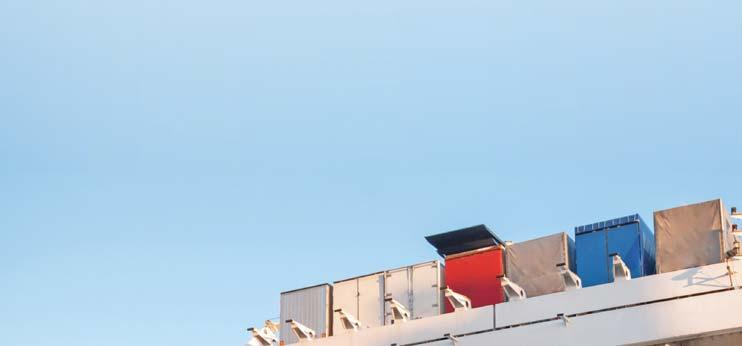

+44 1329 825335
info@coastlink.co.uk
Media partners: GREENPORT INSIGHT FOR PORT EXECUTIVES


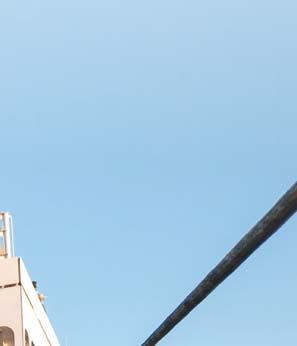



Book now and save 15%•
TECHNOLOGY THE
MOTORSHIP MARINE
of Amsterdam The Netherlands 24 25 TO
APRIL Port
NEW ECS SYSTEM KEEPS ME-GA CLOSE TO ISO CONDITIONS
MAN Energy Solutions is using AI-like algorithms in the new engine control system for its Otto cycle, dual-fuel LNG ME-GA engines
Typically, the combustion process in Otto cycle engines isn’t as stable as Diesel cycle, but it allows for the intake of low pressure gas, which is a good match for the use of boil off gas (BOG) from LNG carriers as a fuel. It has therefore become a popular choice for LNG carrier newbuilds. The ME-GA is also touted to have lower capex, opex and NOx emissions than current-generation Diesel engines, for many contemporary LNG carrier designs, when the overall cost, consumptions and emissions for the vessel are considered
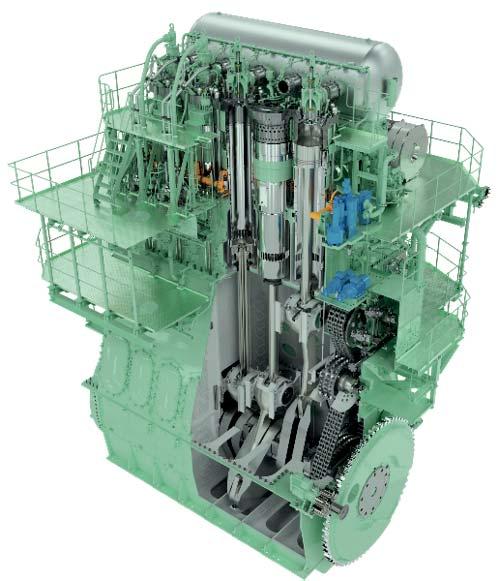
However, there are potential challenges to its performance at sea. The combustion process can be affected by variations in charge gas delivery or pressure pulses that may affect some cylinders differently to others. Additionally, when not running under ISO conditions, fuel consumption may be suboptimal, and this can occur, for example, in adverse weather conditions.
These drawbacks do not show in shop tests, says Thomas S. Hansen, Head of Promotion and Customer Support, MAN Energy Solutions, where the combustion control parameters are manually tuned for ISO conditions. This also means that MAN’s new improvements as part of its ME-GA-opti control system aren’t really apparent during shop trials either.
Still, Hansen is confident that in-service results for the MEGA-opti will demonstrate lower fuel consumption, lower NOx and lower methane slip than the standard ME-GA engine. Additionally, the engine will be much less likely to slip into fuel oil mode – another cost saving, as charterers, while happy for BOG to be used, are unwilling to pay for fuel oil as well.
ME-GA Otto cycle combustion
In the standard ME-GA Otto-cycle combustion process, scavenge air enters into the cylinder around bottom dead centre when the piston uncovers the scavenging air ports. Next, the gas admission valves admit fuel gas as the piston travels upwards in the cylinder. Pilot oil ignites the premixed air/fuel gas mixture, and the combustion starts.
As fuel gas and air mixes in the cylinder during the compression stroke, it increases the risk of misfire and/or pre-ignition (knocking) of the air/fuel gas mixture. The risk of pre-ignition increases when fuel gas is mixed into the entire swept volume of the engine, where the pressure and temperature can support ignition.
To increase the combustion stability significantly, a narrow engine-operating window has been introduced. The operating window gives a reliable control of the combustion process and, in particular, of the air/fuel gas ratio. The window reduces the compression ratio and the mean effective pressure to avoid pre-ignition, which results in a lower thermal efficiency compared to the Diesel cycle. Combustion and maximum pressures will be reduced, and, thermodynamically, this influences the maximum power output and the engine efficiency.
However, as the peak temperature of the combustion is lowered, this in turn lowers NOx formation enough so the engine is IMO Tier III compliant in dual-fuel mode without
NOx abatement technology. Even so, for MAN’s Otto-cycle engines, EGR is an integral part of the engine tuning to improve performance and lower methane emissions
In dual-fuel mode, the EGR has proven to have a considerable and beneficial impact on the methane slip and the specific gas consumption, thus becoming a standard for this engine type. It efficiently suppresses pre-ignition, reduces excessive combustion rates, and reduces the maximum heat load on combustion chamber components.
The ME-GA engine, in addition, is suitable for driving shaftmounted power take-off devices with a large power output. This means that even a ship with high power consumption, for example an LNG carrier, can be designed to trade without the need for generators to be running to provide onboard power production. Further, the new control interface between engine and power take-off device maximizes the output at any given time thus achieving maximum financial and environmental benefit for the owner.
MAN initially introduced the ME-GA range with a 70-bore engine aimed at the LNG market. Hansen highlights that the engine has unique gas admission components. The gas regulating unit, safe gas admission valves, and N2 purging
8 MAN ES plans to introduce the MEGA-opti technology (pictured) as standard on all new ME-GA deliveries. It will also be retrofitted on the few ME-GA engines already in service
LNG 20 | SEPTEMBER 2023For the latest news and analysis go to www.motorship.com
block were all developed in-house to ensure a safe and reliable fuel gas supply to the ME-GA engine. The ME-GA engine also has a simple LNG supply and purging concept, low fuel gas supply system maintenance costs, cost-optimised BOG handling and a well-known engine room design similar to those for the ME-C, ME-GI, and ME-LGI engines.
These benefits are maintained with the ME-GA-opti which adds the new and unique AI-like engine control system.
The Opti development
There are no hardware changes involved in the ME-GA-opti development. It only involves changes to engine control software and input parameters designed to improve efficiency and performance under real-world conditions.
If humidity or ambient temperature is high or low compared to the ISO conditions, compression moves away from the optimal point – due to the higher combustion pressure in the case of higher temperatures or lower combustion pressure due to lower temperatures. While the EGR can ameliorate the conditions and provide a wider operating window to prevent knocking or misfiring, the ME-GA-opti engine control system works to keep the combustion conditions of each cylinder much closer to ISO, operating independently for each of the engine’s cylinders.
“It’s an on-going process, revolution to revolution, where we adjust the exhaust valve closing time,” says Hansen. “That way, we regulate the relationship between scavenge air pressure and compression pressure in each cycle in each cylinder revolution.” This enables the engine to respond to and counteract any differences in ambient conditions that might affect combustion.
Traditionally, the control system will have a set off parameters which controls the opening and closing of the exhaust value, the injection time and other parameters. “Here we shift to another way of working where the exhaust valve closing time is floating. It’s not on a fixed degree crank angle. It is happening at the closest time possible to get back to ISO conditions and therefore back to optimal. Now the engine is able to run in the same condition as it was when tested, referenced and guaranteed – not just during trials, but during the whole life of the engine.”
that metal components are running at shortens their lifetime, and here we can shave off the peaks, where they get too hot too early, and this will influence the lifetime of the components. We expect to demonstrate that when we have some field service experience,” says Hansen.
Testing and Implementation
The first gas trial for MAN’s ME-GA engine was completed in September 2022 on the vessel Gordon Waters Knutsen at Hyundai Samho shipyard. The two 5G70ME-C10.5-GA engines tested were built by HHI-EMD.
The experience gained was then applied to trials in June on the Celsius Geneva at Samsung Heavy Industries, the first in a series of LNG carriers currently under construction at the yard. Again, the trial was performed on 5G70ME-C10.5-GA engines, this time built by HSD Engine.
The ME-GA-opti feature was successfully validated during this trial with performance measured at 25, 50, 75, NCR and MCR engine load points. Fuel Ratio Control (FRC) was rarely activated in either of the tests, and occurred less often with the ME-GA-opti engine control system in operation. For example, FRC was not activated when heavy rudder activation was requested while the engine was at 80% load.
The ME-GA-opti technology will become standard on all new ME-GA deliveries. It will also be retrofitted on the few ME-GA engines already in service.
nificantly limited stem will benefit
The solution has the capacity to match ideal running conditions for the engine even in the harshest weather conditions and without oil activation. Oil activation is still a feature, but its usage is expected to be signi with the new engine control system. The system will bene the engine most days, says Hansen, not just in adverse weather conditions.
Test results have been positive, and he expects that as well as leading to better fuel efficiency, the new system will reduce NOx formation and methane slip. “ME-GA-opti can reduce the average gas consumption up to 2% in service, depending on the fluctuations in the ambient conditions, and reduce the use of FRC dramatically and thus lower the fuel oil consumption as well,” says Hansen. “ME-GA-opti can also reduce the average methane slip by up to 10% in service, depending on the fluctuations in ambient conditions, mainly due to the reduced use of FRC where methane slip can increase.”
pects that as well stem will reduce ti can reduce the e, on d reduce the use also reduce the e, ainly due to the increase.”
For NOx: “The engine is certified as a Tier III engine so MEGA-opti is keeping the values well within the limits. The fact that the algorithms are maintaining the optimum operating conditions for the engine is a guarantee that the limits are kept, and will in many cases even have a positive impact in the emissions,” he says.
Having better control of combustion will also reduce wear and tear on the combustion chamber components that can come with high temperatures. “The higher the temperature
II so MEe limits. The fact imum at the limits are ositive in lso reduce wear ponents that can the

“ME-GA-opti is the latest and most advanced control feature for the ME-GA engine and significantly improves its operation, maintaining its position as the best-in-class technology,” says Hansen. “It comprises an advanced and intelligent network of control algorithms that have been developed to optimise the combustion process on an individual-cylinder basis, and which ensure optimal operating conditions. I’m certain it will be received well by the market.”
and conditions. I’m certain it will be received well the market.”
 8 Thomas S Hansen Head of Promotion and Customer Support MAN
8 Thomas S Hansen Head of Promotion and Customer Support MAN
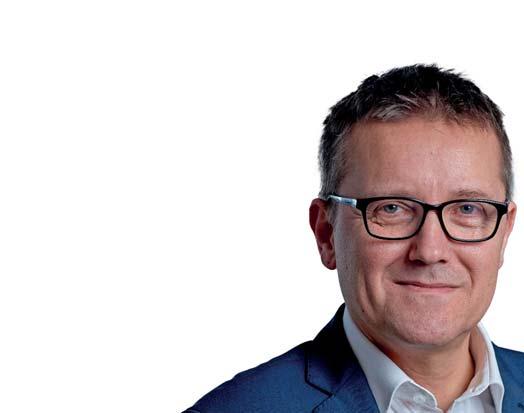
LNG For the latest news and analysis go to www.motorship.com SEPTEMBER 2023 | 21
‘‘
ME-GA-opti can reduce the average gas consumption up to 2% in service, depending on the fluctuations in the ambient conditions, and reduce the use of FRC dramatically and thus lower the fuel oil consumption as well
WEISSER: AIMING AT LOWER GHG EMISSIONS FOR X-DF 2.0
Dr German Weisser, Senior R&D Advisor at WinGD shared the engine designer’s plans to leverage EGR advances and VCR technology to lower methane slip emissions to 0.6g/kWh
Dr German Weisser is Senior R&D Advisor at Winterthur Gas & Diesel (WinGD). Dr Weisser has been kind enough to provide some insights into the extension of the EGR technology in WinGD’s X-DF portfolio. Thank you for joining us.
Thank you very much for having me.
Dr. Weisser, I was wondering if we could start by just taking a step back and looking at the development of the EGR solution that you've applied to your X-DF2.0 Engine platform and, and discuss its origins?
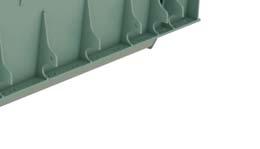
Yes, sure. Already very early in the development, we came across several limitations to the further development of the technology. And the idea was brought up already then to use EGR as a technology to overcome some of the challenges that we faced at these stages. After having introduced the first generation or X-DF technology, we then made up our minds on what to do as a next step. And EGR was sort of the logical candidate to be applied first.
Could you explain how EGR exhaust gas recirculation actually improves the performance of Otto cycle engines, and how it helps to suppress pre-ignition, in particular?
Exactly. We have noted that we are facing some limitations as regards achieving maximum power output, and maximum efficiency. And this limitation is mainly associated to the phenomenon that we call pre-ignition, which consists in an undesired start of combustion before we actually activate the pilot injection, which is theoretically thought to trigger the combustion process. And obviously, if the combustion starts too early, your pressure rise is too steep, and you're exceeding the peak firing limits. This forces you then to turn down your key parameters such as the compression ratio, in order to make sure that you can stay on the safe side.
So, if I may continue from here, the first important step was to obtain a good understanding of the phenomenology and underlying factors actually producing this undesired effect of pre-ignition. And this is where EGR then came in as opposed to [other] potential solution. [After] extensive investigations… we were able to identify that … a two-stage phenomenon is involved, where the first stage consists in the auto ignition of any lubricant droplets … that you may have in the cylinder. And this then triggers also a combustion in the [directly surrounding part of the] main charge and if this combustion proceeds fast enough, in the second stage, you have then complete ignition of the charge at a too early stage.
I think this research has led to some quite significant fuel efficiencies and other related greenhouse gas emission reductions.
After we have been able to identify the root cause, we were also able to identify potential measures and EGR
is one of the most efficient means to overcome this preignition limitation, because there is a thermodynamic effect on the one hand, which reduces the temperature increase that you can have through any premature ignition of [lubricant droplets], … but then there's also the chemical effect or the combustion impact, because due to the reduced oxygen content, you have a slowing down of the low temperature chemistry that is then defining the second part of the phenomenon. So EGR helps in both phases.
And this has led to the benefits that you just mentioned. So we are able by applying EGR to our engines in X-DF 2.0 configuration to improve the fuel efficiency in gas mode by roughly 3%. In diesel mode, it's as much as 5%. And on top of that, we are able to reduce the methane emissions by almost 50%. So if you do your maths and put all this together, this gives you an improvement of your greenhouse gas emissions, which is almost 10% compared to X-DF 1.0, which is impressive.
8 A rendering of WinGD’s X-DF 2.0 featuring the iCER engine solution, which was developed in cooperation with Hyundai Heavy Industries


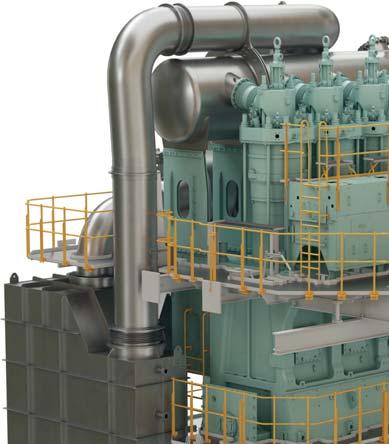
LNG 22 | SEPTEMBER 2023For the latest news and analysis go to www.motorship.com
Q
Q
Q
Q
A
A
A
A
But another 50% on top from…
From what we have now. Yes, we have reduced it by something like 45%. And we hope to be able to go down to something like 0.6 grammes per kilowatt hour, which is again, almost…


[Interrupting] For an Otto Cycle engine, this will be significant achievement. And we see that as a perfectly realistic [target].
Absolutely. Could you give me an understanding of what the reception to the solution has been like since you added it to your portfolio at the end in 2022?
rstanding en like since 2?
You have left us wanting more! Thank you so much for taking the time this afternoon to speak to The Motorship and our listeners.
Q A Q A Q A
The reception has been quite good. And I should also add that we have not stopped at the stage of the initial introduction and the initial development of the technology. We have put a lot of effort into the rollout of the technology across the portfolio, working with various partners to [optimise the] integration of the technology on the engine. I would like to highlight the collaboration that we have had with Hyundai Heavy Industries in developing what we call the iCER on engine solution, where the whole low pressure exhaust gas recirculation unit is integrated on the same footprint.
Q A Q A
should also of the initial technology. partners to we have had at we call the ow pressure n the same
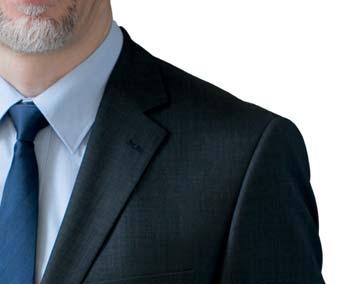
me of your sing the use gies, such as hipping. it R as another



Perfect. And I understand from some of your colleagues that you're looking at optimising the use of compression ratios through other technologies, such as the VCR, that you recently announced at NorShipping. Is it possible that you might be able to use the EGR as another parameter to control combustion?
e increase of ntial alked
This is a very good topic here, because the increase of the compression ratio has been an essential part of achieving these performance benefits that we talked about just a minute ago.
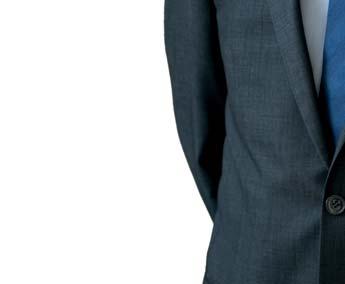

[introduce] adjust, even ession ratio more room to ptimise the out
And having said that, it is clear that if we [introduce] compression ratio as a [parameter] that we can adjust, even more extensively with the variable compression ratio mechanism that we have in place, we do have more room to manoeuvre and more room to further optimise the performance of our products, not only at the layout point, but also throughout the whole [operating range]. And this is where the value of adding VCR to the system would come from.
Q A
the next steps in this exciting area?
And this is would come harmonious e of the EGR. question and n your ntioned that king technology. xciting aration as we enting iCER easures that y demonstrate missions e ficant the further e of close to
In other words, that there would be a harmonious relationship between the VCR and the use of the EGR. Interesting. I guess that leads us on to one final question and I understand you may be limited in what you can say. In your presentation here at CIMAC in Busan, you mentioned that you are not resting on your laurels, but are looking at ways to improve the commercial benefits from this technology. What can you say about
The next steps are actually already in preparation as we speak. So we are looking at complementing iCER technology with a whole basket of additional measures that hold the promise of increasing overall efficiency and power output even more than we have been able to demonstrate up to date and also reduce the methane emissions yet further. And we hope that we are able to achieve signi further performance improvements as well as the further reduction of the methane emissions in the range of close to another 50%.
LNG For the latest news and analysis go to www.motorship.com SEPTEMBER 2023 | 23
‘‘
I would like to highlight the collaboration that we have had with Hyundai Heavy Industries in developing what we call the iCER on engine solution, where the whole low pressure exhaust gas recirculation unit is integrated on the same footprint
our Thank you. My pleasure
8 German Weisser
WinGD PLANS NEXT UPDATES TO X-DF ENGINE
The developments from the X-DF1.0 to X-DF2.0 involved inclusion of the iCER EGR technology without changing brake mean effective pressure (BMEP), but now WinGD is looking to further increase efficiency and reduce emissions, this time with changes to BMEP
The research was presented at CIMAC 2023 by Fridolin Unfug, Senior Expert Combustion Development at WinGD. Three design packages could be released before 2025, and will include increases to BMEP in two stages. Increasing BMEP enables several new measures to be implemented that will reduce wall heat loss while providing efficiency improvements. Prior to this, the advantage of keeping BMEP and engine speed unchanged was to guarantee X-DF2.0 engine applicability to current ship designs without necessitating changes.
With the latest engine improvements, WinGD says it is reducing engine size and cost as well as methane emissions. The first package of measures will reduce wall heat losses by heat flux optimisation. This is expected to increase energy efficiency by 1-2%. Cylinder wall quenching will also reduce CH4 emissions.
The second and third design releases will include the closing of combustion chamber gaps/crevices as well as the use of the low-pressure EGR system already introduced, among other changes not yet made public. Together, these changes are predicted to increase engine efficiency by 4% and reduce CH4 emissions to about 0.6 g/kWh.
Incorporation of EGR
They will be in addition to the 2% increase in efficiency that was achieved by X-DF2.0. These achievements were the result of exploiting the superior efficiency of pre-mixed combustion (Otto cycle) concepts and overcoming pre-ignition limitations by recirculating exhaust gas via a low-pressure EGR to reduce flame speed. This enabled quenching of lube oil ignited hot spots in the cylinder, enabling the compression ratio to be increased to maximum cylinder pressure.
Research was undertaken on the X-DF1.0, which operates without EGR, using optical in-cylinder measurements to characterise chemical reaction kinetics during a temporary cut in lube oil to simulate pre-ignition.
The EGR solution developed allows up to half of the exhaust gas flow to be returned so that hydrocarbons that were initially unburned hydrocarbons are potentially burnt to both reduce methane slip and improve engine efficiency. The EGR was developed in partnership with Alfa Laval as part of its iCER technology. Short for Intelligent Control by Exhaust gas Recycling, iCER was first presented in 2020, and in May 2022 an on-engine version was introduced, enabling the emissions reduction technology to be installed without impact on engine footprint.
The improvement of the thermodynamic efficiency of the engine cycle together with the improvement of the combustion efficiency in gas mode led to a reduction of the IMO weighted fuel consumption by 5.5g_gas/kWh, says WinGD, which is “a remarkable improvement of the total engine efficiency by about 2% points. Significant improvements could as well be gained on the emission side: The IMO
weighted CH4 and NOx emissions could be reduced by 45% and 35% respectively.” The result is a reduction in greenhouse gas emissions of about 10%. Running on diesel, iCER improves the emissions performance of X-DF engines by 6%.
Optimal compression for multiple fuels
In June 2023, WinGD introduced its Variable Compression Ratio (VCR) concept, jointly developed with Mitsui E&S. With VCR, the engine adjusts to each fuel’s optimal compression.

In trials on a 6X72DF test engine, VCR reduced fuel consumption and CO2 emissions by 6% when running on diesel mode. Although the engine had previously been optimised for gas mode, improvements were also evident when using LNG, with fuel consumption and emissions reduced by 3%. The improvement was achieved because the engine was originally configured to a compression ratio that favoured LNG while still offering good diesel performance. With VCR, this compromise is no longer required.
As well as optimising compression ratios for different fuels, VCR can also benefit engines operating under different ambient conditions and intake air compositions, such as when using EGR.
Compression ratio is altered by changing the piston position to adjust combustion chamber volume. The simple mechanical configuration has no impact on engine footprint or installation requirements. VCR can also be adjusted for part load operation. It will initially be installed on a vessel powered by an X62DF engine and then rolled out across selected engines of the X-DF engine portfolio.
8 WinGD is introducing a variable compression ratio selectable option to its portfolio for a number of X-DF engine types
LNG 24 | SEPTEMBER 2023 For the latest news and analysis go to www.motorship.com
Copyright WinGD
Green Ports and Shipping Congress will identify and prioritise the areas that ports-based organisations and shipping companies need to collaborate on to reduce emissions.
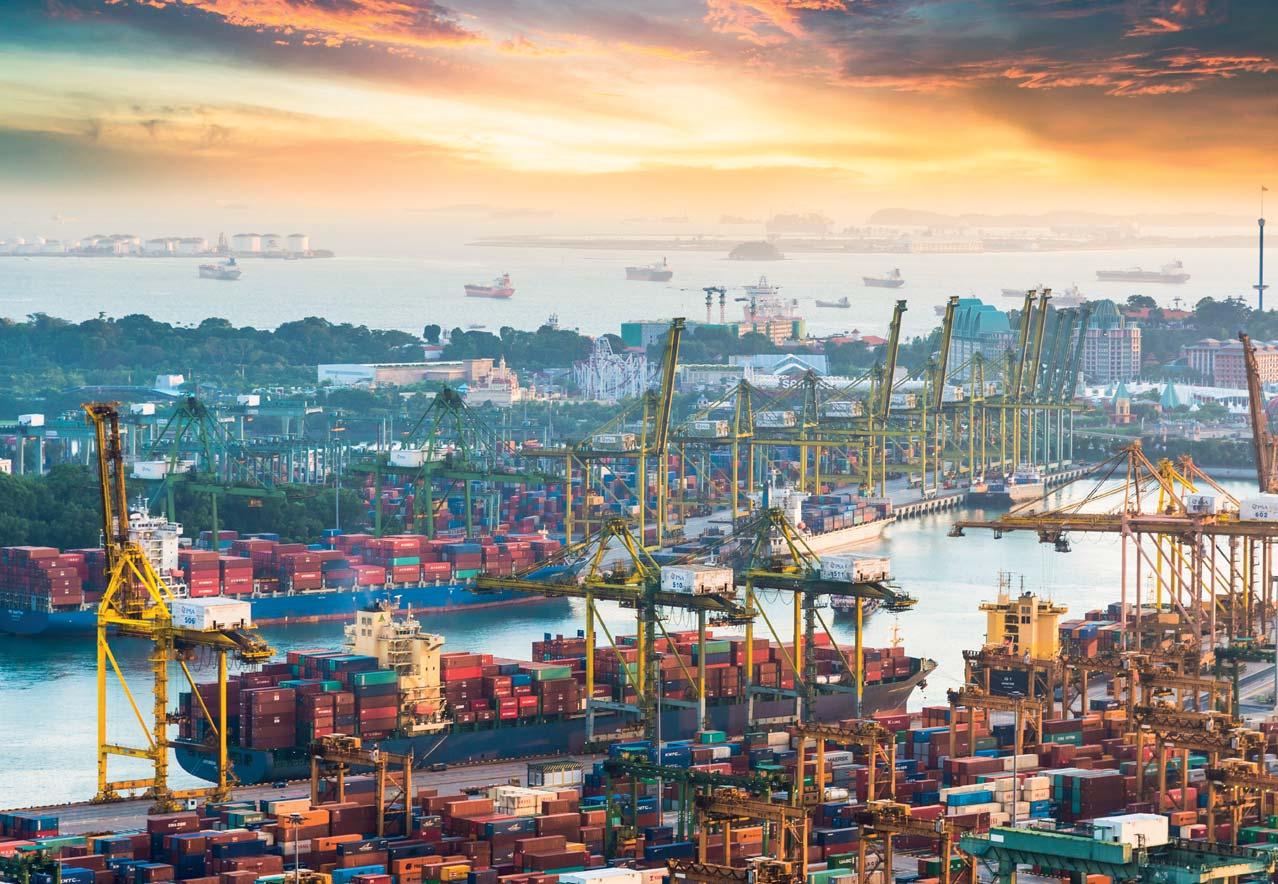
Green Ports & Shipping Congress will cover a range of topics addressing the aspects of energy transition plans and
operations and ships.
Sessions and streams will focus on the required infrastructure, alternative fuel options/bunkering, technical solutions and how these align with the shipping lines and logistics chains.
It is a must-attend event for policy makers, ports and terminal operators, shipping companies, shippers and logistics companies, fuel & propulsion providers, decarbonisation clusters.

Media partners: PORTSTRATEGY INSIGHTFOR PORTEXECUTIVES GREENPORT INSIGHTFOR PORTEXECUTIVES MOTORSHIP MARINETECHNOLOGY THE Visit www.greenseascongress.com Supporters:
For further information about
sponsoring or attending as a delegate,
Register your interest now!
speaking,
contact the Events team on +44 1329 825335
UK-EU CONSORTIUM TO DEVELOP 16,000cbm LH2 SYSTEM
UK engineering company TWI is one of 14 partners that has received EU funding to develop a 160,000cbm liquified hydrogen (LH2) containment system for ships
The overall goal of the LH2CRAFT project is to develop a sustainable, commercially attractive, and safe long-term storage solution suitable for long-distance transportation of LH2 for commercial vessels. It aims at developing a membrane-type containment system for high-capacity storage at a temperature of -253 deg C and to demonstrate and validate the technology on a 10-ton (180m3) prototype. .
Storage of hydrogen is challenging: in gas form hydrogen is difficult to contain, and in liquid form it requires extremely low temperatures. The new design solution will address the challenges of liquid storage at dimensions similar to those of existing LNG carriers, but the ability to scale the concepts up or down to support modularity and scalability will also be important. A life cycle assessment will consider different new design or retrofit strategies and evaluate the cradle to grave environmental impact including sustainability and recyclability and determining the environmental benefits.
LH2CRAFT will also develop a preliminary integrated ship design and carry out the corresponding cost estimation, achieving reduced boil-off rates of 0.5% per day.
Along with TWI, project partners include HD Korea Shipbuilding & Marine Engineering (KSOE), ABS, RINA, BV, engineering company Hydrus Engineering, Technical University of Dresden and Technical University of Athens.
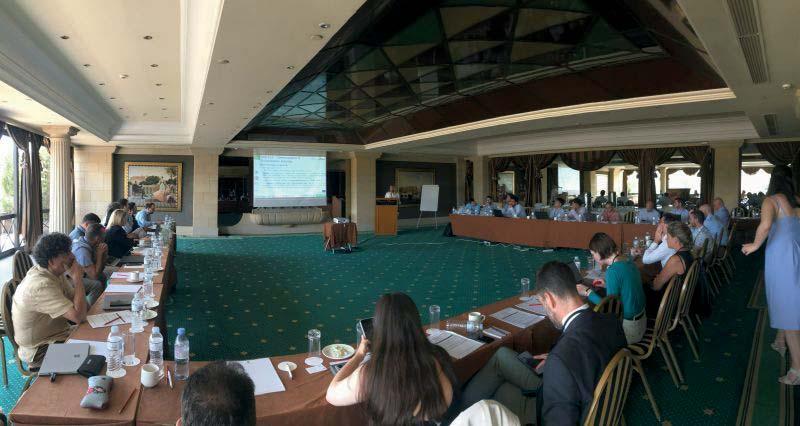
TWI participation
As a technology provider, TWI focuses on two aspects of the LH2CRAFT project. The first is to contribute to the risk and
safety assessment of LH2 as cargo, which includes performing the safety and risk evaluation of the design systems (e.g. HAZID, HAZOP, FMEA, etc.), providing design recommendations and contributing to safety assessment guidelines.
Dr Ujjwal Bharadwaj, Manager, Technology Innovation Management at TWI, says this is one of the most important parts of the project as it is an essential step to ensure the integrity of the developed novel concepts and technologies, which is also the compulsory requirement to gain the Approval in Principle (AiP) and General Approval from class.
“The other main task for TWI is to conduct the performance review of the technical solution developed by LH2CRAFT and to develop the strategic roadmap for taking such technology further post-project,” he says. “In this task, the project outcomes will be evaluated in terms of its technocommercial-environmental performance from a life-cycle perspective, its potential for standardisation as well as its scalability and modularity. Such performance review of the developed solutions is the key to encouraging application in industry. The evaluation will take into account the varying perspectives of the stakeholders involved in demonstrating the lifecycle solutions for cleaner shipping economy and help stakeholders to make an informed decision.”
From a lifecycle point of view, the project focuses mainly on technology solutions applied during the design and production stages. For this reason, improving the maintenance strategy such as technology development for inspection or repair of the containment system is not within
ALTERNATIVE FUELS 26 | SEPTEMBER 2023 For the latest news and analysis go to www.motorship.com
8 A kickoff meeting for the LH2CRAFT project was held earlier in 2023
the scope of LH2CRAFT. However, to optimise the design from a lifecycle perspective, it is necessary to consider the requirements of inspection or repair into the design, says Bharadwaj. Therefore, there will be a lifecycle model developed within the project to enable comparison between different new designs or retrofit strategies for the developed solutions by quantifying economic costs of production, maintenance, repair and end-of-life expenses. For each alternative design and operating strategy, the project will provide comparison regarding their direct economic costs of production (CAPEX) and operation and maintenance costs (OPEX), repair / refurbishment costs and end-of-life costs.
Design-for-Recycling and circularity of materials and equipment are also being considered. This means efforts will be made to integrate circular economy driven aspects such as recycling, reuse and repair into the design phase and the further exploitation of the materials and equipment beyond the end of the project. In addition, there will be monitoring subsystem included in the design and tested to ensure its functionality, including temperature sensors, gas detectors for identifying possible leaks, pressure sensors to monitor the vacuum in the various insulation layers, as well as the necessary data analysis software and warning or alarms module, in case of leakage or malfunction.
Technical LH2 challenges
Dr Xiaofei Cui, Principal Project Leader, Materials Performance & Integrity Group at TWI says the following aspects of LH2 storage will require particular attention:
5 The system should be able to constantly sustain -253 deg-C, with excellent thermal insulation and avoiding formation of thermal bridges in the structural parts of the tanks.
5 There should be safe and continued integrity of the materials used in the structure subject to the continuous contact with the cryogenic environment.
5 LH2 requires a large storage system due to its relatively low volumetric density. Moreover, heat leakage is less severe for larger LH2 tanks.
5 According to some recent studies from literature, a boil-off of about 0.2% to 0.3% may occur during storing and transporting LH2 via both terrestrial and marine transport. This is because of various factors such as heat leakage, ortho-para conversion, sloshing, and flashing.
5 H2-flamability may result in reduced operational safety to non-acceptable levels and to complicated bunkering procedures.
5 Tank thermal expansion after unloading may be impractically high. This means appropriate design allowing sufficient space for expansion of tanks on the designed support is required.
“TWI has developed a permeation laboratory, which allows us to gain insight into how hydrogen and other materials permeate through both metallic and non-metallic systems,” says Cui. “This is useful for understanding the mechanisms of material change when exposed to an aggressive environment and for linking non-metallic properties to permeation.”
TWI has been involved in projects involving a variety of storage systems including CO2 systems. This gives TWI unique insights and transferrable skillset particularly in the application of risk management methods and the close collaboration with regulatory bodies to build confidence in technologies that are relatively new, she says.
Some of that previous project experience has related to CO2 containment. “CO2 storage systems are relatively mature technology compared to LH2 storage systems,” says Cui. “The system design requirements (such as material
selection, components/ equipment required, or structure design), maintenance strategy, operating conditions, safety control measures or level of risk assessment, etc. are very different in these two types of storage systems.”
However, Cui says that it is worth noting that in the LH2CRAFT project, two concepts are being developed: in addition to LH2 being stored in tanks, it is also expected to be utilised as fuel to power vessels. This means the design will also need to consider the interaction and integration of both storage and its auxiliary systems for providing power onboard, which will not be a concern for CO2 storage.
KSOE participation
KSOE plans to lead the conceptual design and basic design of the LH2 cargo hold based on its liquefied gas cargo hold design capabilities accumulated by winning orders for the largest number of gas carriers in the world. The company received DNV classification certification for a hydrogen carrier system using the Himsen engine, and it plans to complete the establishment of a hydrogen ecosystem by developing a complete hydrogen engine by 2025.
KSOE will base its research efforts at the HD European Research Center it established in Germany last year. The company plans to invest 15 million euros (approximately KRW 22 billion) over the next five years on the Center and plans to actively discover and promote mid- to long-term large-scale projects with local partners.
Europe’s hydrogen research strategy
Some projections indicate that hydrogen will account for 24% of Europe’s energy needs by 2050. This will require storage at multiple stages and transportation between the production and end-use locations.
The EU’s hydrogen strategy aims to support LH2 deployment for various purposes and to allow its transportation over longer distances. A further important element of the strategy is to facilitate import from low-cost regions by development of an international hydrogen trade. Shipping of LH2 represents a flexible means for transport of larger quantities of hydrogen over longer distances, as well as for regional distribution without a gas-grid.
The EU is aiming to enable the safe, cost- and energy efficient transport of bulk LH2 and achieve techno-economic scales suitable for the anticipated hydrogen economy. At present, large-scale solutions for the storage and bulk transportation of LH2 are in their infancy, so it is expected that the development of larger-scale solutions will foster the large scale trade of LH2 by 2030, becoming a supplement and later an alternative to the current world-wide LNG trade.
ALTERNATIVE FUELS For the latest news and analysis go to www.motorship.com SEPTEMBER 2023 | 27
‘‘
TWI has developed a permeation laboratory, which allows us to gain insight into how hydrogen and other materials permeate through both metallic and non-metallic systems. This is useful for understanding the mechanisms of material change when exposed to an aggressive environment and for linking nonmetallic properties to permeation
JOINED UP THINKING: MAN’s NEW NH3 ENGINE IS ON TRACK
Thomas S. Hansen, Head of Promotion and Customer Support at MAN Energy Solutions, 2-Stroke has provided an update on the new ammonia engine’s development schedule
8 MAN ES plans to being multicylinder engine tests operating on ammonia fuel at its Copenhagen research centre in 2024

Thomas S. Hansen is Head of Promotion and Customer Support at MAN Energy Solutions and has agreed to discuss the latest progress of MAN ES’ ammonia engine projects. I thought a good place to start might just to get an update on the latest status on your ammonia engine combustion tests, which I believe you've just successfully begun at the RCC in Copenhagen.
Yes, that was a big moment for us. In July, we started single-cylinder combustion tests on our 4-cylinder 50 bore engine. And it was actually very successful. Within a few hours of [combustion optimisation], we were actually able to run on one cylinder with… a normal combustion… with normal combustion parameters. So, it was a great success.
I was wondering if you could give us an update on what how you how you see the development timetable evolving? How long are you expecting to conduct the initial tests for - and I guess the real question that people have is, is when can we expect the first engine to be delivered to a shipyard?
[In terms of the current combustion tests], after the summer break, we will restart the test campaign again. We will continue with that over the remainder of the year. Based on the learnings we will rebuild the engine in preparation for the move from single-cylinder to multi-
cylinder running on ammonia. And then in 2024, we will run the whole thing on ammonia. And that will give us you could say the more exact emissions figures and all that also consumption figures and stuff like that to a more exact point.
In parallel with that, we are going to be carrying out full scale tests on what we expect will become our first commercial engine at our licensee Mitsui E&S, a 60-bore engine, which will be tested throughout the better part of 2024. And then the plan is that we should finish all of this by the end of 2024. So that the first engine can be delivered to the shipyard by the beginning of March.
We are very interested in the different combustion strategies that you're evaluating. As I understand it, you're still assessing which particular route you want to go down [for the wider AEngine development.]
Yes, that is correct. We [initially] chose the Diesel cycle as the basis for the combustion tests and that was also what we started out with now in the tests, and that was very successful. So you can say that this is likely to be the technology which we will pursue.
The very first tests were conducted with 10 to 15 % pilot oil, and we are confident that we can fulfil our target of 5 % The initial results for laughing gas (N2O) are manageable. We are aiming to use our extensive knowledge to eliminate N2O
METHANOL & AMMONIA 28 | SEPTEMBER 2023 For the latest news and analysis go to www.motorship.com
Q
Q
Q
A
A
A
formation as a by-product of combustion, but we are also working on a second path that includes an emission abatement system. So it looks like… we could make a good engine with the Diesel Cycle. But… we also plan to screen the Otto cycle to get exact combustion information firsthand on its [performance and emissions profile]. So we will also carry out a test campaign using an Otto Cycle concept to get those results. But our current thinking is that the Diesel Cycle will prevail for this product. In terms of overall GHG emissions, we’re aiming for a 90% decarbonisation of the ship powertrain in a tank-to-wake sense.
It sounds as if you are a little more definite about when you think you will add the ammonia engine to your engine programme more broadly. Last time we spoke you said you were possibly going to evaluate the first delivery based on a soft launch approach.
[Since] we made that statement about the soft launch… we have further facts, of course, we have gained more confidence and then we will also be able to maybe move a little bit ahead in the decisions in that way.
And we are we are looking if we can do more projects, both for the [60-bore] engine size, but all potentially other engine sizes. Nothing has been finalised. I think what the next couple of months will show is whether we can [expand] the number of projects during the initial release phase.
And I guess that leads on to some questions around… commercial interest and an update on how that's going. Because it sounds as if you are already receiving interest from some interested parties?
Definitely. There's interest for container ship applications, as well as for bulk carrier applications. And, and even for other ship types as well. I think we will be able [announce] some good projects for… the commercial release, if you will.
The interest is [by no means limited to] European companies. For instance, the interest from the bulk carrier segment is being driven by certain charterers who would like to have green propulsion. They're seeking shipowners who would like to buy ships with which they could then enter into charter contracts.
If we can just follow up on that a little bit. There have been some recent announcements, obviously, including some of the decisions at MEPC80. Do you see that affecting interest, or would you say it simply confirms the interest from some people you're already speaking with?
You're right. If we look back at the decision to develop the Ammonia engine back in 2018, we believed that a strong market for ammonia solutions [would emerge]. What is happening now, at MEPC 80, and elsewhere confirms this direction in shipping propulsion.
At MAN ES, we are seeing a strong increase in interest in alternative fuel engines. Looking at our orders, dual-fuel engines accounted for 56% of all orders in 2022. And we have seen a huge increase in orders for methanol dual-fuel engines, which has continued into this year. I would say that the customers who are evaluating methanol, they would also be evaluating ammonia, if was available with the same
deadline for the ships on order. Which would bring the choice down to choices about which fuel would be the most beneficial for them to use, comparing fuel supply chain considerations and equipment costs.
That leads us on to other areas, relating to upstream supply, and broader developments in the ammonia supply market, which are very interesting. We’ve been following some of the large scale investments being driven by the hydrogen economy developments in Europe. And it looks like the ammonia engine will become commercially available, roughly, on a similar timescale to the beginning of production for some of these large scale green, ammonia export projects.
Yes, exactly. And this just shows that our decision in 2018, to begin development of the ammonia engine, and simultaneously announce it to the market, was the right one. From the beginning, we recognised that there was a chicken and egg problem, and the engine development was reliant upon expansion of fuel supply. And we have liaised closely with interested parties about our development schedule. So I think it's no coincidence that the development of the engine and the development of the supply chain are in parallel.
Really interesting. And I was wondering if we could conclude by just looking at some of the most recent safety developments. Safety is often cited as one of the obstacles that need to be overcome for the introduction of the ammonia engine.
I would say that the safety is maybe twofold, right, because there's both the say the emissions part of it, which is you would say environmental safety, and then there's also even say, the personal safety to the people working with the onboard the ship, for instance, or working with bunkering.
Our investment at our RCC centre in Copenhagen, both in terms of time and money, has worked as it should. We believe that our full-scale facility has proven a kind of a concept as to how you can devise safety measures, and that it has acted as a starting point for classification societies and regulators.
In the end, I think that we have established that the [combustion of ammonia] is like any other engineering problem, and it is just a matter of making designs and rules, regulations and procedures.
And we have also seen that our [thorough] safety design has worked exactly as intended. And that gives us confidence that the engines can be constructed in a safe manner.
Thank you, thank you so much for taking the time to update us on the progress and it sounds like there will be a lot to talk about in the in the months and years to come. Thank you. My pleasure.
A Q A
METHANOL & AMMONIA For the latest news and analysis go to www.motorship.com SEPTEMBER 2023 | 29
‘‘ Q A Q
A Q Q
We [initially] chose the Diesel cycle as the basis for the combustion tests and that was also what we started out with now in the tests, and that was very successful. So you can say that this is likely to be the technology which we will pursue
A
A
‘‘ Q
What is happening now, at MEPC 80, and elsewhere confirms this direction in shipping propulsion
MEPC80 HAS SET THE DIRECTION OF TRAVEL FOR THE INDUSTRY
Dr Alexandra Ebbinghaus, GM Decarbonisation at Shell Marine, highlighted the challenges and opportunities that the industry is confronting in an interview with The Motorship
Dr Alexandra Ebbinghaus took a few minutes out from her busy schedule to speak with The Motorship. The interview ranged across the themes covered in Shell’s latest All Hands on Deck 2.0 report, but also assessed the likely implications of the MEPC 80 decarbonisation agreements.
The importance of the agreement was that it clearly sent a message to ship owners that they could not take a “wait and see” approach when selecting fuel choices for newbuildings, waiting for the IMO to debate the issue for the next decade.
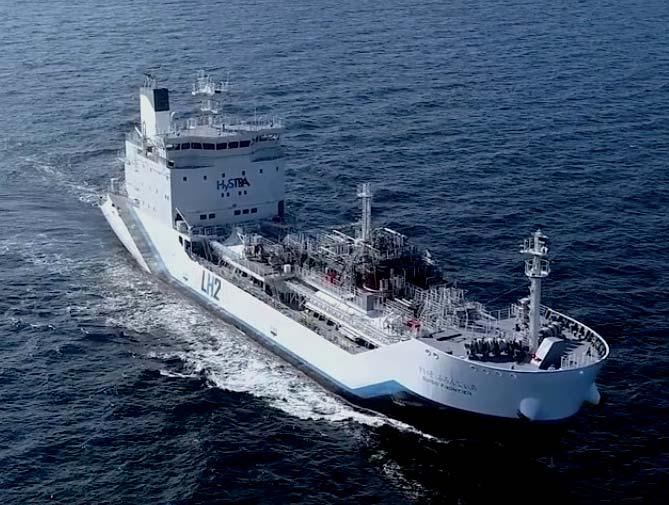
Encouraging early adoption
Dr Ebbinghaus’ professional background as an engineer with a specialisation in combustion engines, as well as her involvement in high level regulatory discussions as Shell’s representative, ensures that she has a unique perspective on the challenges of reducing the emissions from shipping.
Shell is actively involved in research and development and pilot projects involving a number of alternative fuels, Dr Ebbinghaus noted, citing the company’s participation in a liquid hydrogen transportation pilot project between Japan and Australia, as well as other projects.
However, big-ticket large-scale investments in alternative fuel production projects needs greater clarity about demand for different fuel types.
The emergence of voluntary green shipping demand has helped to create a market for alternative fuels, and reforms should make it easier for customers to claim the benefits and use it in their sustainability reporting, but more needs to be done more to expand the market beyond consumer facing sectors where a minority of customers are willing to pay a premium.
Ebbinghaus noted that encouraging wider adoption of alternative fuels would require the creation of a market framework as a necessary precondition for the creation of sustained broader demand for new fuels.
Shipping faces increases in costs
Ebbinghaus was also frank about the future implications of shipping shifting to fuel types used by other modes of transportation, such as aviation or road transportation.
Shipping faces direct competition from aviation and road transport for biofuels, and there only a limited prospect of the shipping industry obtaining ring-fenced supplies of fuel feedstock at a discounted price. In other words, there is no scenario in the future where we move to alternative fuels where the cost of fuel doesn't go up significantly.
Ebbinghaus was equally forthright about the economic pressures that introducing electrofuels or green alternative
Hydrogen Vectors remain challenging
Ebbinghaus offered a more cautious appraisal of the prospects for hydrogen vectors, such as ammonia or methanol, to enter the supply chain.
Drawing on her combustion experience, Ebbinghaus noted that there were likely to be significant technical obstacles to overcome in the introduction of ammonia combustion engines into the fleet, which she stressed could be overcome but were likely to add complexity to any ammonia combustion engine.
The main points of focus will be on the emissions reduction system, as N2O emissions will need to be eliminated to achieve a reduction on emissions over
conventional fuel burning equivalents, while keeping pilot fuel ratios to a minimum will also be necessary. Ebbinghaus also identified the potential safety concerns about bunkering, given ammonia’s toxicity, which was likely to make simultaneous bunkering and discharge impossible in many ports, with implications on profitability for long term charters and scheduled services.
Ebbinghaus was more encouraging about the prospect for methanol’s introduction, noting that methanol itself was liquid in atmospheric conditions and could be combusted easily.
However, any emissions advantage that methanol appears to offer over conventional
8 Shell is involved in a number of research projects, and has gained understanding of the liquefied hydrogen transportation technology participating in the HYSTRA project (pictured)
fuel relies upon the production pathway. As conventional methanol is usually produced from natural gas, outside China, its emissions profile is worse than that of conventional fuel if you factor in upstream emissions produced by the production process. In comparison, LNG offers an overall reduction both on a well-to-wake and a tank-to-wake basis and a TtW basis.
Other outside factors were also likely to impact methanol pricing in the future. Fossil methanol is currently commercially available at a price close to MGO but methanol demand is also influenced by demand from the chemicals sector, which uses methanol as a feedstock for olefins.
METHANOL & AMMONIA 30 | SEPTEMBER 2023 For the latest news and analysis go to www.motorship.com
Ebbinghaus was equally forthright about the economic pressures that introducing electrofuels or green alternative fuels will entail. The conversion of renewable electricity into a liquid fuel or gaseous fuel is going to be an expensive process, requiring electrolysers, and CO2 capture use and storage
fuels will entail. The conversion of renewable electricity into a liquid fuel or gaseous fuel is going to be an expensive process, requiring electrolysers, and CO2 capture use and storage.
The Motorship previously reported that the production cost of small-scale synthetic natural gas was around 4.5 times that of fossil methane production. Ebbinghaus noted that even if the cost falls with larger scale installations and improved efficiencies, it is likely that the end point is still going to be more expensive. However, unlike biofuel where sustainable feedstocks are limited, synthetic routes do not face the same supply constraint as there is sufficient wind, solar and other renewable sources to meet demand.
Fuel complexity, price differentials and pooling
Ebbinghaus continued that the entry of a number of different fuel types into the fuel market was likely to introduce significantly greater complexity for ship operators. “We saw that the introduction of the 0.5% sulphur limit shifted attention away from managing fuel consumption towards choosing between VLSFO, or HSFO and a scrubber, and looking at LNG.”
The Motorship’s editor notes that the volatility seen in bunker prices since February 2022 has strained historical price differentials between different fuel types, but market participants have noted absolute prices play a lesser role in fuel choices than underlying price differentials between fuels.
The Motorship notes that the emergence of regional carbon pricing models, such as the EU’s impending extension of the Emissions Trading System to shipping from April 2024, is likely to complicate the task of managing fuel price models.
Dr Ebbinghaus noted that the introduction of an emissions pooling mechanism to permit shipowners and operators to share carbon emissions offsets across vessels within a company represented a potential solution to ease pressures on shipowners, given the likely emergence of an even greater focus on fuel price differentials as other fuels enter the market. The Motorship notes that similar schemes are under active consideration in other transportation markets.
Biofuel supply to ramp up to meet opportunities
The biofuel market represents an interesting opportunity, and Shell has seen an increase in demand for various types of biofuel, including fatty acid methyl ester (FAME) types. From a technical perspective, biofuels are perfect, Dr Ebbinghaus says, before adding that although the product meets all ship operator requirements, there is still a supply challenge.
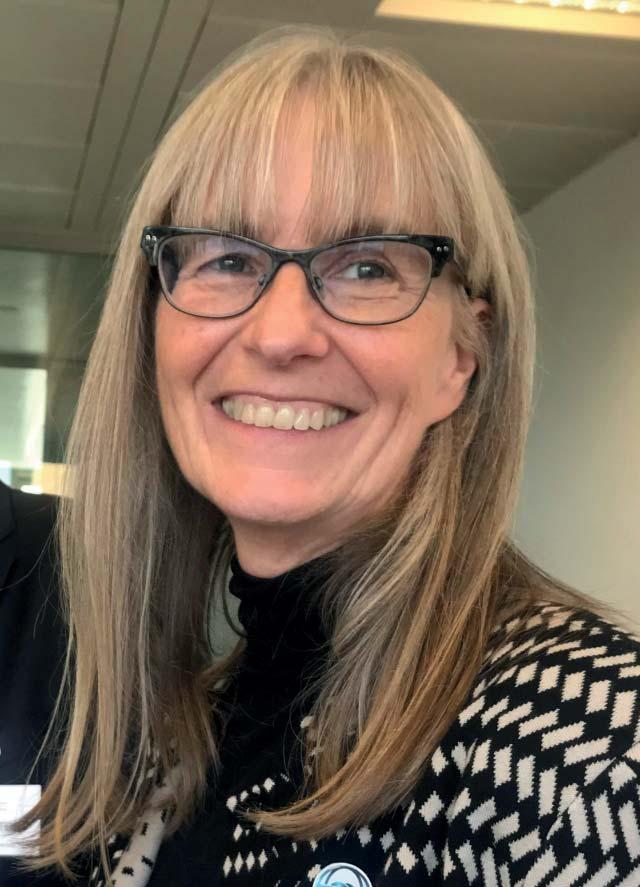
The advantages of biofuels are that biofuels would not require significant modifications to existing ship engines, and original equipment manufacturers and ship
crews have plenty of experience of operating with fuels with variable cold flow properties.
“Energy density is slightly lower than for fuel gas or marine gas oil, but you can just drop it into all the infrastructure, the bunker barges and the fuel tanks.”
However, biofuel supply and potential competition from other industries remain considerable obstacles to increasing biofuel use in shipping.
The global supply of FAME for transportation is under 40 million tonnes, which is equivalent to around 36 million
tonnes of fuel oil, if you take into account FAME’s lower energy density.
The majority of FAME is first-generation biofuels, produced by palm oil, soy and rapeseed. The IMO has not yet decided whether to make a decision as to whether first-generation oils were permissible.
With regards to second-generation biofuels, global production is limited to a few million tonnes today, while shipping faces direct competition with the aviation industry which has sustainable aviation fuel (SAF) requirements to meet.
METHANOL & AMMONIA For the latest news and analysis go to www.motorship.com SEPTEMBER 2023 | 31
8 Dr Alexandra Ebbinghaus, GM Decarbonisation at Shell Marine
SERVICE PROVIDER FOCUS SHIFTS TO NEW FUEL AVAILABILITY
According to the latest figures from DNV’s Alternative Fuels Insight platform, 62 alternative fuel vessels were ordered in July. Orders for methanol-powered vessels now exceed 200, but there has also been many Approvals in Principle for ammonia-fuelled vessels over the last year
8 Maersk’s new container feeder ship first bunkered OCI HyFuel’s green methanol at the Port of Ulsan (pictured)
The answer to what the fuels mix for shipping will look like, is not so much about ‘what’ but ‘when,’ says Barend van Schalkwyk, Business Development Director, Marine, OCI HyFuels. OCI Global is a leading ammonia and methanol producer, with capacity to produce 7m tons of ammonia and 3m tons of methanol at its facilities worldwide. OCI Methanol is the leading producer and supplier of green methanol globally through its OCI HyFuels brand, and currently produces approximately 200k tons of green methanol per year. This has primarily been for use in road fuels, but the company is now also producing green methanol for shipping.
The company has been involved in collaborations between port authorities, storage partners and suppliers to assist the first green methanol bunkering of Maersk’s new container feeder ship, which has bunkered OCI HyFuels green methanol at Port of Ulsan and Port of Singapore. “The current orderbook is dominated by container vessels, and this may be because alongside regulatory incentives, container ships are the closest link in the chain to consumer brands, and therefore are further incentivised by driving decarbonization for their downstream customers,” says van Schalkwyk.
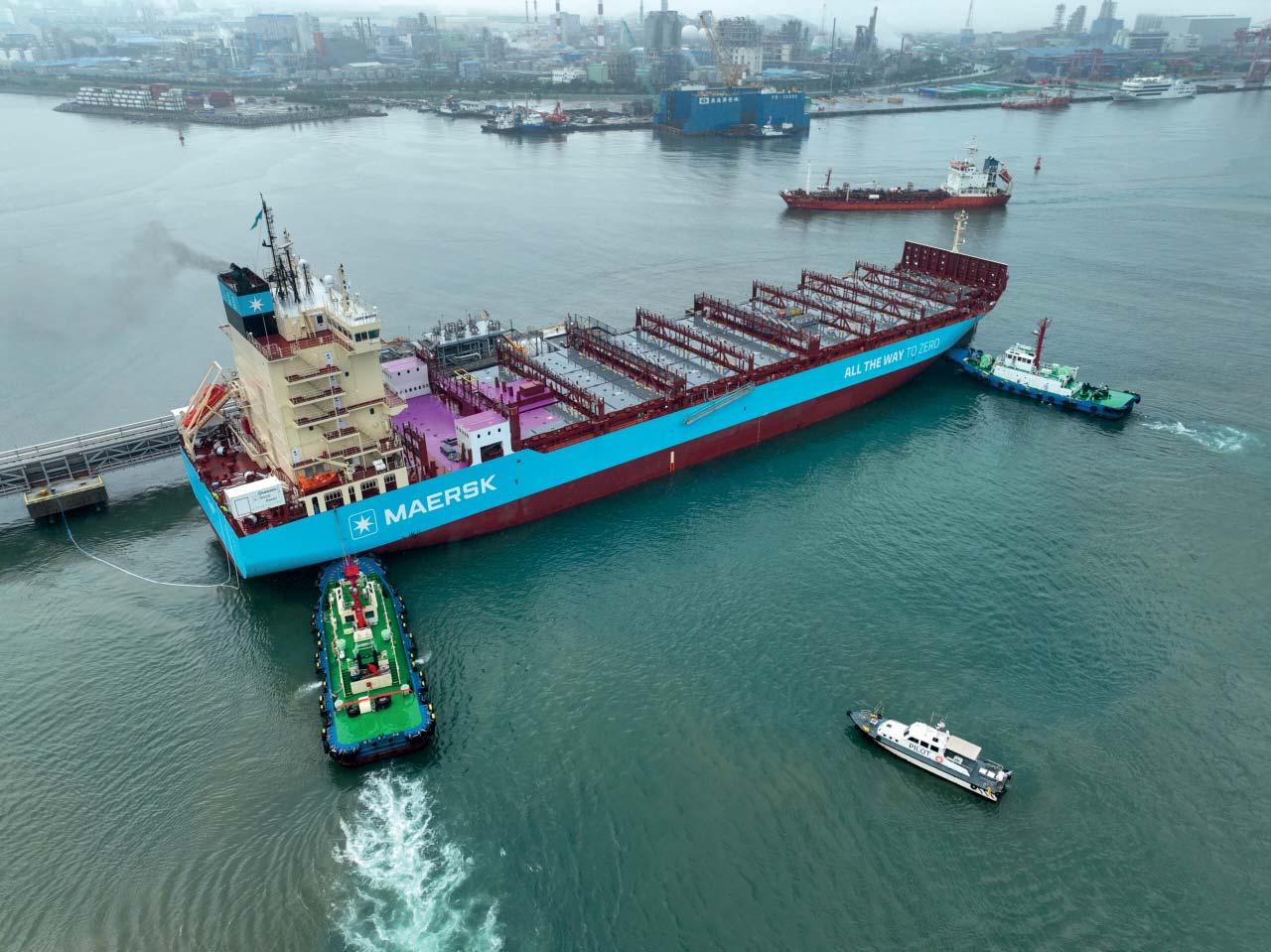
2030
“Right now, advanced biofuels, like the green methanol produced by OCI HyFuels and ‘drop-in’ biofuel blends, are the only low carbon shipping fuel alternatives available, and we expect will remain the dominant low carbon fuels up to the late 2020’s, when we can expect e-methanol and e-ammonia to start the enter the arena more meaningfully.”
He sees green methanol growing from now to 2030 and then likely to continue to supply a consistent proportion towards 2050. “E-ammonia will become more significant from 2030 onwards and is likely to become the most significant fuel in the sector by 2050, due to its zero emission credentials.
“However, it is important to note that strong regulation is needed to achieve net zero ambition. While EU regulations such as FuelEU Maritime and shipping’s inclusion into the EU ETS are helping drive current demand within the industry –the order book for duel-fuelled ships that can run on green methanol is increasing almost daily – regulation in other global regions need to catch up.”
The IMO has set strong ambitions and recognizes the need for low carbon fuels, which we welcome, says van Schalkwyk, but there is still a significant amount of detail to come, and
METHANOL & AMMONIA 32 | SEPTEMBER 2023 For the latest news and analysis go to www.motorship.com
this needs to come quickly to give the strategy overall – and especially the 2030 checkpoint - a chance of success. “Missing this first milestone could damage the credibility of the strategy, so we hope and expect to see more detail on binding targets, the specific mechanisms, and measures to monitor compliance and consequences for non-compliance to be announced in the upcoming sessions in 2024 and 2025.”
He would like to see more specific details about an effective carbon levy - which would accelerate the move away from fossil fuels, more detail about what is meant by ‘near zero’ GHG emission technologies, fuels and/or energy sources, defining what will be applicable to this target and specific targets for renewable and low carbon fuels use as an extension to the current target, which bundles GHG reduction technologies, energy sources and fuels together.
“As a fuel supplier decarbonising our own production processes, we welcome the life cycle analysis (LCA) or wellto-wake’ approach, which is the measure we ourselves use today to track the GHG reduction of our fuels and which takes the more comprehensive approach to decarbonizing the industry. However, we would like to see alignment between different regulatory bodies (i.e., IMO, European Commission) as much as possible to ensure consistency in measuring emissions.”
Glander International Bunkering focused on well-to-wake emissions when announcing in June that it had received the ISCC EU and ISCC Plus certificates from the International Sustainability and Carbon Certification (ISCC), a globally recognized independent multi-stakeholder initiative and leading certification system supporting sustainable, fully traceable, deforestation-free and climate-friendly biofuel supply chains.
The ISCC EU ensures compliance with the social and environmental sustainability criteria of the European Renewable Energy Directive (RED I and II). It guarantees that biofuels are not sourced from regions with high biodiversity or high carbon stock. The ISCC PLUS covers the entire supply chain, ensuring that biomass used in the production of biofuel is traceable and sustainably produced. This includes standards for social sustainability, human rights, labour rights and good working conditions.
“We see demand growing, and with FuelEU Maritime and IMO regulation it is only a matter of a few more months until most shipping companies will start bunkering biofuel blends,” says Ørjan Hauge, QHSE Manager (Quality Health Safety and Environment Manager), based in Glander’s Tønsberg office.
“We expect a slight shift in bunkering patterns to the ports which have established biofuel supply. This can be flow ports like ARA, Singapore and Algeciras but also other ports globally are developing to supply biofuel blends,” he says. “With the improving availability of biofuels in most ports, the demand will also come. Biofuel demand is expected to peak with the increasing need to meet decarbonization targets and just before alternative marine fuels will be available at scale. Not to forget that even after alternative marine fuels are available at scale, biofuels will still be relevant as a pilot fuel.”
Work continues on developing new pathways for biofuels. XFuel has developed novel technologies that produce carbon rich biochar and drop-in fuels simultaneously, delivering added carbon benefits via sequestration, in addition to the GHGs avoided with the production of sustainable fuels. This makes XFuel’s products potentially carbon negative.
Dylan Prins, Renewable Fuels Business Development at Titan, says: “Liquified biomethane (LBM/bio-LNG) production is scaling up rapidly. LBM is increasingly recognised as a sustainable fuel option that can be ‘dropped in’ and blended with LNG with no changes required on board the vessel or to bunkering, storage, or transportation infrastructure.”
The feedstock for LBM is domestic and agricultural waste, for example, household waste, sewage sludge, and manure. The second-generation feedstocks to scale up production and help meet the shipping industry’s demand for net-zero marine fuels are widespread, says Prins. Titan has started work on multiple LBM production and liquefaction plants. For example, the FirstBio2Shipping project – a collaboration between Titan, Attero, and Nordsol – received €4.3M in EU funding in 2021 and construction started in 2022. The plant, located at the Attero facility in Wilp, the Netherlands, will produce approximately 2,300 tons per year of LBM when fully operational, with the first set to be produced in early 2024.
Additionally, Titan, the Port of Amsterdam, and BioValue, have partnered to build the world’s largest biomethane liquefaction plant. Once fully operational, the plant can produce up to 200,000 tonnes of LBM per year. It is expected to be operational in 2025.
“This LBM production is reassurance that the LNG pathway to net zero shipping is a viable, lower-cost, and lower-risk option,” says Prins. “Shipowners and operators can choose LNG now, then transition to LBM as it becomes increasingly available, and then to hydrogen-derived e-methane as supply scales up alongside other e-fuels. An evolution from LNG to LBM to e-methane is safe, sustainable, practical, and it allows us to start reducing emissions today.”
According to SEA-LNG’s Bunker Navigator data, bio-LNG bunkering is available today in almost 70 locations worldwide, including Europe, North America and Asia.
Dionysis Diamantopoulos, Key Account Analyst at energy solutions provider Baseblue, says the maritime industry has a clear path to follow after MEPC 80. “It's clearer than ever that

METHANOL & AMMONIA For the latest news and analysis go to www.motorship.com SEPTEMBER 2023 | 33
8 Dionysis Diamantopoulos, Key Account Analyst at energy solutions provider Baseblue
‘‘
We see demand growing, and with FuelEU Maritime and IMO regulation it is only a matter of a few more months until most shipping companies will start bunkering biofuel blends
the maritime industry ecosystem has much to digest and address to achieve compliance, which is of grave importance to retain competitiveness and ensure survival and future success. The new reality dictates that change must be adopted. For some companies, the transition will be smoother, given their corporate DNA of innovation, while for others who are less accustomed to change, the process might feel abrupt.”
He believes that there are three pillars upon which companies should focus. First, optimising vessel efficiency is of the utmost importance to reduce consumption and consequently minimise GHG emissions. Secondly, integrating alternative fuels and the corresponding regulatory guidelines for decarbonisation (EU, IMO) highlights the essential need for compliance support. Third, as the EU emissions trading scheme (EU ETS) puts a price on CO2 emissions, reporting and paying for these will become essential. European companies are called to report their emissions and ‘pay’ for them by returning allowance titles called EUAs or European Allowances.
2040



Simon Bennett, International Chamber of Shipping (ICS) Deputy Secretary General, says the IMO’s 2040 checkpoint aiming for cutting 70-80% of total GHG emissions from international shipping, is particularly significant, indicating that shipping has less than 20 years – far less than the average lifecycle of a commercial vessel – to eliminate the vast majority of its GHG emissions.
The transition will call for a step change in the technology and fuels deployed in shipping and, critically, dramatic reductions in the relative cost of these technologies compared with conventional ship solutions and fuels. “We urgently need to reduce the cost gap between conventional and alternative marine fuels and incentivise the production and uptake of new fuels at the scale now required to meet this accelerated transition. 2040 is less than 17 years away and the availability of zero GHG marine fuels today is virtually zero.”
Guido Schulte, Managing Director Elomatic Maritime Technologies/Sales Director Marine & Offshore, says while much of the debate focuses on a choice of fuels, decarbonisation is fundamentally a design challenge. “Incorporating a new fuel, new technology, or just improving a vessel’s existing performance presents a major challenge to be solved at the design stage, whether for a newbuild or retrofit project.”
Future fuels will need more space onboard and present more hazards (e.g., toxicity of ammonia). Because of this, they require more thorough design and dedicated simulations in order to ensure and maintain a proper revenue potential and ship safety. Failure modes, such as explosions, contamination, and other eventualities need to be simulated in advanced computer models – especially for passenger vessels. Without a high level of computational resources and expertise, this places a heavy burden on the design team.
John Bergman Auramarine's CEO, says a key element of driving widespread uptake of future fuels is to ensure that the right bunkering and onboard operational infrastructure is in place to inspire ship owner and operator confidence. “With future fuel uncertainty leading to some ship owners stalling newbuild orders, there exists a requirement to scrutinise every aspect of the supply process and analyse the supporting fuel supply infrastructure to ensure ship owners are empowered to make the right decision and drive uptake.”
He says methanol is one of the most viable clean fuels for achieving decarbonisation targets by 2030, 2040 and 2050. However, the company takes a fuel agnostic approach, recognising the multi-fuel future of shipping, so having
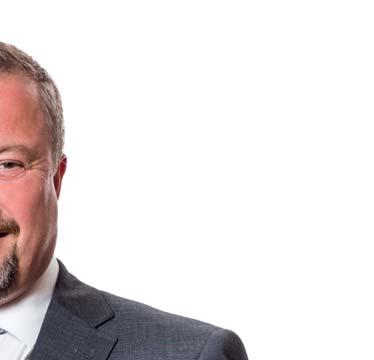

developed a methanol fuel supply system, it is now also developing one for ammonia.

In its recently published white paper Ammonia as an Essential Energy Carrier for the Energy Transition, ammonia-to-power company Amogy notes that by late 2022, 130 ammonia-ready vessels were already on order. Adoption in coming years will be driven by increasing volumes of clean ammonia production and ongoing reductions in the cost of clean ammonia delivered to end users. Technological innovations in vessel and propulsion system design will also be critical.
However, scaling the clean ammonia value chain to decarbonise priority sectors in line with global climate ambitions will require significant investments from private players, extensive collaboration among market participants, and a supportive policy and regulatory environment.
The white paper reinforces the call for policymakers to provide clear incentives to clean ammonia producers. They should also consider incentives for reducing the cost of new onboard technologies. While production incentives and carbon taxes can help deliver cost parity for alternative fuel options, shipowners will still incur additional costs for installing fuel cells, ammonia crackers, and other zero carbon power and propulsion technologies. Additionally, target setting and early adoption should be key priorities for shipowners.
METHANOL & AMMONIA 34 | SEPTEMBER 2023For the latest news and analysis go to www.motorship.com
8 Ørjan Hauge, QHSE Manager (Quality Health Safety and Environment Manager) at Glander
NH3 ADDS NEW TECHNICAL AND HUMAN ELEMENT RISKS
Lloyd’s Register Maritime Decarbonization Hub and the Mærsk Mc-Kinney Møller Center for Zero Carbon Shipping have analysed the onboard safety risks of ammonia as a shipping fuel to a ship’s crew
In Recommendations for Design and Operation of AmmoniaFuelled Vessels based on Multi-disciplinary Risk Analysis, the organisations evaluated a theoretical arrangement for a container ship, tanker and bulker each with a different storage system (fully refrigerated, semi-refrigerated, and fully pressurized, respectively).
They used an iterative approach to risk assessment that led to conclusions such as having a single fuel preparation room divided into three separate spaces on a semirefrigerated tanker reduces the individual risk per annum to engineering ratings by 56% risk relative to a base case. Increasing ventilation rates in the fuel preparation rooms and re-liquefaction room from 30 to 45 air changes per hour, together with modifications to the fuel system design would further reduce risk by 5%. Having a shut-off of the ventilation (rather than switching to recycle) in the accommodation upon gas detection in the ventilation intake would further reduce risk by 3%. And further subdividing the fuel preparation room to provide a separate room for duplex filters would further reduce risk by 9%.
The organisations see this iterative quantitative risk assessment (QRA) analysis as a powerful data-driven method that allows users to assess risk in a quantitative and granular manner. Overall, the analysis indicates that a lower storage temperature reduces the safety risk from ammonia fuel –with fully pressurised liquified gas being the riskiest storage type. The change from fully pressurised to semi-refrigerated storage on the bulk carrier resulted in a 26% reduction in individual risk per annum.

The study concludes that the risks to crew can be kept within published tolerable limits, provided that a range of mitigations are adopted. These include:
5 Division of the fuel preparation room into two or more separate spaces containing different groups of equipment that could leak ammonia.
5 Minimising, monitoring and controlling access to and length of time spent in spaces containing ammonia equipment.
5 Placing ventilation outlets from spaces containing ammonia equipment in a safe location adequately separated from areas accessed by the crew.
5 Installation of multiple, sensors of different types to detect ammonia leaks.
5 Installation of a distinctive, vessel-wide audible toxicity alarm for ammonia leaks.
5 Installation of ammonia leak alarms both in controlled areas (for example, the fuel preparation room) and near potential leak sources.
5 Subjecting the fuel system to rapid and reliable manual and automated shutdown in the event of an ammonia leak.
5 Depending on storage conditions and ammonia tank location, shutdown of the ventilation for crew accommodation should be made possible in the event of an ammonia leak. Additionally, secondary containment mechanisms, such as double-walled piping, used for ammonia-related equipment
outside of already-restricted areas have been proven to significantly reduce risk. Ventilated gas-tight enclosures installed around any gas valve units in engine rooms also reduce risk.
Ventilation challenges
Ventilation provides mitigation of toxic effects for many smaller, but not all, potential ammonia leaks. It is particularly efficient for smaller leaks, and reduces the risk of leaks reaching a flammable level, but it is only partly effective at preventing ammonia concentrations from reaching levels that may be fatally toxic. Even at short exposure times, the concentration threshold for ammonia toxicity is much lower than the threshold for flammability. Therefore, other additional precautions will need to be considered for personnel entering these spaces.
Gas detection is most challenging in a large space, such as an engine room. The study includes a CFD analysis of the dispersion of leaked ammonia, and this indicated that dispersion is highly dependent on the direction of the leak flow compared to the ventilation flow. Additionally, a high ventilation rate may divert the flow of a gas leak away from a gas sensor and may dilute the gas to a level where a leak is not detected. Therefore, an array of detectors will be needed. They could be of a variety of types (e.g., concentration, temperature, acoustic) to improve reliability.
The human nose is very sensitive to ammonia, but smell should not be relied upon as a leak detection method. After
8 The report noted that ammonia gas detection is most challenging in a large space, such as an engine room
METHANOL & AMMONIA For the latest news and analysis go to www.motorship.com SEPTEMBER 2023 | 35
a period of exposure to even low concentrations of ammonia, smell sensitivity decreases, and smaller leaks may not be noticed. The use of personal gas detectors could help address this problem.
Due to toxicity risks, mustering and abandonment procedures will need to be revised to reduce the potential for exposure of personnel to ammonia. Safe havens for sheltering and mustering would need to be engineered to account for potential ammonia impacts. This includes the use of totally enclosed motor-propelled survival craft which may instead need to replaced by other craft, similar to those used on chemical tankers.
Human factors
The organisations analysed human factors to complement the quantitative risk analysis. They considered training and work practices that would be impacted by a transition to ammonia fuel use and concluded that specific training will be required to prepare crews for operation and maintenance on ammonia-fuelled vessels.
For example, ammonia bunkering will introduce new hazards, safeguards, and crew activities. While personnel on conventional fuel oil vessels already undertake leak detection, this task would become more complex and require additional safeguards due to ammonia’s toxicity, explosivity, and flammability. The overall impact of the changes would be lower for personnel with LNG/LPG, bunkering, or ammonia cargo experience.
The introduction of ammonia-fuelled vessels may also change how the vessel interfaces with other organizations, such as ports, vendors, contractors, and other ships. Appropriate safeguards must be in place during these interactions to protect all involved in case of events such as leaks. For instance, firefighting regimes may need alteration where ammonia could be present or if the ammonia systems could be affected. Changes to spill response would be required, and activities where outside organisations may be involved would have to be rethought and addressed.
PPE
Effective occupational health safeguards, such as personal protective equipment (PPE), will need to be developed and implemented, and appropriate safety management procedures for emergency response and other events need to be developed. Additionally, it is important to anticipate potential side effects of some safeguards on task performance and timing.
For example, donning additional PPE such as respirators for maintenance tasks may physically encumber the crew. The organisations recommend that further guidance on specific PPE requirements be developed to define recommended PPE and other occupational safeguards for various expected operating and maintenance scenarios.
Additionally, various issues need to be addressed to ensure that personnel could be safely rescued after exposure to ammonia. This would include a review of the use of PPE and suitability of rescue equipment and first aid items. Personnel participating in this operation would need understanding of ammonia and its characteristics and hazards.
Safe work practices
Safe work practices and standard procedures will need to be updated and should be implemented through systematic change management programs. Most process hazards related to ammonia fuel revolve around control of storage and handling pressures and temperatures to prevent loss of containment and reduce effects of unwanted consequences
of any leaks or spills. Such consequences include accelerated corrosion, displacement of oxygen, fire, and explosions.
The organisations say that the introduction of ammonia fuel will be accompanied by various technical innovations including automation, new maintenance regimes, and modernisation of process control. As part of this process, the shipping industry will encounter challenges that require further attention to human factors themes.
To ensure the competency and preparedness of crew, contractors, and external emergency agencies, the industry as a whole and individual companies will need to tailor existing (or develop new) safety and emergency arrangements. These arrangements should be guided by the IMO’s International Safety Management (ISM) Code and should address all reasonably foreseeable unwanted events involving ammonia-fuelled shipping operations.
Acceptably safe
Seen as one of the most promising alternative fuels for the maritime energy transition, ammonia can be combusted with almost no carbon dioxide (CO2) emissions.
The report concludes that the risks to crew of using ammonia as an alternative maritime fuel can be kept to a tolerable level provided that the maritime industry can ensure that technical barriers, administrative safeguards and human factors are adequately addressed. The organisations state that the recommendations and results from this report can and should be used to further inform specific regulations, guidelines, and best practices that will allow ammoniafuelled vessels to be acceptably safe for the crew.
8 The study concluded that the risks to crew can be kept within published tolerable limits, provided that a range of mitigations are adopted, and identified that a lower storage temperature reduces the safety risk from ammonia fuel
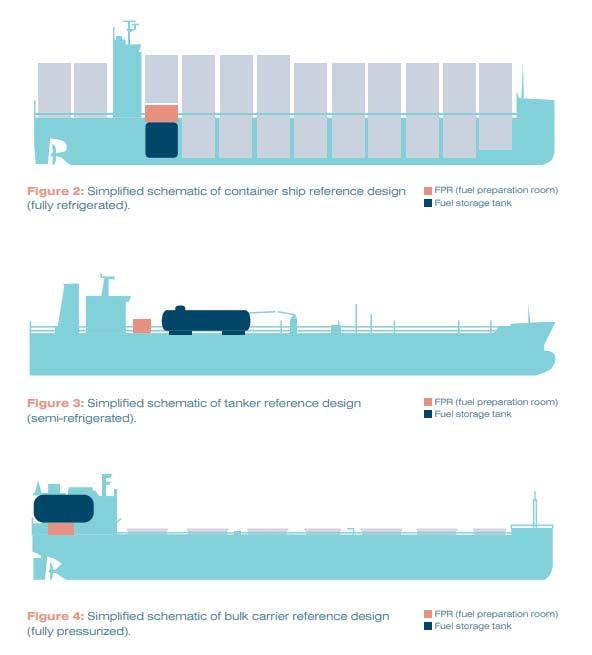
METHANOL & AMMONIA 36 | SEPTEMBER 2023For the latest news and analysis go to www.motorship.com
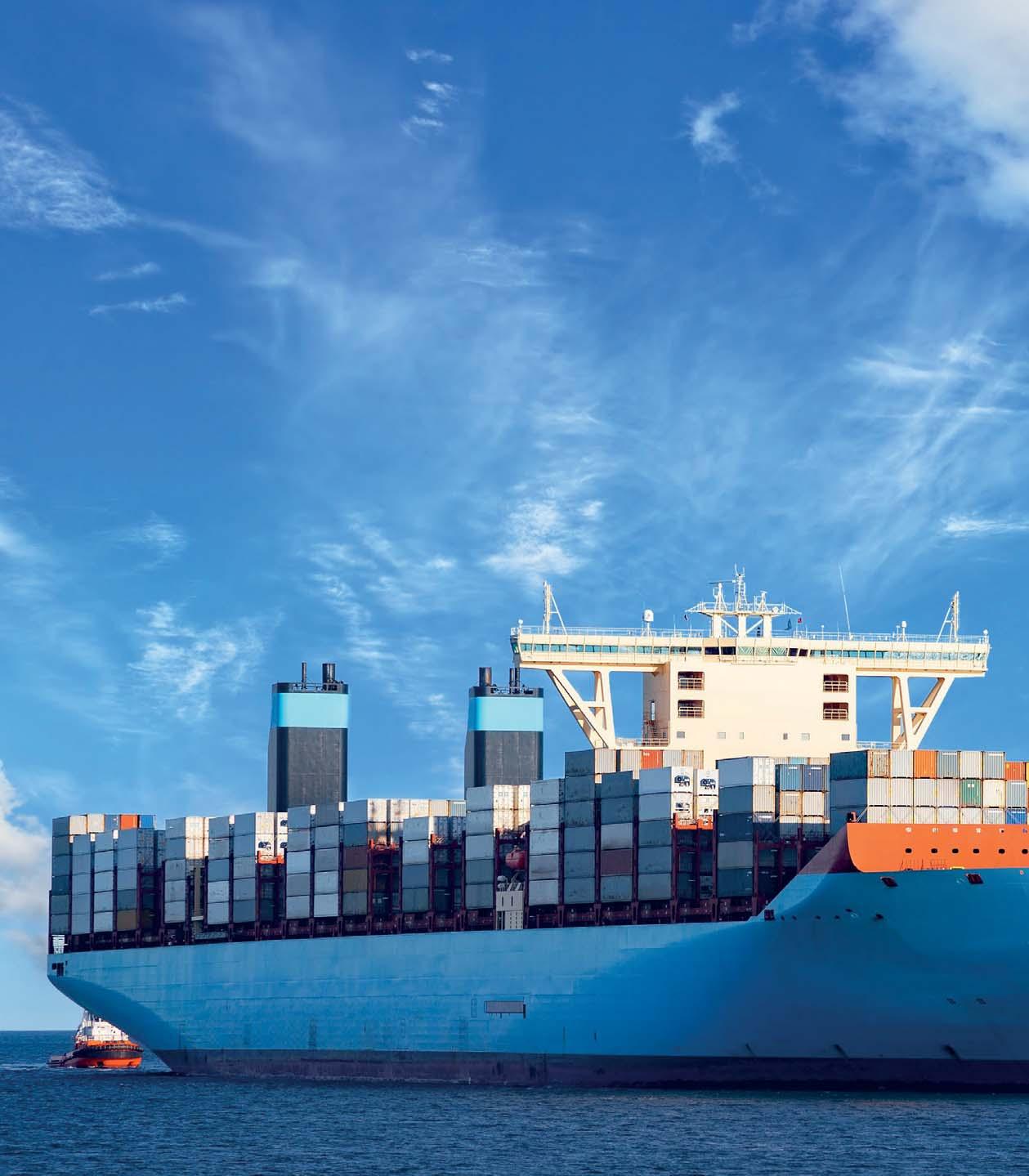

MOTORSHIP MARINE TECHNOLOGY THE Contact us today Reach industry professionals with The Motorship Promote your business to the right audience in the right place at the right time. Engage with our audience of senior marine engineers, from ship owners and commercial partners a wide range of opportunities for campaign delivery. We Motor Ship’s valued content is relied upon by shipping professionals and is delivered through multiple channels. Sue Stevens, Brand Manager t: (+44) 1329 825 335 e: sales@motorship.com www.motorship.com MAGAZINE RECIPIENTS DECISION MAKERS PAGEVIEWS PER MONTH 12,92572%40,330
11 13 TO JUNE 202 Southampton United Kingdom
Marine Civils is co-located with Seawork

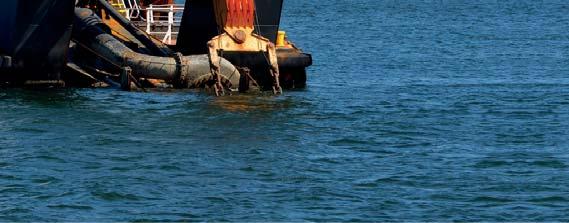

Marine Civils in association with Seawork, Europe’s leading commercial marine event. Dedicated to showcasing the latest equipment and solutions for marine, coastal and other challenging civil engineering projects with unique landscape features.
Reach a larger audience than ever before
Reserve now for 2024 and make the most of year round marketing support from Marine Civils, Seawork and our leading commercial marine
Marine Civils attracts representatives from:

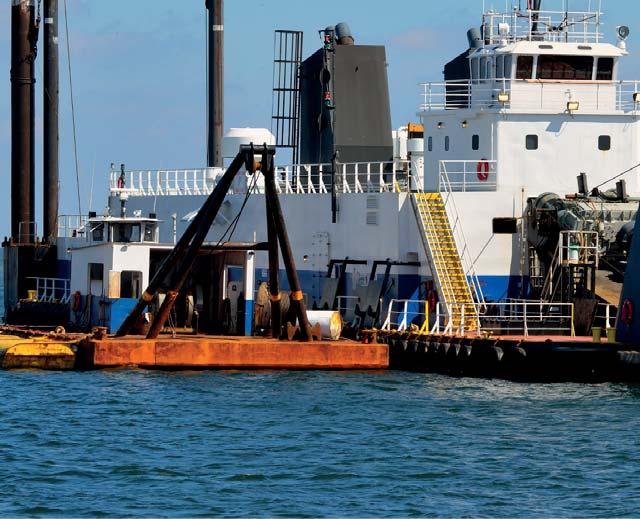


• Civil engineering
• UK port authorities
• Energy companies
• Conservation organisations, amongst others

With a big overlap in content and business for companies involved in marine construction, the event is uniquely positioned to provide invaluable opportunities to access wider relevant audiences via Seawork and Maritime Journal.

Supporters
For more information visit: seawork.com contact: +44 1329 825335 or email: info@seawork.com
Media partners:

MARITIMEJOURNAL

#Seawork
COMMERCIAL MARINE BUSINESS PORTSTRATEGY INSIGHT FOR PORT EXECUTIVES
LET’S TALK ABOUT BIO-LNG
What is bio-LNG? Bio-LNG is liquefied biomethane (LBM) and is a net-zero marine fuel chemically identical to LNG. In North America biomethane is sometimes also known as renewable natural gas (RNG); and in Europe as synthetic natural gas (SNG)
Emissions reduction will depend on how the bio-LNG is produced and the engines in which it is used. Typically, bioLNG can reduce GHG emissions by up to 80% compared to marine diesel on a full well-to-wake basis. If avoided emissions are taken into account, when it is produced from anaerobic digestion of manure, bio-LNG can achieve netnegative emissions of up to -190% compared with diesel.
Availability
Biomethane is mainly produced from anaerobic digestion of agricultural and human waste streams such as animal manure, silage, wastewater and landfill. It can also be produced through gasification of cellulosic waste, such as sawmill and forest harvest residues.
Production from sustainable feedstocks means bio-LNG does not disrupt the production of food, fibre or fodder. Sustainable feedstocks are nationally or regionally defined, for example by the EU (RED II) in Europe and the EPA (Renewable Fuel Standards) in the USA.
Biomethane production is currently approximately 10% of shipping’s total energy demand, and is well supported by regulators. The European Parliament has outlined biomethane production targets of 35 bcm/year by 2030 in its updated REPowerEU plan, up from 18.4 bcm/year today.
Meanwhile in the USA, the Inflation Reduction Act supports biomethane supply by extending tax credits to all biogas sectors, including wastewater treatment, farming, the food sector, renewable energy, renewable natural gas, and renewable heat.

SEA-LNG recently commissioned an independent study conducted by the Maritime Energy and Sustainable Development Centre of Excellence (MESD CoE) at Nanyang Technological University, Singapore (NTU Singapore). This examined the role of bio-LNG in shipping’s decarbonisation and conservatively estimated that pure bio-LNG could cover up to 3% of the total energy demand for shipping fuels in 2030 and 13% in 2050. If it is considered as a drop-in fuel blended at a ratio of 20% with fossil LNG, bio-LNG could cover up to 16% and 63% respectively.
Recognising this opportunity, the European Parliament, for example, has already put money behind its ambitious targets, offering subsidies for major production plants.
Looking at only a few examples from SEA-LNG members, Titan has announced it will build the world’s largest biomethane liquefaction plant in the Port of Amsterdam. BioLNG production is expected to commence in 2025 with the plant producing 200,000 tonnes-per-year once at full capacity. Titan has also started work on a plant located at the Attero facility in Wilp, Netherlands. The FirstBio2Shipping project will produce around 2,300 ton/year of bio-LNG for the shipping industry.
Gasum is consecutively constructing five large biogas plants in southern Sweden. The construction of the first will begin during 2023. The plants will use 1.8 million tons (750 GWh) of different kinds of waste streams for feedstock and produce 55,000 tons of liquified biogas per year. It has also announced a new plant in Vormstad, Norway which will treat
up to 500,000 tons of organic waste per year and produce up to 150 GWh of biogas for the trucking and shipping sectors.
According to recent SEA-LNG analysis of LNG infrastructure, bio-LNG is bunkering is available in almost 70 locations in Europe, North America and Asia – including Singapore, Rotterdam and the US east-coast. The restructure is mapped on SEA-LNG’s Bunker Navigator tool.
Costs
While shipping , like other industries, will have to bridge the cost gap between fossil and biogenic fuels, bio-LNG is expected to be among the cheapest biogenic fuels and can potentially offer significant cost advantage over e-fuels by 2050, according to the MESD CoE report.
The research forecasts that the average cost for delivered bio-LNG will fall by 30% by 2050, mainly driven by the reduced cost of producing biomethane in large-scale anaerobic digestion plants. Bio-LNG is expected to be cheaper than bio-methanol, e-ammonia and e-methanol.
Bio-LNG can also be used as a drop-in fuel in existing LNG-fuelled engines and can also be transported, stored and bunkered in ports using the existing global LNG infrastructure, significantly reducing the required infrastructure investment.
Bio-LNG is commercially available now and is being used as a drop-in marine fuel by ship operators, meanwhile supply is scaling up rapidly using sustainable feedstocks and backed by regulators. Bio-LNG – a key step on the practical, lower-cost and lower-risk LNG pathway – can make a significant contribution towards shipping’s decarbonisation today and in the future.
FUELS & LUBRICATION For the latest news and analysis go to www.motorship.com SEPTEMBER 2023 | 39
8 Peter Keller, Chairman of SEA-LNG
BV STUDY QUANTIFIES CCS CII BENEFIT FOR BULKER VESSELS
Bureau Veritas (BV) participated in a project that aims to support the future commercial application of CCS technology, especially for older vessels in operation, and demonstrated the potential CII benefits
8 The system estimated that the CCS system designed by QIYAO ENVIRON TEC (pictured) for Tianjin Venture would consume 268 kWh of electrical power and 70 kg of fuel oil for the boiler to produce the extra steam per tonne of CO2 captured
BV delivered an Approval in Principle (AiP) to Wah Kwong Maritime Transport Holdings, a Hong Kong shipowner, and Shanghai Marine Diesel Engine Research Institute (SMDERI), a subsidiary of China State Shipbuilding Corporation, for a carbon capture and storage (CCS) project in June. The AiP was delivered following a joint study that validated the technical feasibility of using CCS technology on two existing Wah Kwong bulk carriers.
SMDERI developed a customised design of a CCS unit for the two vessels based on their specific design parameters. The CCS unit has passed laboratory tests, achieving over 85% CO2 capture from the exhaust gas flow, and it is now being continuously optimised and upgraded. The system is based on an organic amine solution that extracts CO2 from exhaust gas before it is liquified and stored.
BV provided comprehensive support throughout the project, from vessel selection in the early stages to the design layout of the CCS system on board, certification, and cost analysis. The two vessels selected were the 53,000 dwt Supramax bulk carrier Tianjin Venture and the 176,000 dwt Capesize bulk carrier CSSC Wan Mei. The study showed that in the case that CCS is recognised in the official CII calculations going forward, CCS would enable the two vessels to maintain a CII rating of C until at least 2030. It confirmed the technical viability of retrofitting CCS technology on existing ships to reduce their GHG emissions at the levels required to ensure compliance with the new CII regulation.
Tianjin Venture
The first vessel in the study was the 53k dwt. Supramax Tianjin Venture, which has a MAN 6S50MC-C main engine, three Daihatsu diesel generator engines (not connected to the CCS scrubber) and one composite type steam boiler. An
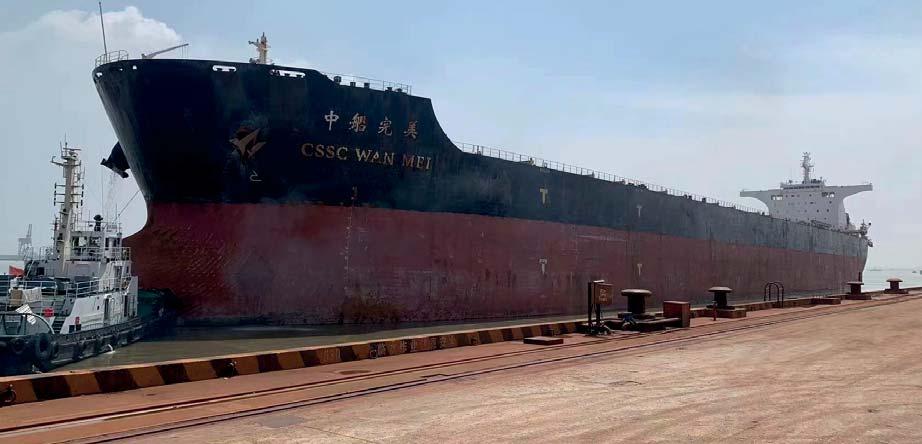
evaluation of the vessel’s operational data (DCS 2021) indicated that if it is to continue operating until 2030, measures will need to be taken to maintain its annual CII rating to an acceptable level (at least a C rating).
A CCS system with a CO2 capture rate of 1 ton per hour would enable the Supramax vessel to extend its C ratings until at least 2030. The system operates with power from the generator engines and with steam generated from the oilfired composite boiler. The generator engine exhausts and the boiler’s burner exhausts are not connected to the CCS. The CCS captures CO2 emitted from the main engine exhausts in the seagoing condition, therefore, an iterative computation was applied to determine the net CO2 capture rates to attain the desired CII rating. According to the CCS system designed by QIYAO ENVIRON TEC for Tianjin Venture, capturing one ton of CO2 will consume 268 kWh of electrical power and 70 kg of fuel oil for the boiler to produce the extra steam. To attain a C rating in 2023, the CCS would need to capture a total of 1,442 m3 of CO2 which is compressed and liquefied for storage at 7 barg and –46°C. This corresponds to a CO2 capture rate of 10.2% in 2023. As the CII requirements get stricter, the CCS capture rate will need to increase each year, with the capture rate reaching 29.5% (or 4,528 m3) in 2030.
The study examined whether the power and steam available were sufficient to run the system and satisfy all the consumers onboard under all operating conditions. The amount of steam required by the system is 1 t/h at 0.7MPa. Based on the steam balance, with the system in operation during seagoing condition and hotel load at the winter condition, this criterion is met with the existing boiler.
For the supramax Tianin Venture, the smaller of the two ships, the limited space available was one of the biggest challenges to overcome. Additional considerations were the
DESIGN FOR PERFORMANCE 40 | SEPTEMBER 2023 For the latest news and analysis go to www.motorship.com
weight of the system and the weight of the captured/stored LCO2 which come at the expense of cargo (except for cases of light cargoes). The LCO2 storage tanks also needed to be adequately sized to retain a satisfactory amount of CO2 considering the ship’s cruising range. For the Tianjin Venture, due to the space limitations, the optimal location for the CCS was found to be around the engine casing aft of the funnel.
Instead of a single large tank, four smaller LCO2 storage tanks were preferred since these were easier to position on the limited deck space. The four tanks would each have a capacity of 100m3 and be installed on deck in way of the No. 5 cargo hatch. Alternatively, the cross decks were also an option to place the tanks. The dry weight of CCS equipment, including the LCO2 tanks, is about 289.3 tons.
The ship’s stability was also considered by the study. The newly added lightweight after the retrofit would have a vertical centre of gravity (VCG) of 21,800mm:
at sea could be re-checked to verify whether the ‘as-built’ ship has this margin or whether the steam consumption should be supplemented by installing additional electric heating in the air handling unit.
As with the Tianjin Venture, from previous experience with scrubber retrofits, there would not be a need to repeat the shaft alignment calculation. As the Cape is a much larger ship than the Supramax, the pre-engineering calculations showed that stability would not be an issue on the Cape.
Cost analysis

A high-level CAPEX and OPEX estimation was carried out, along with a preliminary analysis of the savings from EU ETS allowances for the period from 2023 to 2030. In addition to EU ETS savings, the study also calculated the value of the captured LCO2 assuming it could be potentially traded as a commodity for re-utilization within an LCO2 circular economy. Assuming the ships sail between EU and non-EU ports, and that the legislation accepts CCS as a countermeasure to reduce CO2 emissions, for Tianjin Venture, the EU ETS savings would be $1,375,600 between 2023 to 2030, with the value of the captured LCO2 amounting to $6,767,952. For CSSC Wan Mei, the cost savings from EU ETS would be $2,254,500, with the value of the captured LCO2 amounting to $11,092,140.
This analysis therefore illustrates that the application of CCS technology in ships is feasible and economical under the increasingly strict regulations taking effect. However, there are still uncertainties to be considered, such as whether CCS will be formally recognised under those regulations, how to handle the collected CO2, the potential for a carbon tax to be introduced, and whether non-EU countries will propose similar ETS regulations. These factors will require careful consideration, but there is no doubt that CCS is
5 Intact stability: the intact stability based on the new VCG after retrofit would be approved on the revised loading manual.
5 Damage stability: The study highlighted that the damage stability in accordance with the International loadline convention requirement ICLL Reg. 27(11) would be marginal. If this project were to proceed to the detail design stage, the designer should perform a detailed calculation considering heights of openings such as hatch coaming corner tops, vent heads and air pipes, as necessary.
CSSC Wan Mei
The second vessel in the study is the 176k dwt Capesize bulk carrier the CSSC Wan Mei, which has a MAN 6S70MC-C main engine, three Yanmar diesel generators (not connected to the CCS) and one composite type steam boiler (oil-fi burner exhausts not connected to the CCS). Like the Tianjin Venture, the CII ratings of CSSC Wan Mei were estimated and the target CII values calculated for applying CCS technology.
The study showed that a system with a CO2 capture rate of 1.6 tons per hour would enable the Capesize vessel to attain C ratings until at least 2030. The capture of 1.6 tons of CO2 will consume 538kWh of electric power and 112 kg of fuel oil for the boiler to produce the extra steam. The CCS capture rate would need to be 5.8% in 2023 and increase gradually every year to 26.3% in 2030 to maintain a CII rating of C.
The dry weight of the CCS system for the CSSC Wan Mei would be about 364.9 tons, which would result in inevitable loss of cargo carriage. The total capacity of the existing boiler is 4.2 t/h, and with the CCS system in operation, the steam consumption at sea in the winter condition would be 4,498 kg/h. In principle, the capacity of the existing boiler is marginal, so the actual winter operational steam consumption
ve a VCG ding mage dline inal. age, ation ming bulk main d to red anjin ogy te of ttain CO2 el oil ture ually able oiler eam ,498 er is ption
consideration no is already an effective technical solution to reduce carbon emissions from ships, and a customised design for specific ships will ensure the best savings while meeting regulations.
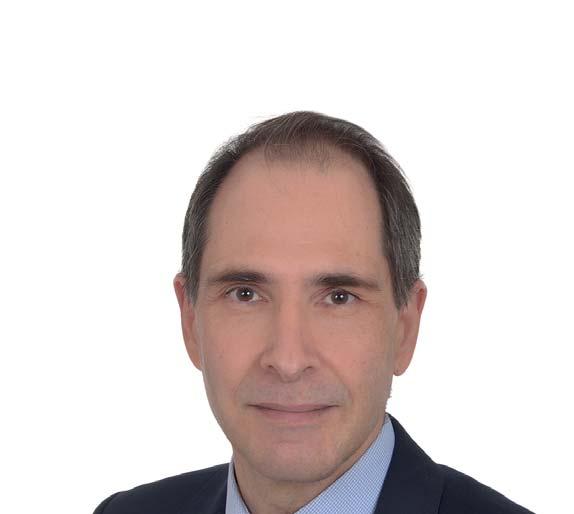
For the latest news and analysis go to www.motorship.com SEPTEMBER 2023 | 41
DESIGN FOR PERFORMANCE
As with the Tianjin Venture, from previous experience with scrubber retrofits, there would not be a need to repeat the shaft alignment calculation. As the Cape is a much larger ship than the Supramax, the pre-engineering calculations showed that stability would not be an issue on the Cape
8 Georgios Raptakis, Manager, Marine Sustainable & Energy Transition Development, Bureau Veritas Marine & Offshore
BRIGHTEST STARS RISE ACROSS THE BALTIC
Bringing new scale to the ro-pax fleet deployed by Finnlines, the 235m Finnsirius is scheduled to start trans-Baltic service during September this year following July 18 handover by China Merchants Jinling Shipyard in Weihai. By David
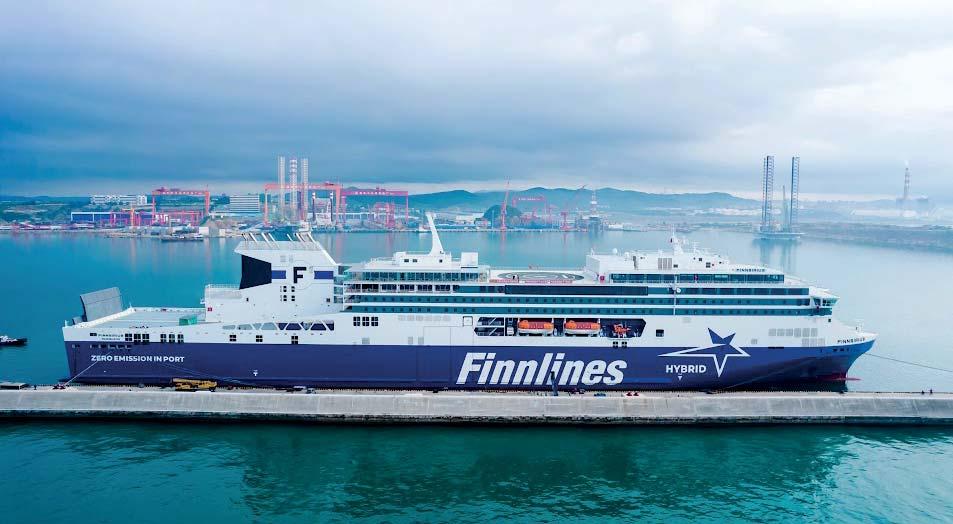 Tinsley
Tinsley
The first of two sisters ordered from the prolific Chinese ferry builder, the 65,700gt vessel incorporates hybrid power arrangements among a raft of emission-reducing, fuelsaving features. Besides a substantial battery pack, the design includes a shore power connection, under-hull air lubrication, exhaust gas abatement, waste heat recovery, and auto-mooring.
The brace of ro-pax ferries constitutes a $270m investment in the route linking Naantali, near Turku, with Kapellskar, which also entails the briefest of calls in the Aland Islands at Laangnas. The year-round operation across the central Baltic, which provides a conduit for freight and passengers on a capital-tocapital(Helsinki/Stockholm) corridor, has necessitated comprehensive provision for a challenging environment, as expressed in construction to 1A Super ice class standard and in elements conductive to onboard comfort.
Finnsirius is to be phased into the September timetable by undertaking evening departures from Kapellskar and morning sailings from Naantali. Fitting out of Finncanopus at Weihai is on track for her introduction in December 2023.
Designated the Superstar generation, the design’s 5,200 linear-metre ro-ro intake denotes a 24% increase in freight loading compared with the existing mainstays of the route, while the 1,148 passenger capacity is more than double that currently available. The vessels that will be superseded, the 219m sisters Finnswan(ex-Nordlink) and Europalink, are products of the Italian shipbuilding industry, having been completed by Fincantieri in 2007. Finnsirius has become the largest ro-pax in the Finnlines fleet.
The Superstar project forms the second phase of the
Green Newbuilding Programme implemented by the Helsinki-headquartered company, part of Italy’s Grimaldi Group, following delivery from China of the three hybrid ro-ro freight carriers of the Finneco series during 2022.
Both concept and tender design for the Finnsirius type was entrusted to the Elsinore consultancy Knud E Hansen, consequently rendering arrangement and structural drawings, specification, stability calculations as per SOLAS 2020 requirements, and machinery diagrams, with recourse to computational fluid dynamics(CFD) techniques for hull optimisation.
Each ship’s operational remit, embracing one overnight sailing and one day sailing on every 24-hour cycle, called for measures to ensure fast turnarounds through expeditious handling of ro-ro cargo, and optimisation for 16-knot and 19knot voyage speeds, with a significant margin of power and speed assured for schedule recovery. The bar was set high as regards onboard comfort, and as to the overall level of travel experience for passengers and commercial drivers alike. A wider range of shipboard facilities, compared to the older ships, is complemented by ample scope for viewing the scenic archipelago passage.
Efficient capability for the prescribed speed profiles, whereby 16 knots can be maintained with two engines, and 19 knots with all four fired-up, is conferred by an innovative two-speed gearbox solution, claimed by Kongsberg Maritime to give a propulsion efficiency increase of about 3% compared with a single-speed gearbox. It forms part of the propulsion and manoeuvring system contract entrusted to the Norwegian vendor.
SHIP DESCRIPTION 42 | SEPTEMBER 2023 For the latest news and analysis go to www.motorship.com
8 Hybrid ro-pax ferry Finnsirius, another high-grade product of Chinese shipbuilding
Credit: Finnlines
SHIP DESCRIPTION
The twin shafts turn Kongsberg controllable pitch propellers. The Superstar application entails an integrated propeller/rudder system, in which hydrodynamic performance is maximised, thrust is enhanced and drag is reduced. Moreover, the rudder is of ‘twisted’ design, further improving manoeuvrability. The combination of aft-end measures in the twin-screw vessels is expected to realise efficiency gains of up to 6%.
The overall Kongsberg delivery is categorised as an Ice Class 1A propulsion package, allowing the vessels to work in sub-Arctic or Arctic conditions, coping with floating ice and extreme cold.
Thoroughly-proven, wide-bore medium-speed diesel machinery, in the shape of the Wartsila 46F series, has been nominated for the multi-engine installation in the new ferries. Each shipset comprises four units delivering 7,200kW for a primary power concentration of 28,800kW.
Wartsila’s involvement extended to the thrusters and a hybrid shaft generator system comprising a fully integrated Multidrive capable of driving the shaft alternators in both directions, as either electric motors or generators. Operation on batteries or shore power while in port is encompassed by the proprietary energy management system.
Manufactured at the Corvus plant in Norway, the battery system comprises banks of Orca Energy modules for an aggregate 5,096kWh capacity. The energy storage installation, charged from the shore or by the shaft generators, gives the potential for the vessel to effect peak shaving when under way and to manoeuvre on battery power, saving fuel and avoiding emissions close to shore and in port. Both the batteries and the onshore power connection provide sources of energy to feed the ship’s net and cover the hotel load while alongside, obviating the need to run gensets and thereby cutting emissions and noise.
Finnsirius is a new showcase for the air lubrication solution developed by the UK company Silverstream Technologies. The system uses lines of air release units(ARUs) fitted in the flat bottom to generate a carpet of microbubbles that travel the full length of the hull, creating a boundary layer that reduces friction as the ship travels through the water. The
PRINCIPAL PARTICULARS - Finnsirius
Length overall 235.6m
Length bp 217.7m
Breadth, moulded 33.3m
Depth 10.2m
Draught 7.0m
Gross tonnage 65,692t
Deadweight 12,540t
Decks, complete 11
Decks, partial 1
Passenger capacity 1,148
Ro-ro freight 5,200 lane-m
Cars 200
Main engine power 4 x 7,200kW
Speed, service 16/19kts
Speed, maximum 21kts
Battery capacity 5,096kWh
Class RINA
Class notations C+, +AUT-UMS, BWM-T, COMFNOISE-B, COMF-VIB-B, Green
Plus, HVSC-NB, Ice Class 1A
Super, INWATERSURVEY, SRtP, +SYS-IBS, +SYS-NEQ-1, TAS
Ice class 1A Super
Flag/registry Finland/Mariehamn
Grimaldi Group had used the Silverstream system on its GG5G ro-ro freight vessels, initial test applications having yielded fuel and emission savings of just over 5%.
‘Intelligent’ LED lighting management and ‘smart’ air control systems save energy by automatically adjusting settings in the cabins. Recycled and ecological material choices have been considered throughout the design process and figure in furnishings and fittings.
Finnlines and the Finnish Seafarers’ Union reached an agreement to ensure that the Superstar generation would operate under the Finnish flag and employ Finnish personnel. The vessels will offer 200 new, permanent jobs and take on extra crew during the high season.
8 The introduction of the Finnsirius and sister vessel Finncanopus will increase capacity on the trans-Baltic crossing linking the port of Naantali near Turku in Finland (pictured) with Kapellskar north of Stockholm in Sweden

For the latest news and analysis go to www.motorship.com SEPTEMBER 2023 | 43
Powering shipping’s emissions-cutting ambitions
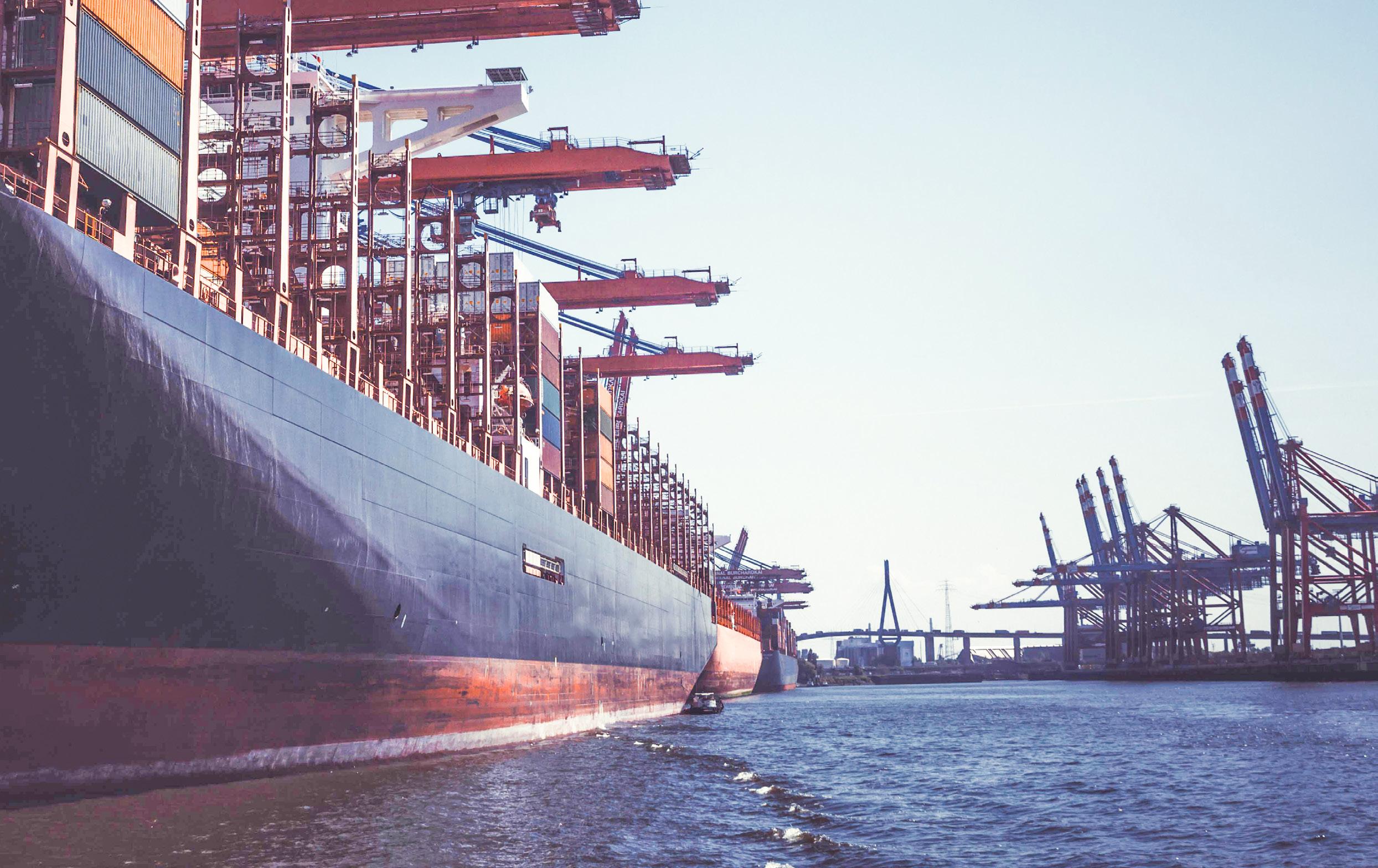
Propulsion stream | Alternative fuels stream | Technical visit









Two days of conference streams commencing with a keynote panel focused on the cost of financing decarbonisation and who is going to pay, followed by sessions that will explore the Fuels for 2030, Safety challenges with new technology and the shortlisted nominations for the Motorship Awards. Within the streamed sessions on day 2 you can expect to learn about the specific challenges with LNG / bio methane, ammonia, methanol, liquefied hydrogen, retrofit solutions, advances in lubrications, and carbon capture.
Chairmen:
Lars Robert Pedersen, Deputy Secretary General, BIMCO

Markus Münz, Managing Director, VDMA Large Engines
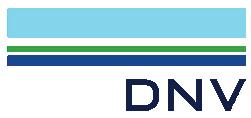
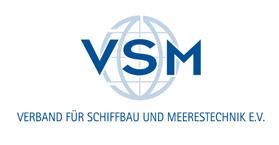
Sponsored by:


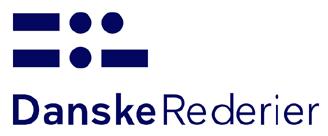

Supported by:
visit: propulsionconference.com

contact: +44 1329 825335
email: conferences@propulsionconference.com
 Empire Riverside Hotel, Hamburg Conference Programme
Empire Riverside Hotel, Hamburg Conference Programme
23 TO NOV 202 3 21 Hamburg Germany 2023 44TH MOTORSHIP MARINE TECHNOLOGY
#MotorshipPFF
THE Media partner: Media supporters:
DAY ONE - TUESDAY 21 NOVEMBER 2023
08:00 Coffee & Registration
09:00 Chairman’s welcome
Lars Robert Pedersen, Deputy Secretary General, BIMCO
KEYNOTE PANEL: THE COST OF DECARBONISATION & WHO IS GOING TO PAY?
Moderator: Lars Robert Pedersen, Deputy Secretary General, BIMCO
Annika Kroon, Head of Unit D1 Maritime, Transports & Logistics, European Commission
Simon Bennett, Deputy Secretary General, International Chamber of Shipping
Martin Kröger, CEO, VDR (German Shipowners’ Association)
Markus Münz, Managing Director, VDMA Large Engines
Wolfram Guntermann, Director Regulatory Affairs, Hapag-Lloyd AG
10:30-10:50
Coffee and Networking
SESSION 1 THE SOLUTIONS FOR 2030
Moderator: Sebastian Ebbing, Technical Advisor, German Shipowners’ Association
10:50-11:50
Reaching 2030: the continuous marathon of change – regulatory, technological and financial challenges.
Antony Vourdachas, Principal Engineer, Global Sustainability, ABS
Whether it is the IMO CII, EU ETS or FuelEU, Ship Operators are facing major challenges adapting to the new regulatory landscape. Multiple ship types and operational profiles require different approaches to reaching the mid-term 2030 goals and one solution does not fit all.
Taking efficiency to the next level for large cargo vessels
Oskar Levander, SVP Business Development, Business Development, Kongsberg Maritime Finland OY
Breaking new ground for efficiency in the marine industry
Janne Pohjalainen, Global Product Line Manager, ABB Dynafin™, ABB Marine & Ports
ABB Dynafin™ is a new concept representing a revolutionary propulsion system breaking new ground for efficiency in the marine industry.
Maritime Energy Transition to 2050
Rasmus Stute - Area Manager, DNV Maritime
Gain the latest insights from DNV’s Energy Transition Outlook to 2050. How will the maritime industry respond to the decarbonization challenge? What will the maritime fuel mix look like in the years to come?
11:50-12:10 Q&A
12:10-13:40 Lunch & Networking
SESSION 2: SAFETY CHALLENGES FOR NEW TECHNOLOGY
Moderator: Lars Robert Pedersen, Deputy Secretary General, BIMCO
13:40-14:40
Enabling sustainable scalable fuel pathways – with a focus on Ammonia
Claus Winter Graugaard, Head of Onboard Vessel Solutions, Mærsk Mc-Kinney Møller Center for Zero Carbon Shipping
Optimizing the lubricant supply towards 2030
Serge Dal Farra, Global Marketing Manager, Total Lubmarine
The operation challenges that ship operators face grow daily with increasing scrutiny on decarbonization efforts. How engines are lubricated is a critical piece of this puzzle. We are actively developing new ways to make our customers’ lives easier. We are doing this by using the benefits of better ship connectivity, using quality operational and performance data, improving engine monitoring and lubrication planning, and using digital ordering to maximize uptime and delivery efficiencies.
Book online at motorship.com/PFFBOOK or fax form to +44 1329 550192 For further information please call +44 1329 825335 or email conferences@propulsionconference.com Book online at motorship.com/PFFBOOK or fax form to +44 1329 550192
New Technology & Safety
Paul Hughes, President and Co-Founder, Shift Clean Energy
Using a pay-as-you-go subscription model for electrification, swappable batteries create a viable solution for maritime decarbonization. With a commercial subscription model, customers pay for energy used per trip, eliminating typical barriers of electrification such as capex, charging infrastructure, and battery maintenance.
Exploring the integration challenges in the maritime
Gisle Anderssen, VP Sales and Marketing, Vard Electro Integrating power systems with alternative fuels to achieve optimal energy efficiency for sustainable operations.
14:40-15:00 Q&A
15:00-15:30 Coffee and Networking
SESSION 3: THE MOTORSHIP AWARDS
15:30-17:00
• WinGD
Variable Compression Ratio (VCR) solution for X-DF engines
Marcel Ott, General Manager Sales China & Global Application Engineering
Deputy Managing Director WinGD China, Shanghai
• Wärtsilä
Ultra low emission gas engine technology
Diego Delneri, General Manager, Systems & product performance
• ABB
Technical aspects of ABB Dynafin™ propulsion concept
Janne Pohjalainen, Global Product Line Manager, Marine Propulsion, ABB Marine & Ports
• Ship Operator/Wärtsilä
Fit4Power - Speaker(s) TBC
17:00 Conference wrap-up and close
18:30 Conference Dinner
DAY TWO - Wednesday 22 November 2023
08:30 Coffee & Registration
09:00-09:15 Recap of day 1 by Chairmen
Lars Robert Pedersen, Deputy Secretary General, BIMCO
10.30-10.55 Coffee Break
SESSION 4: PANEL DISCUSSION: LNG BEYOND TRANSITION
Moderator: Lars Robert Pedersen, Deputy Secretary General, BIMCO
09:15-10:35 New generation of LNG fuelled container vessels: what has been improved and what will come next?
Can Murtezaoğlu, Business Development Manager EMEAI, GTT
Tom Strang, SVP Maritime Affairs, Carnival Corporation & plc
Elvis Ettenhofe, Head of New Marine Solutions, Four Stroke Marine & License, MAN Energy Solutions
Charlotte Røjgaard, VeriFuel Global Business Director, Bureau Veritas VeriFuel*
10:35-10:55 Coffee and Networking
Book online at motorship.com/PFFBOOK or fax form to +44 1329 550192 For further information please call +44 1329 825335 or email conferences@propulsionconference.com Book online at motorship.com/PFFBOOK or fax form to +44 1329 550192
SESSION 5
10:55-12:15
SESSION 5.1 AMMONIA
Moderator: Lars Robert Pedersen, Deputy Secretary General, BIMCO
Ammonia as a Shipping Fuel: Project
AmmoniaMot and research into 4-Stroke Engines in Medium and High-Speed Applications
Alexander Feindt, Global Business Development Manager, Marine (4-Stroke), MAN Energy Solutions SE
2-Stroke engines will use ammonia in 2025, but what about 4-Stroke engines in smaller vessels? Listen in to hear about state of development and the AmmoniaMot project.
Pathway to Zero Carbon Emissions – Ammonia as Fuel
Dieter Hilmes, Senior Sales Manager, TGE Marine Ammonia will be one of the most important fuels for driving forward the decarbonisation of shipping. Dieter will highlight the opportunities and challenges that this new maritime fuel will bring.
Bringing ammonia 2-Stroke engines to the marine market
Marcel Ott, General Manager Sales China & Global Application Engineering Deputy Managing Director WinGD China, Shanghai
Reliability and Robustness in Ammonia fuel supply systems
Konstantinos Fakiolas, Naval Architect & Marine Engineer, MSc Marine Technology & Ship Science, MBA, Business Development Manager, Marine Market segment, Nikkiso Clean Energy and Industrial Gases
SESSION 5.2 METHANOL
Moderator: Markus Münz, Managing Director, VDMA Large Engines
This session will be looking at the specific challenges with methanol.
Methanol: A Future-Proof Marine Fuel
Greg Dolan, Chief Executive Officer, Methanol Institute
Methanol has emerged as a leading alternative marine fuel, now dominating the orderbook for newbuild container ships. Let’s explore methanol’s role as a practical, affordable and sustainable marine fuel, across the full range of shipping.
Decarbonizing global shipping: The practical steps to leveraging green methanol’s potential Barend Van Schalkwyk, Business Development Director, OCI

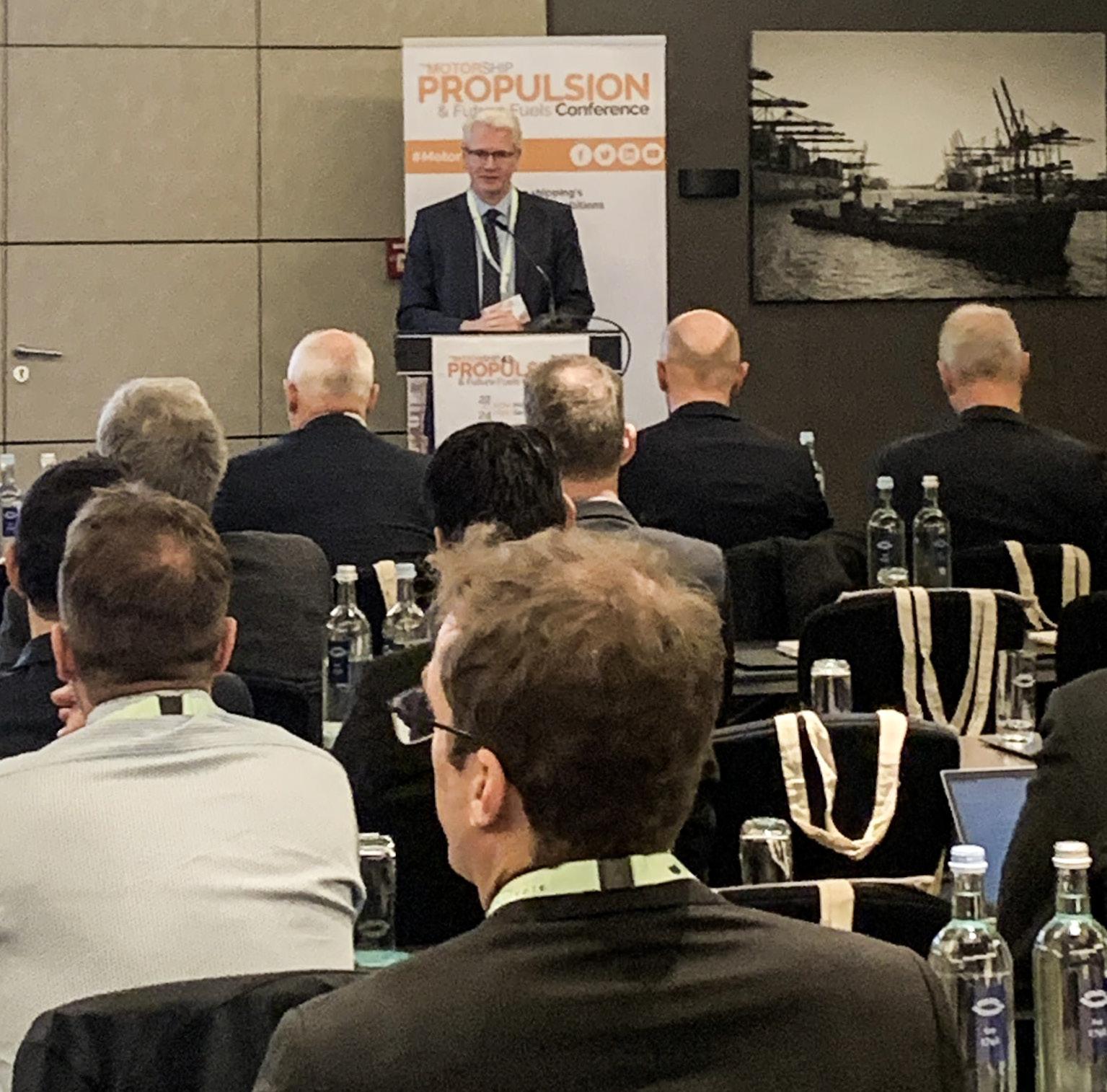
Green methanol is a crucial alternative fuel for the maritime sector to reach its decarbonization targets and the leading choice for the industry today. Drawing on OCI’s position as the world’s largest green methanol producer through its OCI HyFuels brand, Barend will share recent experiences supplying and bunkering the world’s first green methanol powered container ship and highlight what more needs to be done.
12:15-13:45 Lunch & Networking
Book online at motorship.com/PFFBOOK or fax form to +44 1329 550192 For further information please call +44 1329 825335 or email conferences@propulsionconference.com Book online at motorship.com/PFFBOOK or fax form to +44 1329 550192
11.55-12.15 Q&A
11.55-12.15 Q&A
SESSION 6
13:45-15.05
SESSION 6.1 HYDROGEN
Moderator: Lars Robert Pedersen, Deputy Secretary General, BIMCO
New Rules – Handling Liquid Hydrogen Safely
Rolf Stiefel, Country Chief Executive, Bureau Veritas
Marine & Offshore for Central Europe
Hydrogen is both explosive and highly flammable, and it is vital that the right safeguards are in place to ensure its safe storage and use on board. New BV Rules on hydrogen will provide the industry with guidelines that keep seafarers and vessels safe.
Michael North, Commercial Manager, Norway
Lloyd’s Register
“MS NH3 Kraken” Worlds first vessel powered by ammonia.
Mr Christian W. Berg, Managing Director, Amogy Norway
A powerful, clean energy solution that’s affordable, accessible, and storable. Amogy will enable the Shipping Industry to completely de-carbonize and the Offshore Fleet are first movers and have started the adoption of Amogy’s technology.
Containerized marine fuel cell system
Sami Kanerva, Global Product Manager, ABB Marine & Ports
Containerized marine fuel cell system comprises type approved fuel cell modules, internal piping, required auxiliaries and safety systems. Designed for abovedeck installation, it provides a feasible solution to decrease the carbon intensity of existing vessels under stringent emission control requirements.
15:05-15:35 Coffee & Networking
SESSION 7
15:35-16.55
SESSION 7.1 RETROFIT
Moderator: Lars Robert Pedersen, Deputy Secretary General, BIMCO
Achieving EEXI and CII compliance with energy efficiency technologies:
Alessandro Castagna, Sales Manager / Naval Architect, Sales Department, Becker Marine Systems GmbH
The installation of propulsion improving energy efficiency devices (ESD) is proven to be one of the most suitable solutions in terms of cost and efficiency gain.
ESDs like the Becker Mewis Duct® and Becker Twisted Fin® have a direct impact on the calculation of the EEXI (increase of Vref) and CII (reduction of fuel consumption and consequently CO2 emissions), improving the rating and helping shipping companies to reach compliance and to stay operationally competitive
SESSION 6.2 CARBON CAPTURE
Moderator: Sebastian Ebbing, Technical Advisor, German Shipowners’ Association
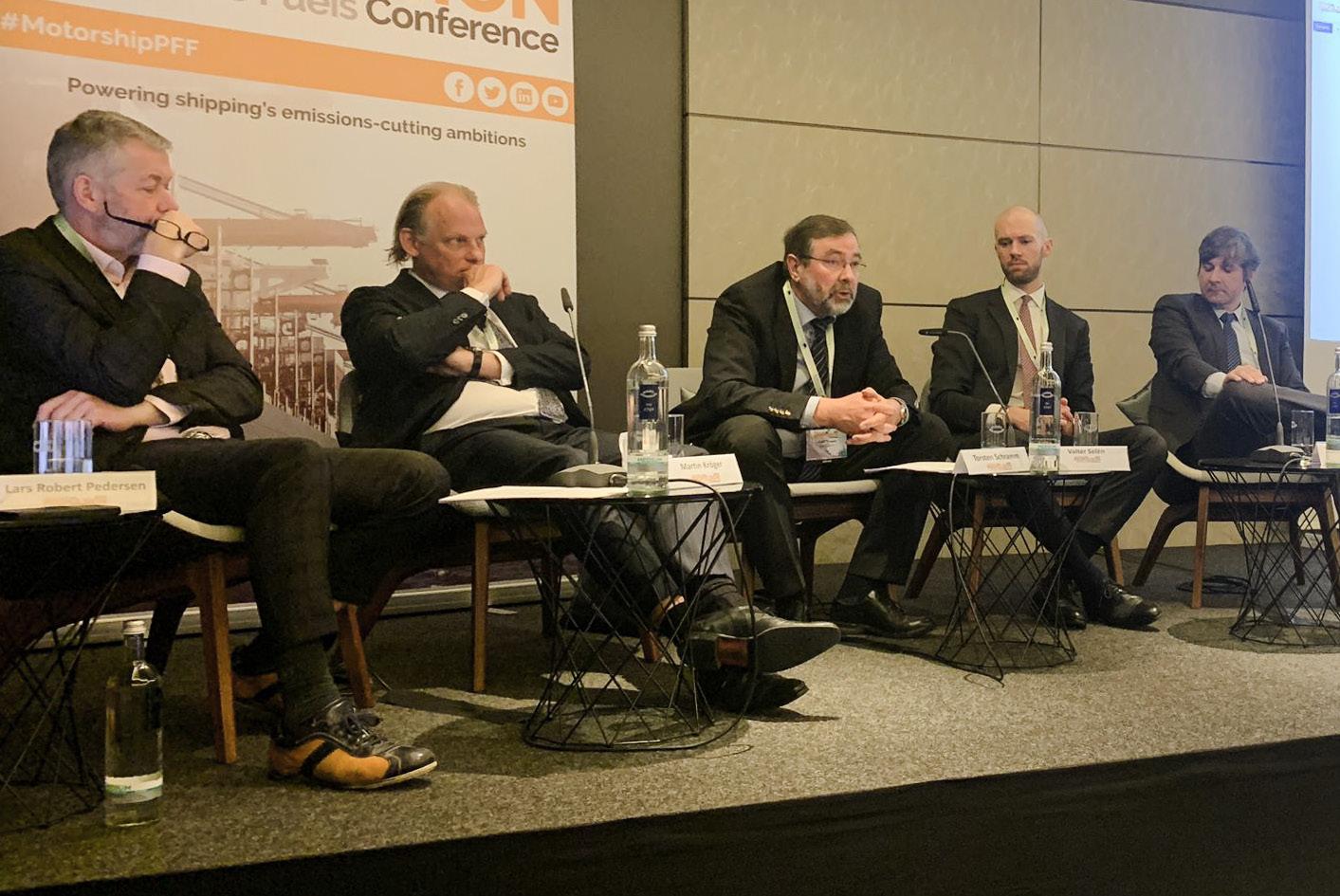
Will Pre-Combustion Carbon Capture Systems
Applied to LNG Carriers and Containerships be an Option to Reduce CO2 emissions?
René Sejer Laursen, Director, Fuels & Technology, ABS
Regulatory issues
Sebastian Ebbing, Technical Advisor, German Shipowners’ Association
Alfa Laval Mid Europe*
Knutson NYK*
Port of Hamburg*
SESSION 7.2 ADVANCES IN LUBRICATION
Moderator: Markus Münz, Managing Director, VDMA Large Engines
Assessing Lubrication environmental footprint
Stuart Fuller Lubmarine Market Liaison & Product Manager,
With shipping’s decarbonization journey well under way, Lubmarine Market Liaison & Product Manager, Stuart Fuller, shares key insights on the multiple approaches to reduce fuel consumption on 4S engines. As levels of activity increasingly focus on sustainable operations, the environmental impact of onboard lubrication is also a critical part of how operators transition to a cleaner future today and tomorrow.
Book online at motorship.com/PFFBOOK or fax form to +44 1329 550192 For further information please call +44 1329 825335 or email conferences@propulsionconference.com Book online at motorship.com/PFFBOOK or fax form to +44 1329 550192
14.45-15.05 Q&A
14.45-15.05 Q&A
SESSION 7 (CONT)
SESSION 7.1 RETROFIT SESSION 7.2 ADVANCES IN LUBRICATION
Presentation Title TBC
Klaus Rasmussen, Head of Projects and PVU SalesMAN PrimeServ, MAN Energy Solutions
How engine part load optimization can help improve profitability while contributing to CII compliance for merchant marine vessels
Stam Achillas - Head of Business Development & Sales, 2-Stroke Decarbonisation Solutions, Wärtsilä
Simone Bernasconi - Head of Global Product Line Upgrades, Accelleron
Wärtsilä and Accelleron demonstrate the potential of engine part load optimization for merchant marine vessels in increasing profitability and enhancing regulatory compliance through joint field experience.
Advancements in cylinder lubrication for two stroke engines
Nikolaj Kristensen, Head of R&D, Hans Jensen Lubricators
Advancements in cylinder liner lubrication technology have led to the development of spray lubrication systems, which offer increased flexibility as a means for reducing consumption, improving engine durability, and preparing for green fuels.
Lubricating the decarbonisation transition
Cassandra Higham, Castrol Global Industrial, Marine & Energy Marketing Director
The emerging expanded fuel mix poses new opportunities and risks, meaning the role of lubricants and lubricant providers within this sustainability-driven market is evolving. Castrol supports customers in smoothly navigating the ever-changing market with digital and human technical expertise.
Sterntubeless vessels with water lubricated bearings – a novel promising design concept
Chris Leontopoulos, Director, Global Ship Systems Center, ABS ABS granted “Approval In Principle” to the Shanghai Merchant Ship Design and Research Institute, SDARI, for a revolutionary vessel design that negates the risk of pollution from oil-lubricated bearing seals and promotes efficient vessel operations. The design, also developed in cooperation with Thordon Bearings, Canada, and the National Technical University of Athens, involves elimination of the sterntube, utilizing seawater for bearing lubrication, and creating an aft chamber to permit in-water maintenance, thus eliminating the need for drydocking or shaft line removal to replace the bearing and/or the seal. This promises significant efficiencies and substantial cost savings for most vessel types.
16.35-16.55 Q&A
16:55-17:10
17:10
16.35-16.55 Q&A
Conference Wrap up with Moderators and Chairmen
Lars Robert Pedersen, Deputy Secretary General, BIMCO
Sebastian Ebbing, Technical Advisor, German Shipowners’ Association
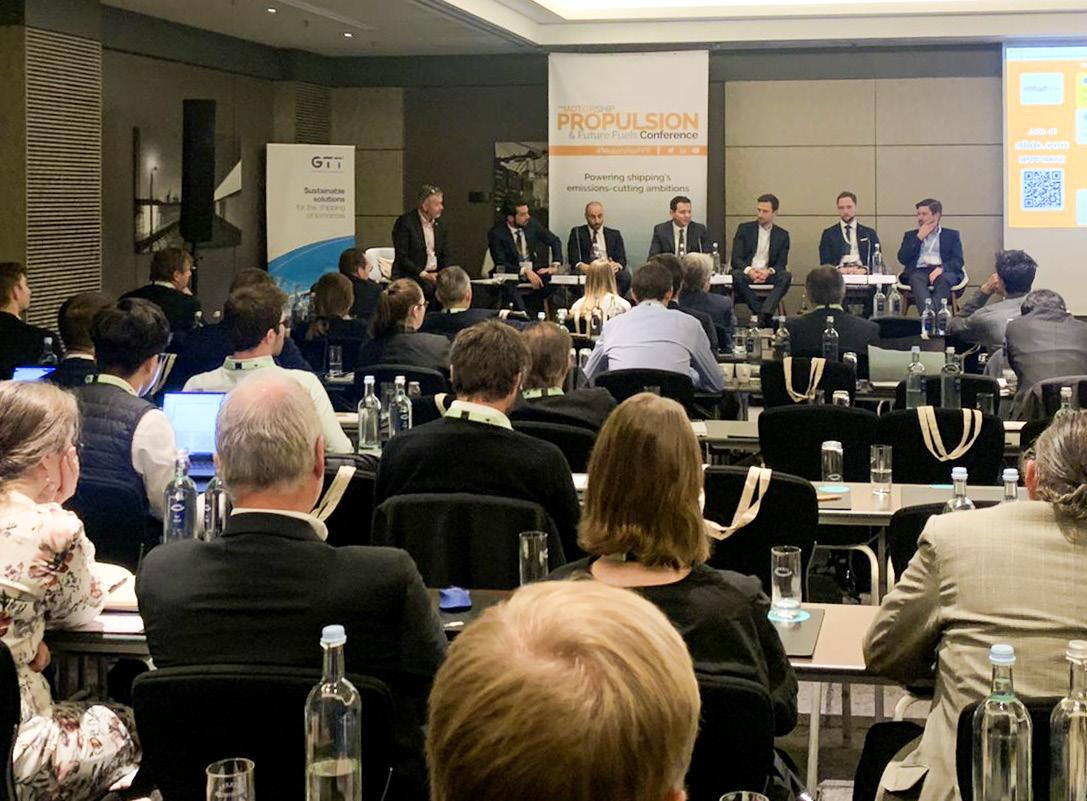
Markus Münz, Managing Director, VDMA Large Engines
Conference Close
DAY THREE - THURSDAY 23
2023 - TECHNICAL VISIT
Book online at motorship.com/PFFBOOK or fax form to +44 1329 550192 For further information please call +44 1329 825335 or email conferences@propulsionconference.com Book online at motorship.com/PFFBOOK or fax form to +44 1329 550192
*Invited
Lloyd’s Register
NOVEMBER
For further information please call +44 1329 825335 or email conferences@propulsionconference.com
Conference Fee
Cost per delegate Premium rate: €2475/ £2,100
Premium fee includes:
• Conference Attendance with lunch and refreshments on both days
Full documentation in electronic format
Place at drinks reception (21 November)
• Place at conference dinner (21 November)
• Place at technical visit (23 November)
Cost per delegate Standard rate: €2,380/ £2,000
• Group booking discounts available Special rate available for recognised educational establishments & ship operators
Please contact us for details
Booking Online propulsionconference.com or complete and fax the booking form below to +44 1329 550192. On receipt of your registration, you will be sent
Contact Us
For further information on exhibiting, sponsoring, or attending the conference, contact the Events team on: +44 1329 825335 or conferences@propulsionconference.com
Venue
Empire Riverside Hotel Hamburg, Bernhard-Nocht-Straße 97, 20359 Hamburg, Germany
Visit propulsionconference.com
BOOKING FORM
44TH
23 TO NOV 202 3 21 Hamburg Germany
BOOK ONLINE OR COMPLETE THIS FORM AND FAX TO +44 1329 550192
(Please copy this form for additional delegates)
Please tick all that apply :
Please register me for the Propulsion and Future Fuels Conference 2023 . I will attend the following:
Conference Dinner (21st November 2023 )
Technical Visit (23 November 2023)
Members of supporting associations will receive up to 50% off your delegate booking.
2023
Bank Transfer: Mercator Media Ltd, HSBC Bank plc, EURaccount, Sort Code: 40-12-76, Account number: 70235247
SWIFT/BIC8: HBUKGB4B BRANCH BIC11: HBUKGB41CM1 IBAN: GB35HBUK40127670235247
Prepayment is required in full for entry to the conference. Full terms & conditions are available at mercatormedia.com/our-business/terms-and-conditions
Credit/Debit Card: Complete the form with your card details
I have paid by bank transfer
Card Number
Expiry Date
Security Code
Please fax form. Do not send by email as we cannot guarantee the security of card information.
Please charge my card (delete as appropriate) Mastercard/Visa/Amex
Name on Card
HOW TO PAY *UK registered companies will be charged the standard rate UK VAT Signature
I am a member of SPACE AT THE CONFERENCE IS LIMITED – RESERVE YOUR PLACE TODAY! Book online at
Credit Card Billing Address
https://www.mercatormedia.com/terms-conditions-1
Book online at motorship.com/PFFBOOK or
fax form to +44 1329 550192
Company
Country Telephone Fax Email Signature
Company VAT No.
Family Name First Name Title Mr/Mrs/Ms/Dr/Other
Job Title
Company Address
booking
Registered in England. Company Number 2427909. Mercator Media Ltd reserve the right to alter the timing, content or speeches of this conference at any time. Full terms & conditions are available at
propulsionconference.com or fax
form to +44 1329 550192
(3 Numbers on the reverse/ AMEX 4 numbers on front)
Further information call +44 1329 825335 or email conferences@propulsionconference.com. Book online at propulsionconference.com
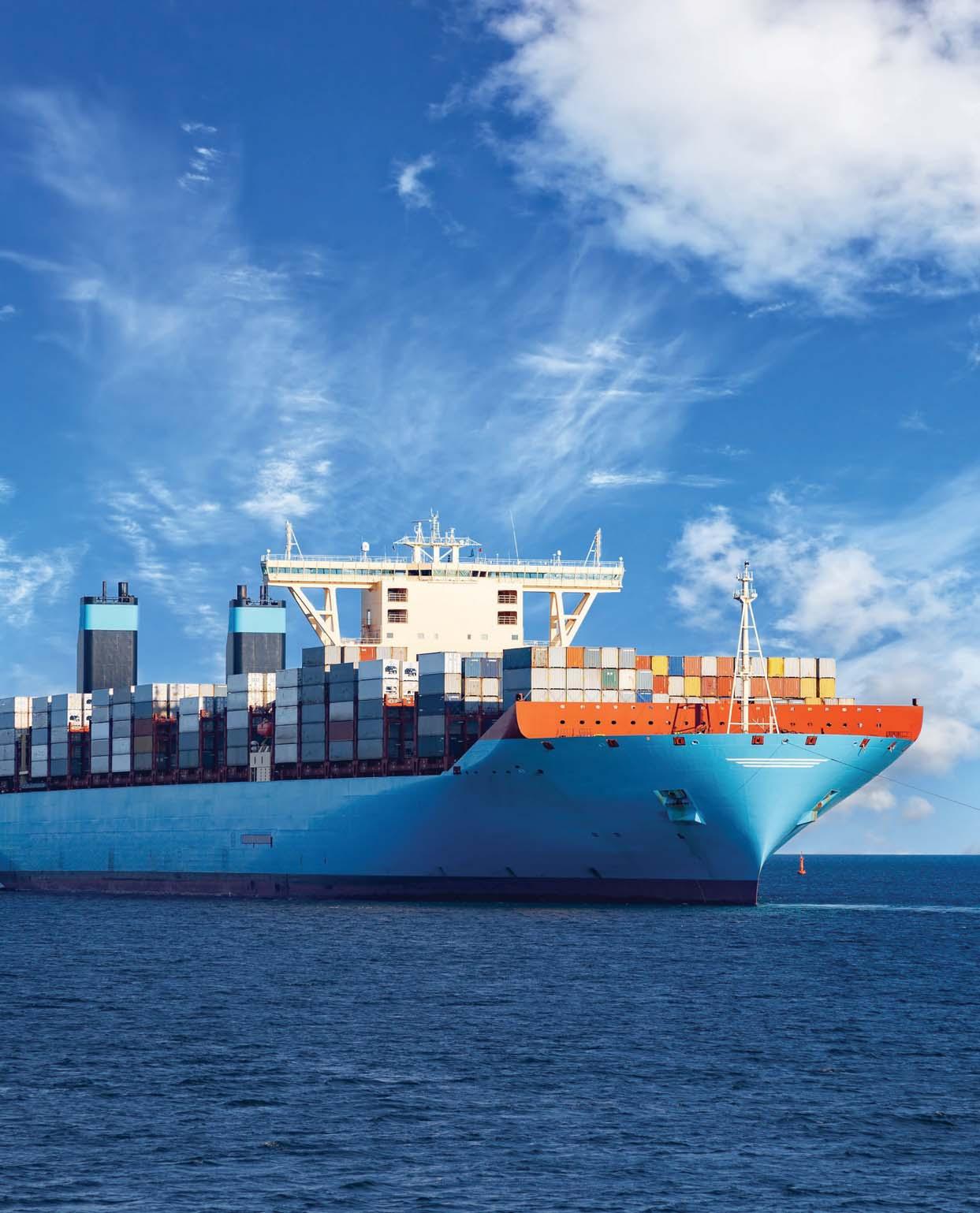





Visit motorship.com Email subscriptions@mercatormedia.com Or Call +44 1329 825335 For multiple users or site access, email corporatesubs@mercatormedia.com port and terminal professionals around the world Informing over For full online access SIGN UP FOR FREE GET FULL ONLINE ACCESS! Unlock full access to The Motorship today with our free website registration. The Motorship is a all those connected to the industry. •Instant access to industry news •Expert opinion •Monthly features •Weekly eNewsletter CONTACT DETAILS: ENQUIRE TODAY FOR CORPORATE SUBSCRIPTIONS MAN AEngine: GTT interview: Digital and H2 pillars SeaTech Project: Transient control Flapping foil redux: Forty year update MAN ME-GA upgrade Vol. 104 Issue 1211 TECHNOLOGY TRENDS Exploring the Future of Maritime Innovation ABS Explores The Future Of Cutting Edge Maritime Technology
to prevent leakage
•Marine engineering consultancy








•Project management
•Service contracts
Maintaining the highest possible standards for our customers. Service, upgrades and retrofits. ● Governors / Actuators
● Support for all Viking based products and our new simple to install Viking352G upgrade pack (below)

● Spare parts & Service
● OEM quality overhauls and service exchange units

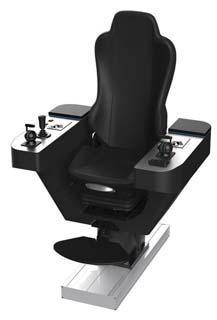
● Propulsion Controls
● Generator Controls
● Power Management

● Turbocharger Condition Monitoring systems




Regulateurs Europa Limited Port Lane, Colchester. CO1 2NX UK Phone +44 (0)1206 799556 Fax +44 (0)1206 792685Email sales@regulateurseuropa.comWeb www.regulateurseuropa.com
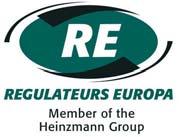
Is your damper providing engine protection?
Torsional Vibration Dampers


Maintenance and Repair of Crankshaft

Torsional Viscous Vibration Dampers

Tel: +44 (0)1422 395106
Fax: +44 (0)1422 354432 davidwhitaker@metaldyne.com www.metaldyne.co.uk








Formerly Simpson Ind - Holset Dampers
LUBRICANTS
Explore our range of innovative, high performance and Environmentally Acceptable Lubricants,


44 | SEPTEMBER 2023For the latest news and analysis go to www.motorship.com PRODUCTS & SERVICES DIRECTORY BRIDGE EQUIPMENT Tel: +49-2938-98769-0 info@chair-systems.com http://www.pilotchairs.com
THE COMFORTABLE 9 High quality upholstery with individual logo stitch (optional) 9 Adjustable armrests 9 Variable seat depth 9 Infinitive height adjustment of the seat top 9 Seat angle adjustment 9 Length adjustment of the seat top
&
DAMPERS CONTROL & MONITORING BEARINGS CONTROL & MONITORING EMISSION CONTROL
NAUTIC PRO
FUELS
OILS
atzmartec.com Experts
in marine engineering equipment •Bilge water monitors & filtration •Seals and bearings •Dry dock services •Underwater repairs •Additives
delivered with an unparalleled level of personal service. For more information please contact us at Vickers Oils 6 Clarence Rd, Leeds, LS10 1ND, UK Tel: +44 (0)113 386 7654 Fax: +44 (0)113 386 7676 Email: inbox@vickers-oil.com Web: www.vickers-oil.com TRUSTED FOR GENERATIONS MAINTENANCE 30 60 PROPULSION AEGIR-MARINE, BUILT ON SERVICE Call us at +31 343 432 509 or send us an email: info@aegirmarine.com
measurement, optimization and monitoring solutions for fuel oils. info@aquametro-oil-marine.com www.aquametro-oil-marine.com For more information visit: seawork.com contact: +44 1329 825335 or email: info@seawork.com 11 13 TO JUNE 2024 Southampton United Kingdom Seawork directory indd 1 25/07/2023 11:27
Reliable












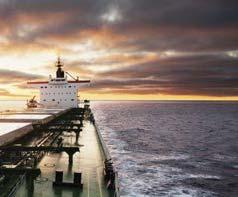
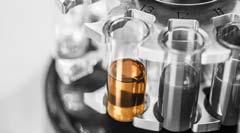

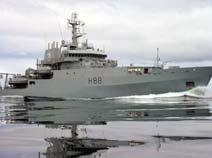



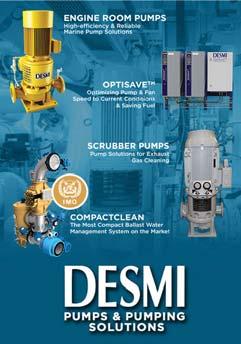


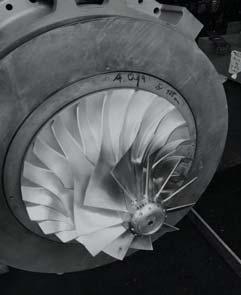








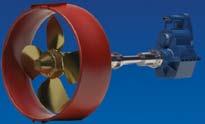

For the latest news and analysis go to www.motorship.com SEPTEMBER 2023 | 45 PRODUCTS & SERVICES DIRECTORY SPARE PARTS High quality underwater repairs Hydrex offers underwater repair solutions to shipowners around the globe. Our experienced teams are qualified to perform all class-approved repair procedures in even the harshest conditions. Hydrex headquarters Phone: +32 3 213 53 00 (24/7) E-mail:hydrex@hydrex.be www.hydrex.be Hermann-Blohm-Str. 1 · D-20457 Hamburg Phone +49 40 317710-0 · Fax +49 40 311598 E-mail info@nds-marine.com www.nds-marine.com Our reliability.Your move. Big enough to handle it Small enough to care Your Ship Repair Yard in Lisbon Estaleiro da Rocha Conde de Óbidos 1399 –036 Lisboa –PORTUGAL Tel. Yard (+ 351) 213 915 900 www.navalrocha.com navalrocha@navalrocha.pt TESTING & ANALYSIS SHIPREPAIR TEMP CONTROL TURBOCHARGERS WASTE WATER ENGINEERING CO. LTD. TEMPERATURE CONTROL VALVES Comprehensive range of 3-way Valves suitable for Fresh Water, Lubricating Oil and Sea Water Systems Wide choice of materials. Robust construction, low maintenance, simple to use and cost effective method of temperature control Tel: +44 (0) 1727 855616 Fax: +44 (0) 1727 841145 E-mail: Sales@waltonengineering.co.uk Website: www.waltonengineering.co.uk DIRECT • PNEUMATIC • ELECTRIC • GAS PRESSURE OPERATED VALVES Start Systems for Two and Four-Stroke Engines Please visit: www.seitz.ch LABORATORY ANALYSIS FOR THE MARINE INDUSTRY Tel: +44 (0) 1256 704000 Email:enquiries@spectro-oil.com Web: spectro-oil.com For more information contact us Phone: +44 141 880 6939 Email: mrhmarineoff@btconnect.com Or visit: www.mrhmarine.com Jets AS Vacuum Toilet Systems and STP’s, Jowa Water Handling Systems, Libraplast A60 Doors, Metizoft Green Passport Solutions, Modular Wet Units, Vacuum Pipe De-Scale Solutions and all kinds of bathroom and plumbing accessories you may require for any vessel 10 30 60 70 70 2950 SW 2nd Avenue Ft. Lauderdale, FL 33315 Toll free: 877-887-2687 Telephone: 954-767-8631 Fax: 954-767-8632 Email: info@turbo-usa.com www.turbo-usa.com Installing Turbocharger Confidence TURBOCHARGERS ABB Turbo MarineCare Predictability in a changing world Full range of CP Propulsion Systems • Reduction Gearboxes 150 • 12000 kW • PTO - PTI and 2 - Speed solutions • 3 - 4 and 5 bladed CP Propellers Ø1-6m dia • Fifth Generation Electronic Remote Controls • Nozzles NACA 19A Finnøy High Speed Finnøyveien 195 6487 Harøy NORWAY (+47) 712 76 000 post@finnoygear.no PUMPS PROPULSION
MORE PROPELLERS PLEASE
The international magazine for senior marine engineers
EDITORIAL & CONTENT
Editor: Nick Edstrom editor@mercatormedia.com
Correspondents
Please contact our correspondents at editor@motorship.com
Bill Thomson, David Tinsley, Wendy Laursen
SALES & MARKETING
Brand manager: Sue Stevens sstevens@mercatormedia.com

Tel: +44 1329 825335
Production
David Blake, Paul Dunnington production@mercatormedia.com
EXECUTIVE
Chief Executive: Andrew Webster awebster@mercatormedia.com
In The Motor Ship, September 1973 issue, the main editorial leader commented on the growing interest in multi-screw ships.
Following many years of warnings that the increasing size of large tankers would herald the end of the traditional single-propeller installation, which, as well as being cheaper, enjoyed better propulsive efficiency, makers of propellers and stern gear had managed to keep up with the developments. But with increasing beam and higher speeds the single-prop advantages were becoming less significant, and the need for reliability, not to mention the draught limitations of ships with enormous propellers, was coming to the fore.
And not only large tankers. The relatively novel container ships were gaining size and speed, with twin- or triple-screw installations becoming more usual. These had the advantage that individual engines could be uncoupled, allowing maintenance under way as well as potential fuel savings.
A survey in this issue of large, multi-screw container ships showed some 38 such vessels in service and a further six on order. ‘Large’ in 1973 meant capacity of about 1500 TEU and above – such has the sector advanced that vessels of ten times that capacity and more are now sailing. Interestingly steam turbine propulsion far outnumbered low speed diesel – there were even four with twin gas turbines.
Despite this interest, the main ship description concerned a series of eight product tankers, of 30,000 dwt/41,310m3 capacity. These 170.72m long ships were being built for Canadian Pacific at Van der Geissen-Noord in the Netherlands. Vessels of this size were considered the most popular worldwide, comprising half of the global tanker orderbook. The vessel described, the W.A. Mather, was conventionally powered by a single B&W 6K974EF low-speed engine rated at 12,200 bhp at 130 rpm, giving a service speed of 15.5 knots. Being designed for carriage of highly flammable liquids, fire safety was a major
consideration, with automatic foam, CO2 and sprinkler systems protecting the cargo and machinery spaces. Other notable features included a total of 21 cargo tanks, coated in 300-micron think epoxy, with four steam-driven cargo pumps equipped for priming and stripping the cargo system, and able to handle four different grades of liquid at a time.
Another standard design, also being built in an eight-ship series, was a car/bulk carrier, with designation 37 CBC5, designed and built by the Sanoyasu Dockyard in Japan. As well as normal bulk cargoes, four of the five holds were fitted for loading cars on demountable decks via a drive-on drive-off system. Some 2100 vehicles could be carried on nine tiers – eight portable decks and the tank top. Vehicles were loaded and unloaded via water-tight side ports and bulkhead doors. Four 8-ton deck cranes were fitted to handle the car-carrying equipment, which could be stowed on deck when bulk cargoes were carried. These vessels were powered by Sumitomobuilt Sulzer 7RND76 engines of 12,600 bhp for a service speed of 15.1 knots. Fuel consumption of 45t/ day gave an endurance of about 17,500 miles.

The ascendancy of medium speed power continued, giving rise to an expansion of Pielstick engine production, namely a newly-extended facility for Swedish licensee Lindholmen to meet demand for the new PC3 engines. The company had an order backlog of some 24 engines as of June 1973, 10 of which were PC3 type: eight 12PC3V units for two Tor Line ferries and two 18PC3V for a power station. The new factory would be capable of building and testing up to 25 PC3 engines per year.
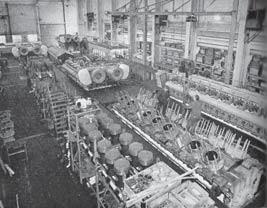
Finally, Australia’s highest-powered diesel engine – a Sulzer 7RND90 for a newbuild tanker – was about to be delivered from the Commonwealth Government works at Melbourne.
TMS magazine is published monthly by Mercator Media Limited Spinnaker House, Waterside Gardens, Fareham, Hampshire PO16 8SD, UK
t +44 1329 825335
f +44 1329 550192
info@mercatormedia.com www.mercatormedia.com
Subscriptions
Subscriptions@mercatormedia.com
Register and subscribe at www.motorship.com
1 year’s digital subscription with online access £222.00
For Memberships and Corporate/multi-user subscriptions: corporatesubs@mercatormedia.com
46 | SEPTEMBER 2023For the latest news and analysis go to www.motorship.com 50 YEARS AGO
© Mercator Media Limited 2023. ISSN 0027-2000 (print) ISSN 2633-4488 (online). Established 1920. The Motorship is a trade mark of Mercator Media Ltd. All rights reserved. No part of this magazine can be reproduced without the written consent of Mercator Media Ltd. Registered in England Company Number 2427909. Registered office: Spinnaker House, Waterside Gardens, Fareham, Hampshire PO16 8SD, UK
8 Container ship Selandia had a triple-screw B&W propulsion system of 75,000 bhp. Inset: Pielstick engine assembly at Lindholmen
Seawork celebrates its 25th anniversary in 2024!
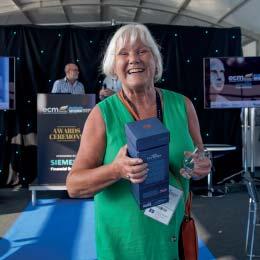
The 25th edition of Europe’s largest commercial marine and workboat exhibition, is a proven platform to build business networks.
Seawork delivers an international audience of visitors supported by our trusted partners.
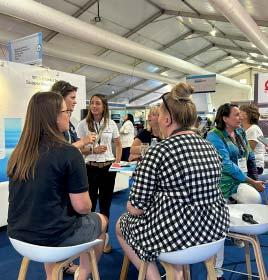


Seawork is the meeting place for the commercial marine and workboat sector.

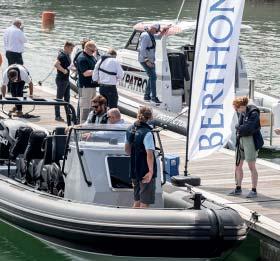
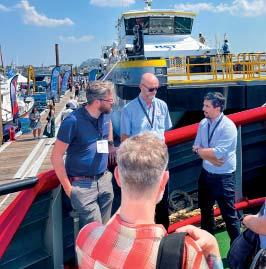
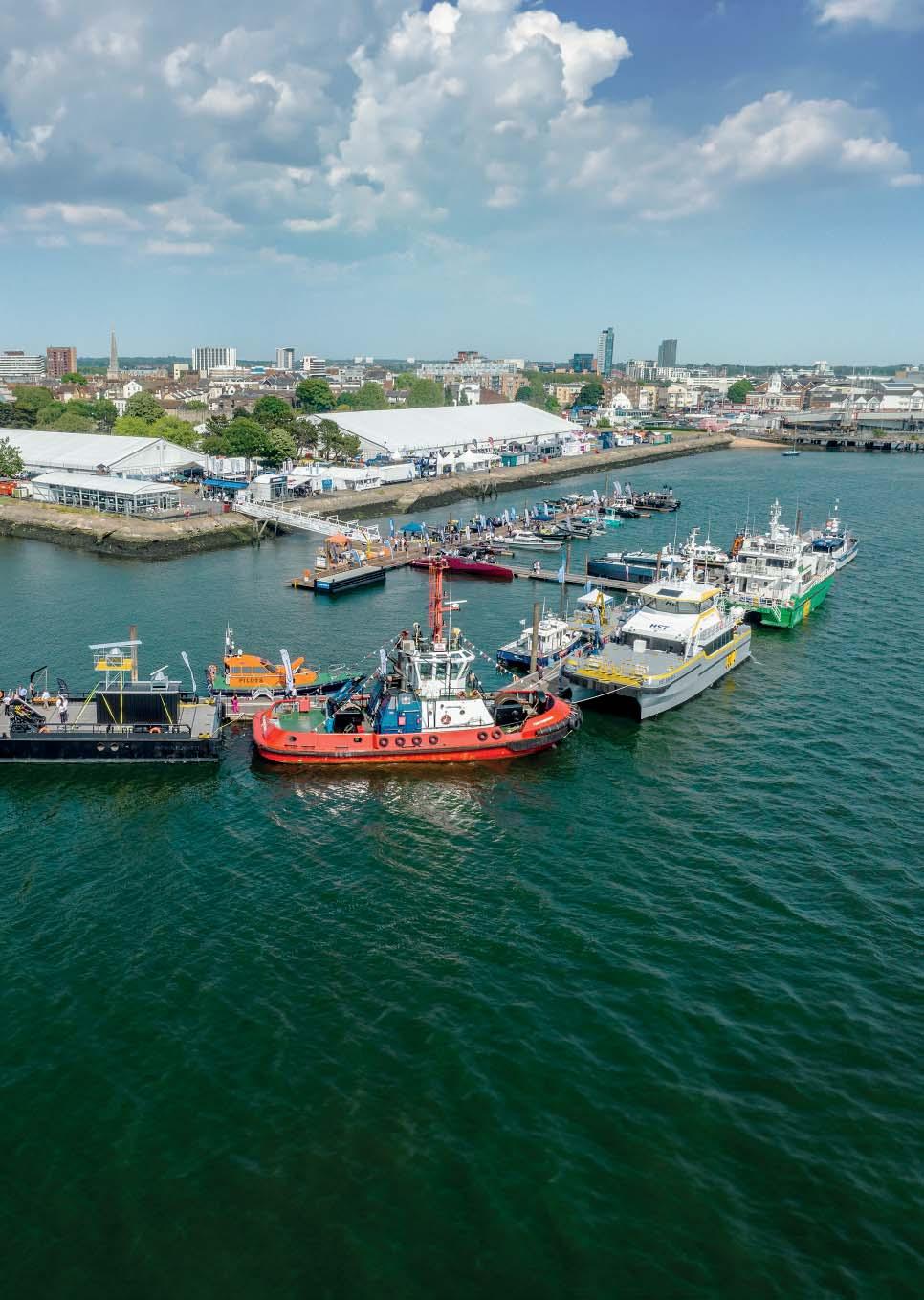
12,000m2 of undercover halls feature 400 and equipment on the quayside and pontoons.
Speed@Seawork on Monday 10 June in vessels operating at high speed for security interventions and Search & Rescue.
For more information visit: seawork.com contact: +44 1329 825 335 or email: info@seawork.com
The European Commercial Marine Awards (ECMAs) ceremony celebrates individuals and innovative companies on Tuesday 11 June.
experts, helps visitors to keep up to date with the latest challenges and emerging opportunities.
The Careers & Training Day on Thursday 13 June 2024 delivers a programme focused on careers in the commercial marine industry.
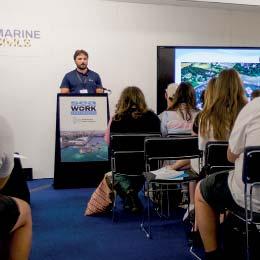
JUNE Southampton United Kingdom 11 13 TO
partner MARITIMEJOURNAL COMMERCIAL MARINE BUSINESS
SIGN UP TODAY #Seawork Media
Speed@Seawork
Sea Trials & Conference
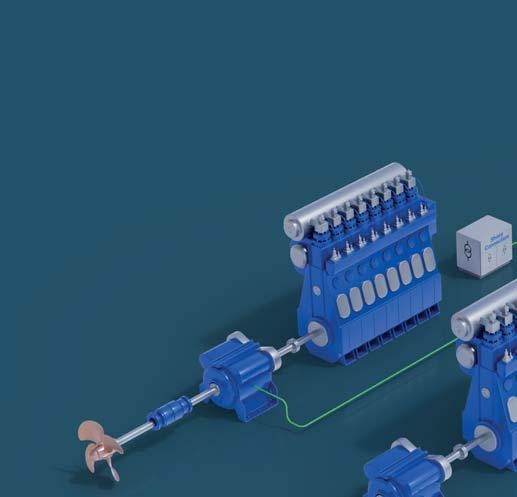
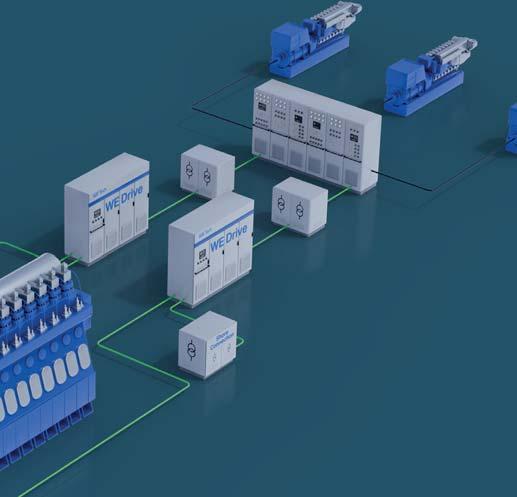


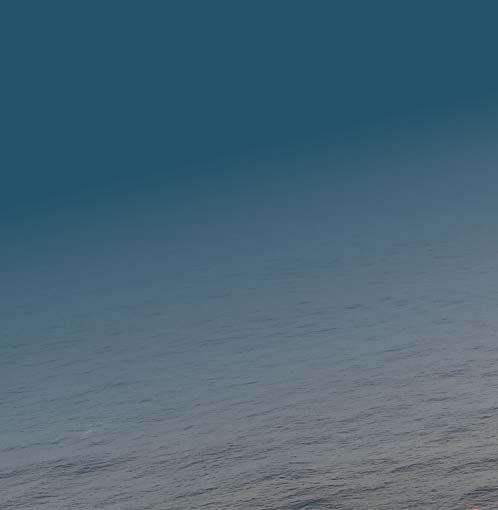
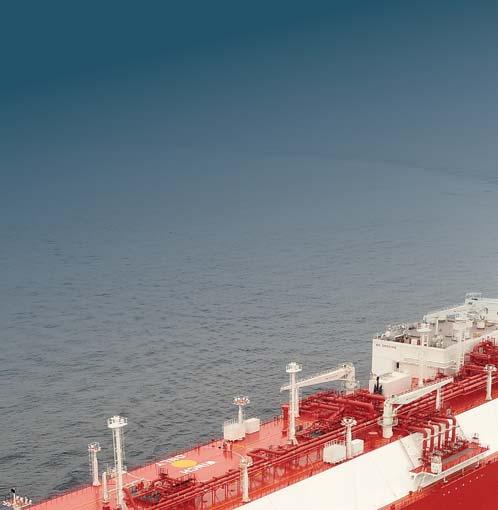

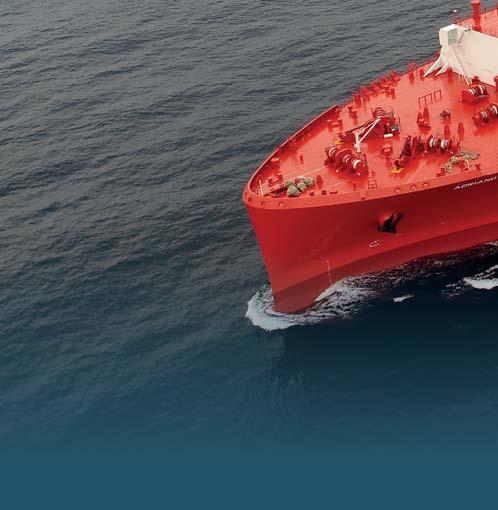
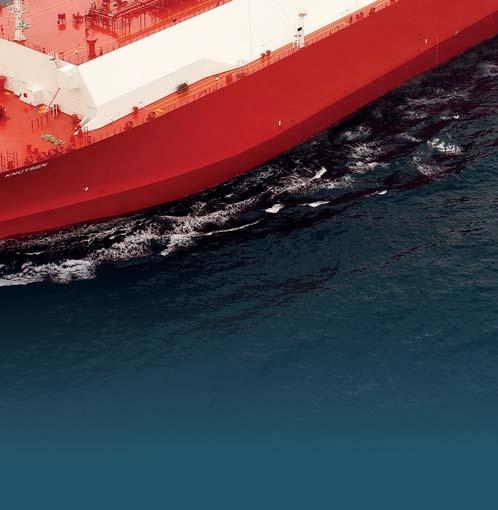

























 Dr Ebbinghaus: Shell leader’s overview
ME-GA-opti: DF fuel efficiencies
Dr Ebbinghaus: Shell leader’s overview
ME-GA-opti: DF fuel efficiencies































































































































 8 Thomas S Hansen Head of Promotion and Customer Support MAN
8 Thomas S Hansen Head of Promotion and Customer Support MAN














































 Tinsley
Tinsley















 Empire Riverside Hotel, Hamburg Conference Programme
Empire Riverside Hotel, Hamburg Conference Programme

















































































